

The True Cost of Living on a Sailboat: Our Monthly Expenses

As an Amazon Associate, we earn from qualifying purchases. We also earn from other affiliate websites. See our full disclaimer .
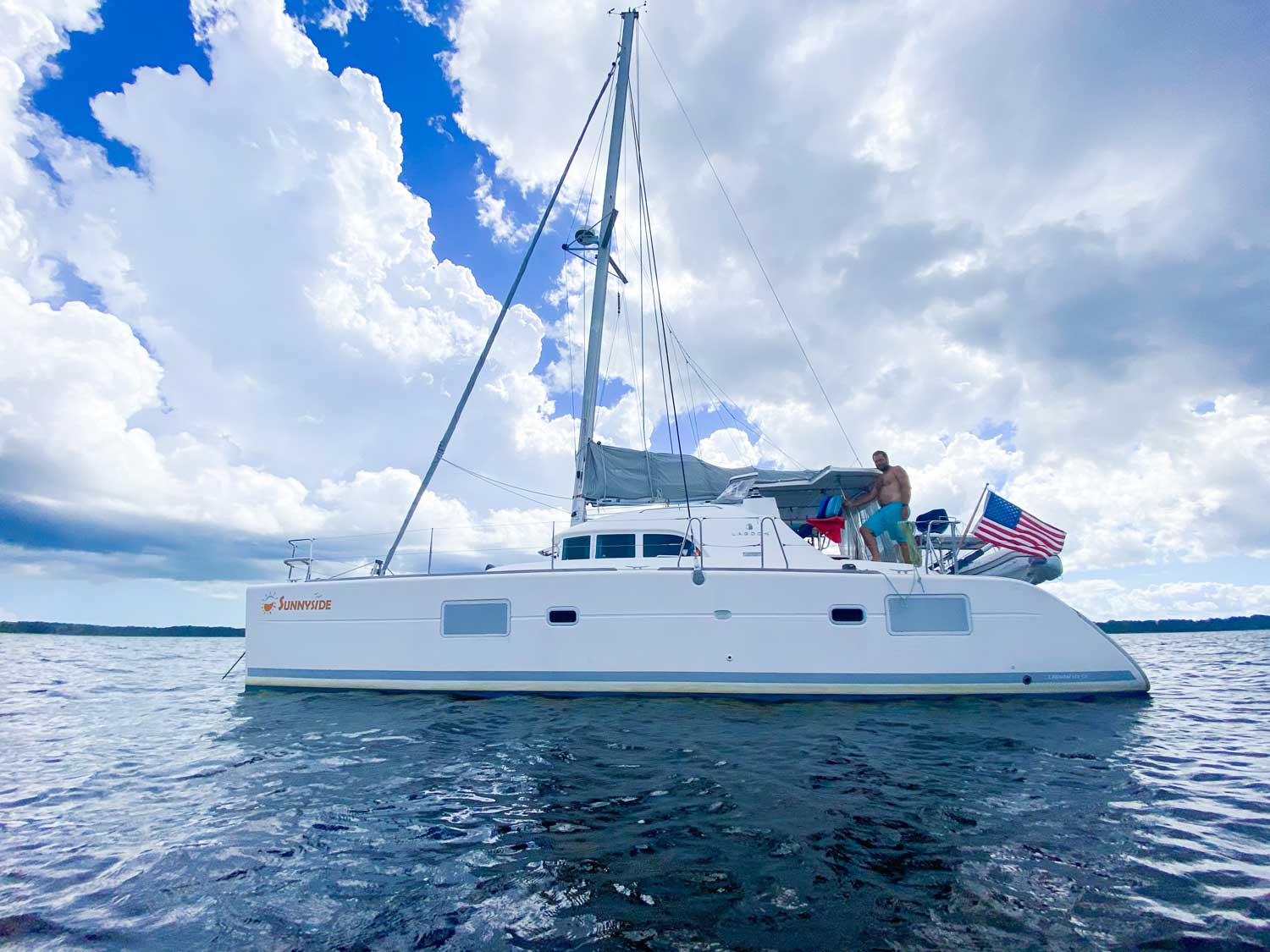
How much does it cost to live on a boat? This was my biggest question when we were planning and saving to cruise. I was clueless when it came to creating a budget for our future life aboard. I was looking for someone to tell me exactly how much it would cost ME to live on a sailboat full-time.
I quickly learned some people cruise for less than $1,000 a month and some for upwards of $10,000 a month. Most are somewhere between.
Not so dissimilar from living on land, different people cruise on all sorts of budgets.
For us, our cost of living on a sailboat isn’t so far from our land-based spending.
Part of this journey was learning to live with less, but we still maintain some creature comforts on the water.
Here is a breakdown of our cost of living on a boat full-time while cruising the US east coast.
Cost to Live on a Sailboat
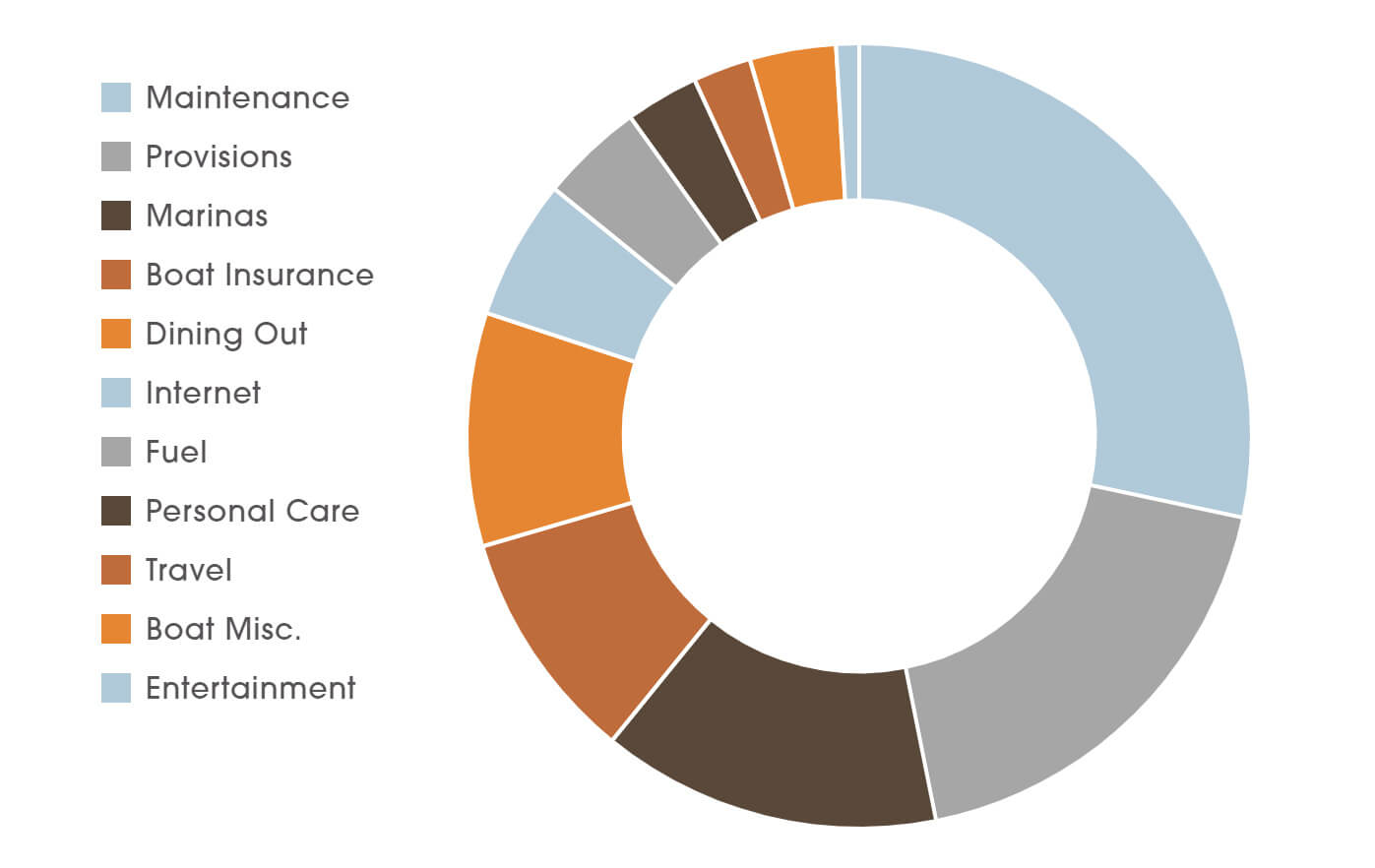
Average cost of $2,424 per month*
Sailboat Maintenance Expenses
Average cost $1,006.
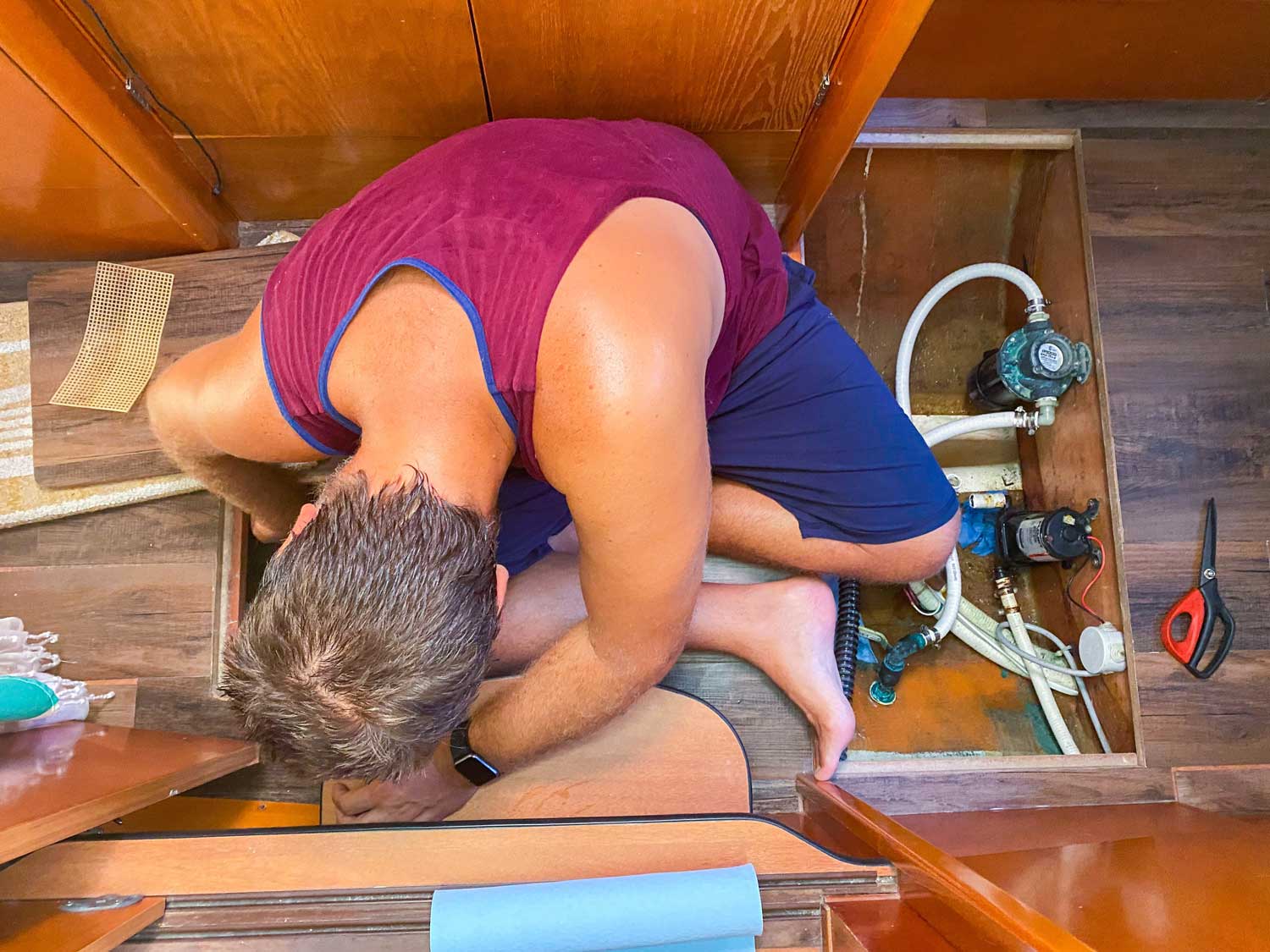
Maintenance, Parts & Tools ($687)
It’s no surprise boat maintenance is top of the list.
You will continuously be fixing broken things or maintaining things on a sailboat. You will also need different tools, spare parts, cleaners, etc., as you cruise.
There will be months when you won’t need much in the way of tools and parts (especially if you already have a lot of tools and spare parts onboard). Then in one month, you might spend 40% of the annual budget.
We make a strong effort to do most boat projects ourselves.
Shortly after we began cruising, our wallets learned the hard truth of paying people to work on your boat.
Since then, we’ve been our own plumber, mechanic, seamstress, and electrician.
You’ll always be learning. But if you can maintain and fix your vessel, you’ll save boatloads of cash (pun intended, I couldn’t resist).
READ NEXT: Check out our 9 Helpful Things You Need in Your Sailboat Tool Kit .
Insurance ($233).
If you are a newbie cruiser, your boat insurance options will most likely be limited. Insurance was a considerable expense in our first year. In our second year, the cost dropped from 2.8% of the boat’s value to 1.3%. (We now have restricted cruising grounds for July – November.)
Do your research and consider using a broker. Get quotes based on where you’ll be cruising and staying in hurricane season.
Miscellaneous ($86)
The miscellaneous category is everything else boat-related. This includes any small purchases we make for the boat (ex. rug for the salon), our USCG documentation, Amazon Prime membership, etc.
We also have a Boat US membership , which more than pays for itself. We get dockage and fuel discounts often. And, of course, the towing service is priceless when you run aground with only one engine. (What, just me?)
For a modest fee, this membership is a no-brainer for boat owners.
Marinas vs. Anchoring
Average cost $339.
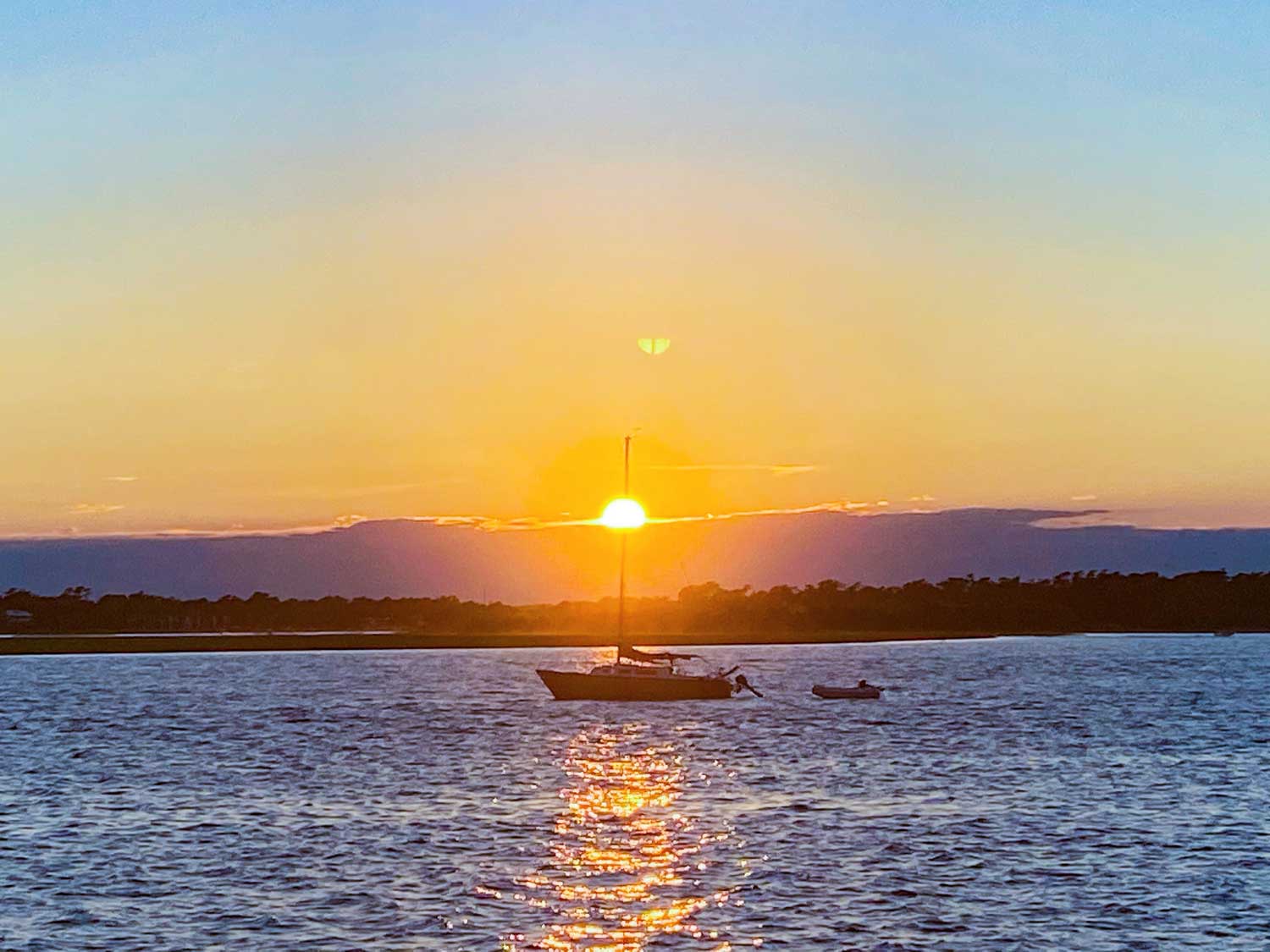
Marina Costs
If you’ve been researching the cost of living on a boat, you know it is more economical to anchor than to dock in a marina slip. We love anchoring out, but it does come with a set of variables that dictate comfort and safety while you’re on the hook. Not to mention, it requires a lot more planning.
Marinas can be expensive, especially in popular cruising areas. Dockage is usually charged per foot, so the bigger the boat, the higher the costs associated with docking fees. However, you can find liveaboard boat marinas with slip fees that are paid monthly.
Many cruisers prefer to dock at a liveaboard marina during hurricane season and save anchoring for cruising season. This allows you to keep your cost per night at marinas down, and your overall costs balance out throughout the year.
READ NEXT: Check out our post on Liveaboard Marinas: Finding the Best One for You .
Anchoring challenges.
Dreaming of our cruising days, I had the idea we would anchor out and rarely pay for marinas.
In reality, that’s not what worked for us out of the gate. Being beginner sailors and newbies to cruising and boats in general – there was an enormous learning curve.
Learning to live this lifestyle is not always easy. And yes, marinas make it easier. Especially when you REALLY need it to be easier.
Anchoring out requires the captain to always be “on”. You must be aware of the weather, wind direction, currents, and tides. You also have to be aware of the boats around you. None of this stops when you leave the boat or when you sleep.
The reality is you need to slowly become more comfortable living on the hook.
With experience, you can build more confidence.
You’ll become more comfortable with boat systems, weather, and making repairs while on the anchor. Conserving power and water becomes more natural, and you learn how to stay warm in the cold and cool off in hot weather. With some practice, you can spend less time (and money) at marinas.
For folks dreaming of this lifestyle, I’m not saying you won’t be able to start living on the anchor immediately. But the stress level accompanying living on the hook will lower with time and experience.
Average Cost $449
Provisions are consistently one of our most significant expenses on the boat.
Anticipating my new life on the water, I knew I wanted to learn more about cooking, baking, and making things from scratch. And since we planned to live on a smaller budget, I also wanted to be conscious of spending on food.
A game I often play with myself is to see how long we can go until the next big provisioning trip.

You might be thinking – that sounds miserable. But we eat pretty darn well most of the time.
We ration veggies and fruits, ensuring we leave the hardiest for last. We start with fresh salads and other raw veggie meals, such as cilantro hummus bowls. As the freshest veggies thin out, we work our way to curries and stir-fries. Then, when the fridge grows empty, we move on to rice and bean dishes, pineapple and jalapeño pizza, and bean tacos with pickled onions and cabbage.
One skillset you develop living on a boat is the ability to eat more sustainably.
Learning to make bread, yogurt, and vegetable broth from scraps is super satisfying.
Spend time learning to make flexible meals. Use a balance of fresh, canned, and dried ingredients. Do this, and you can stretch your provisioning budget without sacrificing flavor.
You can also save money by minimizing disposables, such as paper towels, sandwich bags, plastic wrap, and aluminum foil.
READ NEXT: Check out our ideas for Flexible Meals on a Boat and our Best Zero Waste Swaps for Small Spaces .
Having sundowners is a bit of a staple in the boating community. It’s a common way to meet and greet other boaters in a marina or in an anchorage. Given that, we always like to have a few extra beers onboard or the ingredients for a simple cocktail.
We love good wine, but we managed to find some enjoyable boxed wines. (Bonus, lose the boxes at the dock, and there’s very little trash to contend with.)
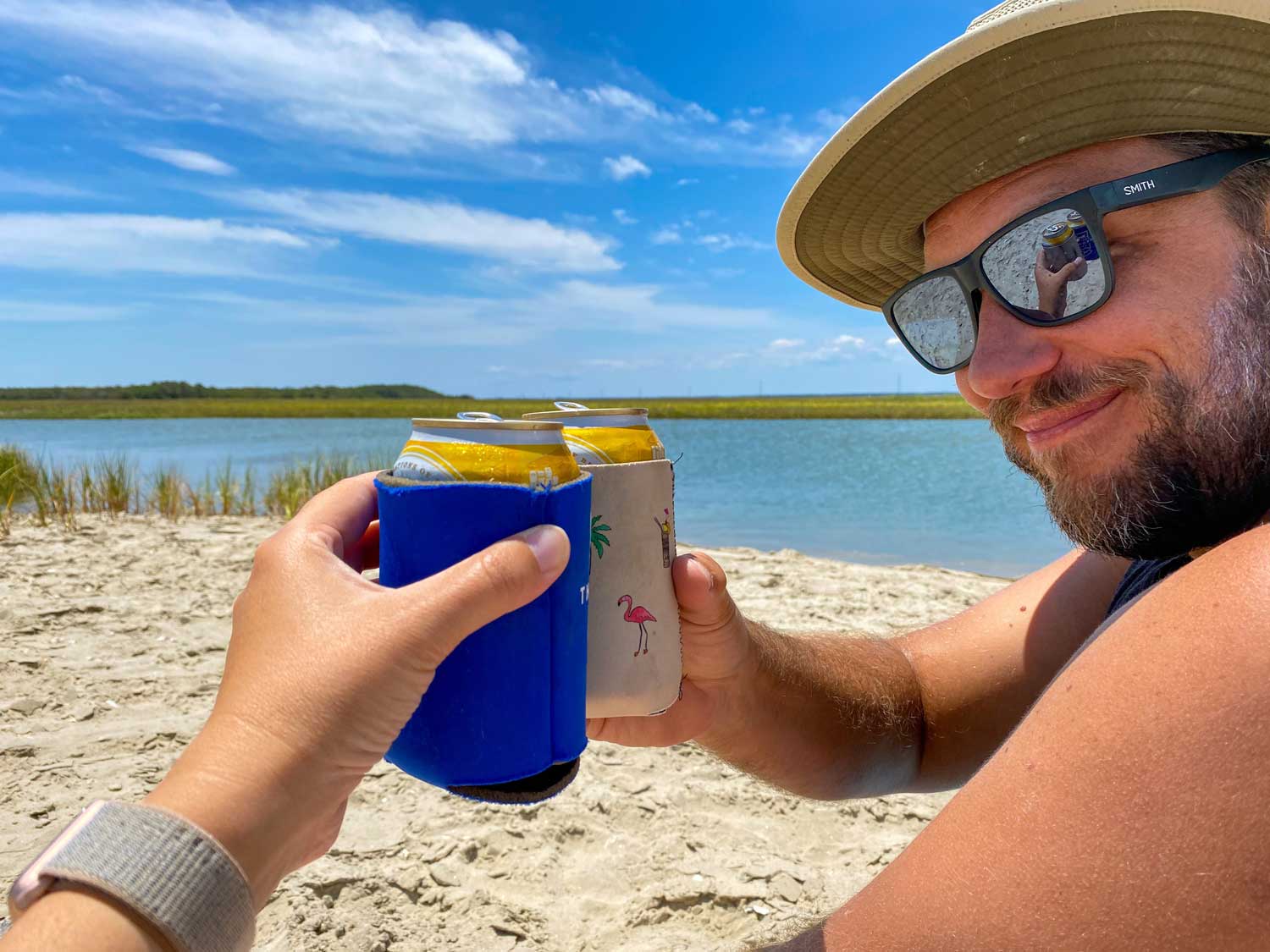
When we find a deal, we stock up on beer. Nothing hits the spot like a cold beer after the anchor drops. We even discovered a reasonably priced rum we enjoy. (No boat is complete without rum!)
Expenses here are based on personal taste. For us, it was possible to have more affordable beverages and still enjoy sundowner traditions!
Average Cost $233

As a couple who dined out regularly in our Colorado ski town, it was going to be tough to start cooking three meals a day living aboard.
I read a lot of advice that said, “if you like eating out, you probably won’t stop eating out because you move on a boat.”
There is truth to this. Whenever we are in a place where eating out is convenient, we tend to fall back into old habits.
However, when we dock in remote places or anchor away from shore access, there is less (or no) opportunity to eat out.
Instead, we experiment with different types of food to make meals onboard rewarding.
We still enjoy going out to experience the local cuisine, but it has become a treat instead of how we live.
A great way to cut costs is by dining out for a late lunch rather than dinner or skipping the alcohol. Opting for a refreshing drink on the trampoline while watching the sunset isn’t a bad way to close out a night.
Average Cost $103
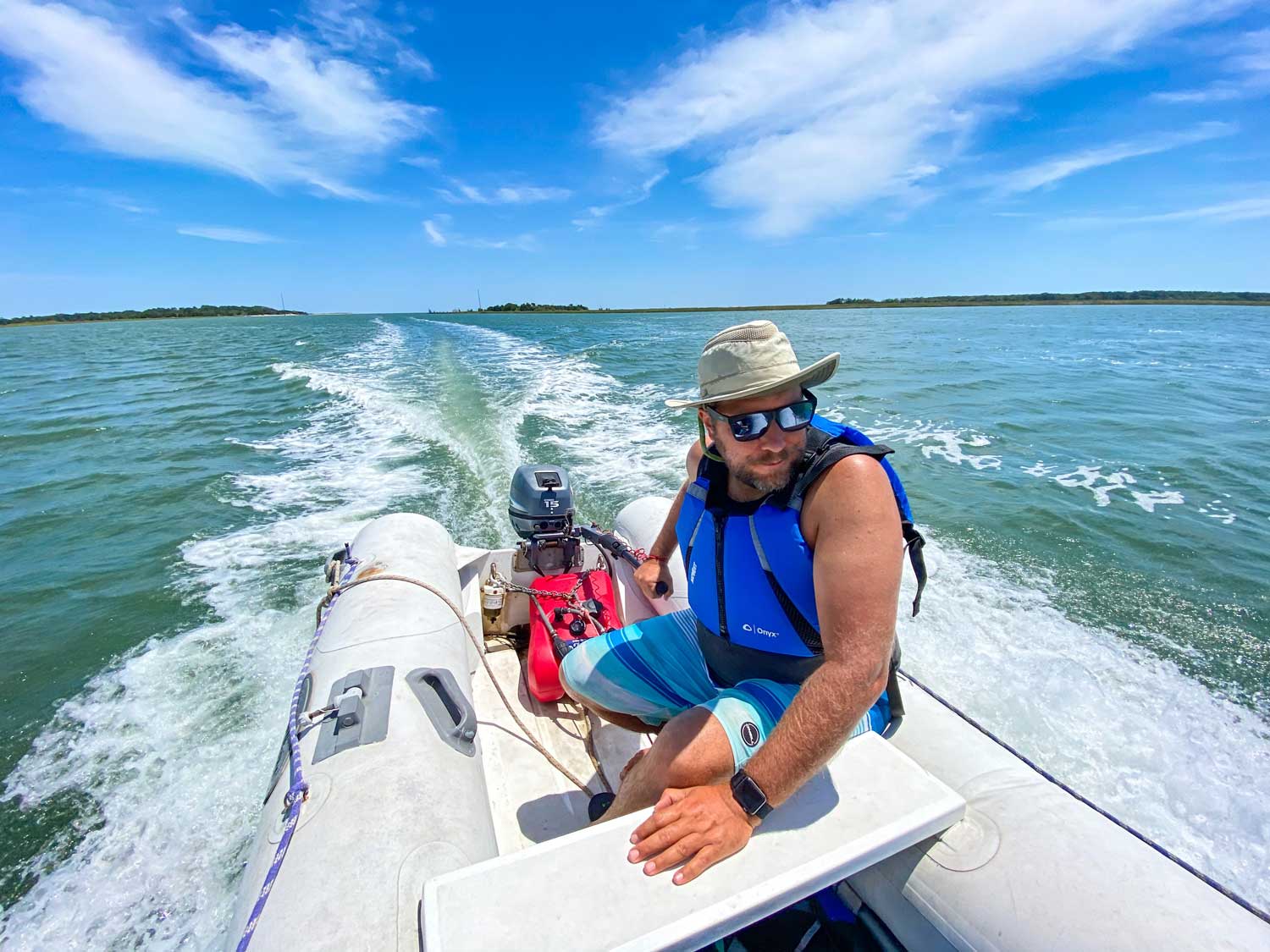
Diesel, gas, and propane are three resources you will continuously be aware of while living on a boat.
Here are a few adjustments we make to maximize our fuel efficiency.
- We use our sails. This isn’t easy as new sailors on a big boat. We have slowly become more confident, but it took us months of traveling on the water to start getting comfortable using the sails. We are still learning.
- We don’t put ourselves in a position where we are in a hurry or have a schedule. This almost always leads to running the engines more.
- We run on one engine. We can run one engine instead of two on our catamaran and only lose about 1 – 1.5 knots. On the ICW, we unfurl the jib to improve speed if the wind is right.
- We always make sure to travel at an optimal time for the current. Some areas of the Intercoastal Waterway can have a current that’s pushing 2-3 knots. Choosing a departure time around the current makes a big difference in travel time and fuel efficiency.
- Heating water with the electric kettle if the engines are running or we are on shore power.
- Using hot water from the engines (when we have it) to get water boiling.
- When cooking pasta, we use a minimal amount of water. We’ll often turn the propane off and let the noodles finish cooking in the hot water.
- Quality cookware makes a big difference. Once brought to a boil, some dishes can finish cooking with the lid on. This is helpful when coming into an anchorage. Often, I’ll kill the propane, and by the time we are anchored, dinner is ready.
- If we plan to make a few trips to shore, we’ll anchor closer to the dinghy dock. This doesn’t always work out, but being conscious of it has helped us stretch our gas budget.
- If it’s a short trip to the dock and we aren’t carrying supplies, we use the kayak. Paddling is free (and fun)!
Average Cost $140

When we were saving for the cruising kitty, we found ways to cut our mobile bill by using data on our home and work WiFi. When we moved aboard, our phone plan became the primary internet source. We quickly realized we would need to rethink our data plan.
There are a lot of options for unlimited data in the US, as well as hotspot data. I recommend having at least unlimited mobile data for research and logistics involved when cruising. If you need to work from the boat, you may also want to invest in an additional mobile service as backup or satellite internet. Starlink is starting to become popular in the boating community.
Our Mobile Plan
While cruising the east coast, we use T-Mobile. With this carrier, we get unlimited data and 40GB of hotspot data each month (20GB per phone). This is on the pricier end, and we have been looking into other options, but we enjoy having the hotspot data. Even after the 40GB, we still have hotspot data at 2G. When we cruise the Bahamas, we are planning to use My Island WiFi service .
Entertainment
Average cost $23.

This category is for consumable entertainment since most other entertainment on the water is free.
Music, movies, and books are popular forms of entertainment onboard. Even when we cut down on spending, we kept a few options that provided these services. Instead of ditching all the monthly streaming apps, we looked hard at our memberships and cut back or found free services to supplement.
- Spotify membership for music (we can download or stream) $11
- Movie library on an external hard drive created before we ditched our DVDs Free
- Hulu (included with Spotify) Free
- Disney Plus (prepaid for three years during a special offer) $4
- Nexflix (included with T-Mobile plan) Free
- Tubi (a free streaming app) Free
Spotify and Audible are great for downloading books and playlists for when you are out of service or on passage. You can also download movies and shows through many streaming apps for playback when you don’t have a signal or are running on a budgeted amount of mobile data. An external hard drive of your favorite movies is also a great source of video entertainment that will never let you down.
Personal Care & Clothing
Average cost $73.

Hair & Skin Care
Go more natural with skin and hair care. Most boats won’t have spare power for hairdryers and straighteners. On top of that, the sun and humidity will destroy makeup.
Start now researching ways to simplify your personal care regimens. It will make the transition abroad much easier.
Tips for Hair & Skin Care
- Get a tinted moisturizer with SPF for your face (I like Raw Elements ), a flexible eye shadow, and waterproof mascara. Opt for reusable makeup remover cloths to cut down on waste.
- Work on a natural look for your hair, and see if you can find a style you can cut yourself. Shampoo and conditioner bars are a great way to save space and are typically made with clean ingredients that won’t harm sea life.
- Opt for a simple personal care routine. The fewer products you use, the more space, time, and money you’ll save.
- We love to use UPF clothing in combination with sunscreen. The more you can cover up, the less sunscreen you’ll need.
For us, this area is where expenses remain similar to land life. There are no unique expenses with health or dental care, although finding healthcare coverage for multiple states can be challenging.
For the lady sailors, I recommend researching ways to have a zero-waste period. A menstrual cup is something I wish I had transitioned to before cruising. It will make your life easier, plus save you money and storage space.
If you can minimize laundry and wash some stuff on board, you can limit the need to find a washing machine.
Tips for Laundry on a Boat
- Wear clothes that are easy to wash and dry and can be worn several times between washes.
- In the summer months, wear UPF synthetics and bathing suits that can be washed by hand. This will also extend their life.
- In the winter months, wear merino wool and dress in layers to get the most wears out of your clothes before washing.
- Save sheets, towels, and bulkier clothing for when you have access to a washing machine. We aim to do machine washing about once a month.
Having a solid system in place for handwashing clothes helps limit our laundry budget. We average $8 per month spent on machines.
We try to buy high-quality clothing that is durable for boat life. Once you’ve created a boat wardrobe that works, you’ll find there is little you will need.
In six months, the only clothing I have purchased is a UPF shawl, a sun hat (to replace one I lost overboard), and a tank top. I previously spent a lot of money on clothes. Now I enjoy dialing in a functional, minimalist wardrobe for living on a boat.
READ NEXT: For more on clothing for boat life, check out What to Wear Sailing and How to Downsize Your Wardrobe .
Average cost $58.

For us, our travel budget for many years has consisted of only credit card membership fees. These help us earn points that pay for our travel.
Booking a flight or rental car without worrying about how it affects the budget is a nice perk in this lifestyle. There are times you need a car to get a project done or to book a last-minute flight to visit family.
We also get an annual travel credit with the Chase Sapphire Reserve credit card. We use a lot of the credit toward Ubers and Lyfts – great for when grocery stores aren’t within walking distance or you need to make a larger provisioning run.
Getting Started With a Cruising Budget

Here are some final thoughts when creating your future sailboat cruising budget.
- The above expenses are based on actively cruising on our 38-foot catamaran. For us, extended time at the dock is just a redistribution of funds. Maintenance and fuel go down, and marina expenses go up.
- Our maintenance costs are at about 4% of the hull value. Aside from the trampoline, we have not replaced any big-ticket items, so we expect this percentage may increase over the next couple of years.
- If you hope to stretch your cruising kitty, give yourself time to overcome the learning curve. Learning to maintain, operate, cook, and just be on a boat will take time. As you get more experience, your spending habits will improve. Be patient and keep moving forward.
- I highly recommend you continue researching and reading as much as possible about the cost of living on a sailboat. Get perspectives from different cruisers. This will help you create a cruising budget that will be unique to you.
Other Resources
- Gone with the Wynns created a very detailed article and video that breakdowns their cost of living on a boat.
- Sailing Kittiwake also has a great video on the cost of living on a sailboat on a budget .
*Costs not included in this overview are health insurance, taxes, business expenses, and gifts or donations. These expenses are particular to each individual’s situation and so are excluded from this article.
Want more tips on how to get started cruising on a boat?
For more information on the reality of boat life and tips for living on the water, view our complete guide.
Like this post? Save it on Pinterest for later.
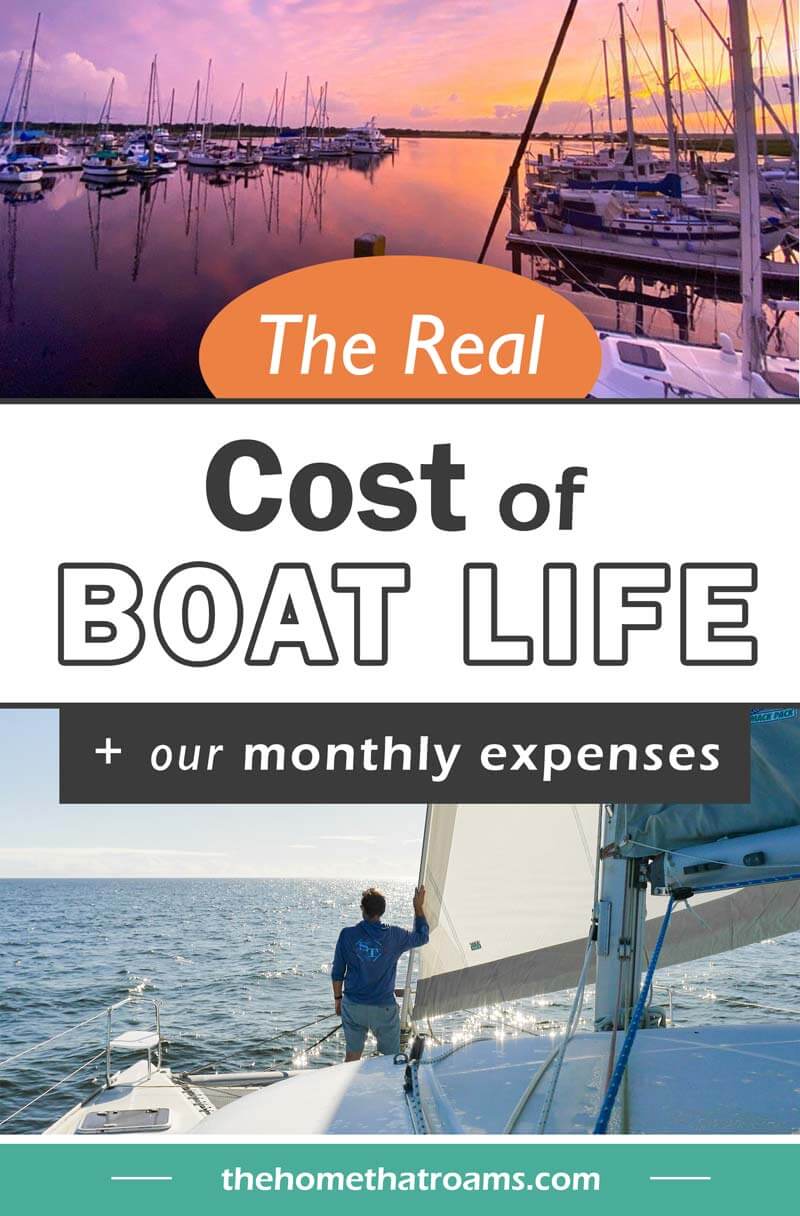
Or view our web stories.
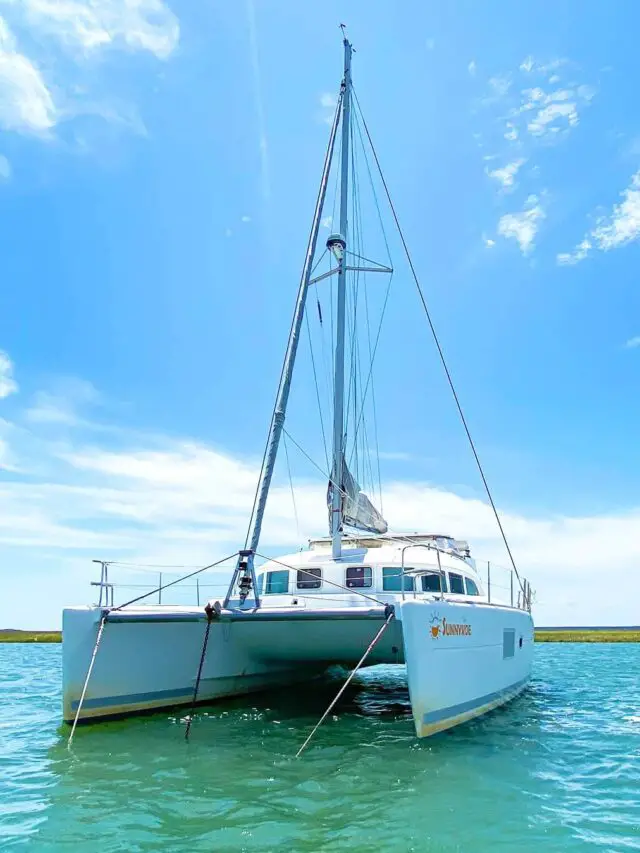
Morgan, the founder of The Home That Roams, has been living nomadically for over five years. She began her journey traveling across the U.S. in a motorhome and cruising on a liveaboard sailing catamaran. Currently, she lives full-time in a travel trailer, sharing resources on RV living and boat life to help others downsize their lives and thrive in an alternative lifestyle.
Excellent article. Thank you!
I started getting the urge to return to the sea not long after I got out of the Navy in 1974…. Started out on a 15′ Phantom…. Up to 21′ Keels, up to a 26′ Bristol and finally a 28′ Newport…. You learn alot of tricks of the trade at a working marina… Barter system, I used to go up the mast or anything Aloft in return for favors with anything that I had a problem with …. Had to give up the sailboat when I couldn’t sail it by myself anymore … Looking for a 35′-38′ trawler to live in the Tampa Bay area for the rest of my day…. From the Sea I came, back to sea I will return … Anchor’s Aweigh….
Hi George, it sounds like you have lived and breathed boats for a while! One of my favorite things about a good liveaboard marina is how everyone trades boat maintenance favors and helps each other out. I sure hope you find a good trawler to liveaboard in Tampa – sounds lovely!
Do you use a specific budgeting software or anything to track your transactions? Please share if so
Leave a Reply Cancel reply
Your email address will not be published. Required fields are marked *
Sign Me Up!
Learn how to live on a boat.
Get weekly tips on how to start traveling full-time on a boat.
View our privacy policy .
Privacy Overview
| Cookie | Duration | Description |
|---|---|---|
| cookielawinfo-checkbox-analytics | 11 months | This cookie is set by GDPR Cookie Consent plugin. The cookie is used to store the user consent for the cookies in the category "Analytics". |
| cookielawinfo-checkbox-functional | 11 months | The cookie is set by GDPR cookie consent to record the user consent for the cookies in the category "Functional". |
| cookielawinfo-checkbox-necessary | 11 months | This cookie is set by GDPR Cookie Consent plugin. The cookies is used to store the user consent for the cookies in the category "Necessary". |
| cookielawinfo-checkbox-others | 11 months | This cookie is set by GDPR Cookie Consent plugin. The cookie is used to store the user consent for the cookies in the category "Other. |
| cookielawinfo-checkbox-performance | 11 months | This cookie is set by GDPR Cookie Consent plugin. The cookie is used to store the user consent for the cookies in the category "Performance". |
| viewed_cookie_policy | 11 months | The cookie is set by the GDPR Cookie Consent plugin and is used to store whether or not user has consented to the use of cookies. It does not store any personal data. |

Living on a Boat: Beginner's Guide for Liveaboards
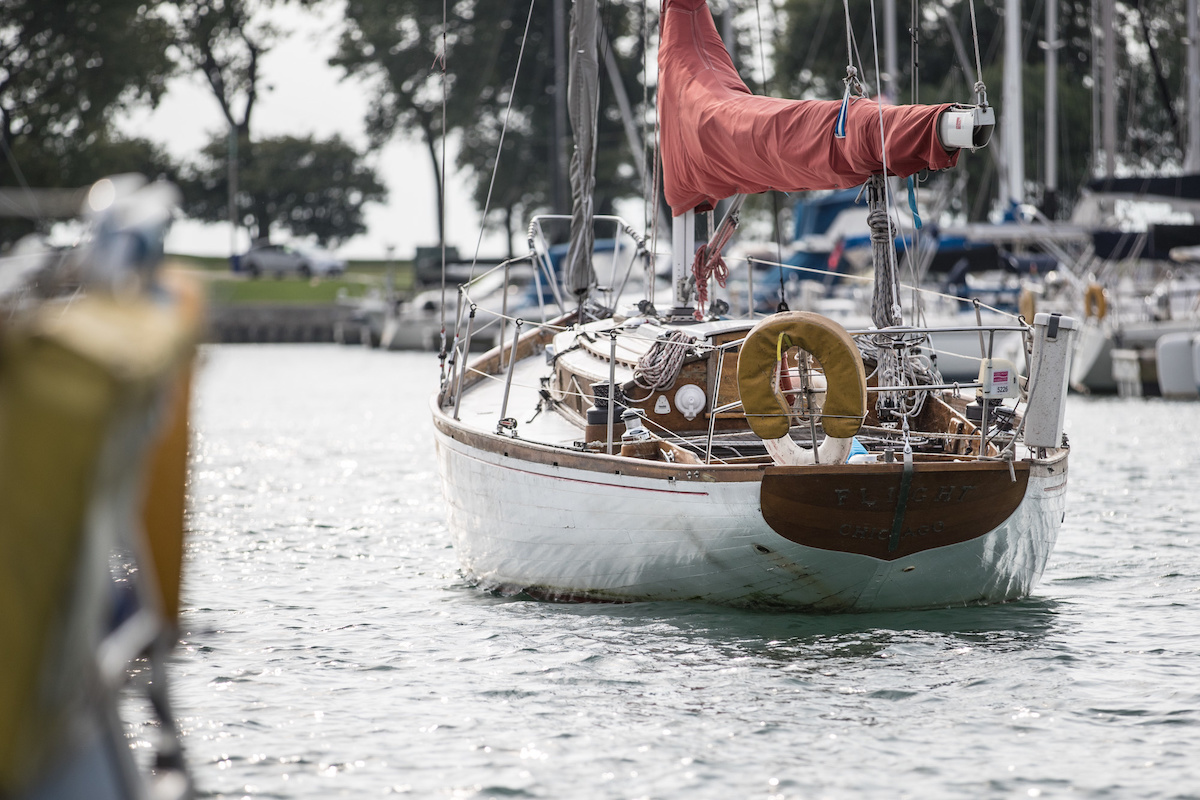
It’s easy to romanticize the idea of living on a boat full-time; however, it's an alternative lifestyle like that takes preparation, organization and an ability to roll with changes. When you commit to moving aboard, make checklists of necessities and talk to your partner about deal-breakers. Prepare the boat for life aboard well before you make the move.
Factors to Consider Before Living Aboard
Before moving onboard your boat, you should ask yourself some questions:
- Is this just for a period of time before you go cruising or is this a lifestyle choice?
- Are you comfortable with repeatedly defending your choice to your friends and family?
- Are you living in a climate that is boat-friendly year-round?
- Are you handy and a good problem solver?
- Who will accept your Amazon deliveries and are you ready to grocery shop frequently since there won’t be room to stow much?
- Are you ready to become your own maid?
- Will you feel comfortable with your kids being in this new environment?
- What’s Plan B if it doesn’t work?
After moving aboard, you may be hauling the laundry to the laundromat or groceries from the parking lot with no dock cart nearby. You’ll need to go to the pump-out station regularly as well as to the post office for your mail. Small doesn’t translate to easy so mentally run through a typical week and write down solutions to the issues.
Essentials: Stowage, Comfort & Connectivity
When you move from a 2,000-square foot house to a 40-foot boat, all the closets are smaller, the cupboards are fewer and there’s no two-car garage. In preparation, you’ll need to de-clutter kitchen gadgets, tools, mementos and clothing. Keep winter clothes in off-boat storage and your business attire at the office if possible.
Make sure the boat is warm and dry with plenty of ventilation. Mildew and condensation will become a part of life and you’ll need a whole new set of cleaners and tools.
Plan your connectivity needs. Whether a dish for TV or high-speed internet access via the marina WiFi, you’ll need a connectivity solution so you’re not cut off from work, friends, family and entertainment.
Beneficial Skills to Have for Living Onboard
Maintenance on a boat may be worse than in a house in terms of frequency and specificity. Basic plumbing, electrical and mechanical skills will be needed because boat systems are generally less reliable than their household counterparts. The alternative is calling a contractor for every issue.
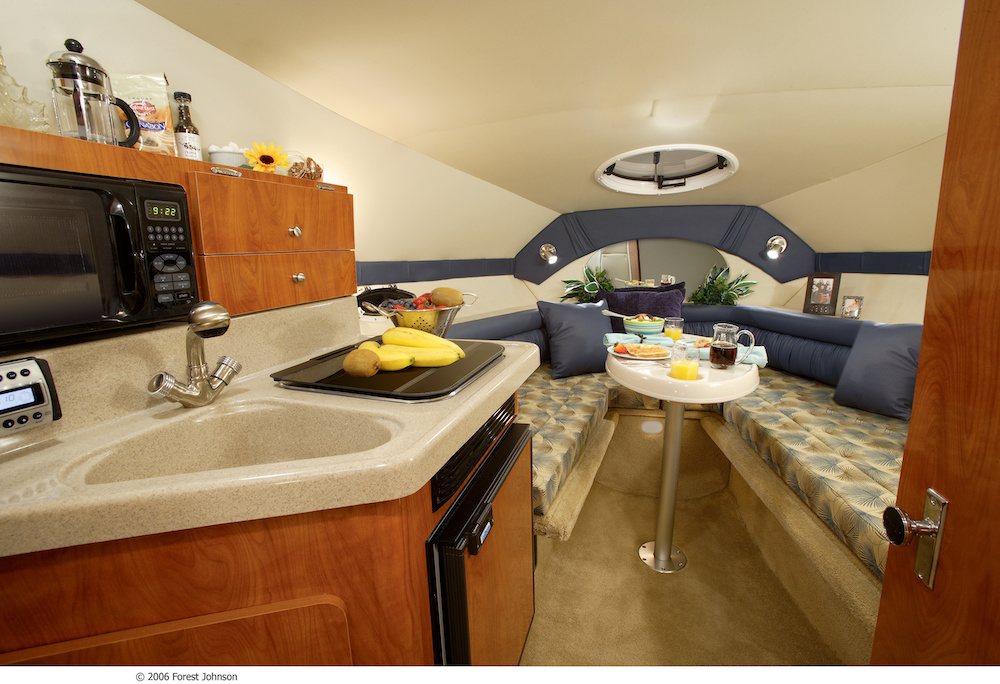
Cost of Living on a Boat
Don’t assume that you’ll save money by moving aboard. Here's some expenses you may incur by living on your boat:
- Boat mortgage payment
- Boat insurance
- Waste management
- Food and water
The best way to manage expenses is by making a budget and sticking to it. Depending on the size and value of the vessel, boat insurance may be just as expensive as house insurance. Property taxes will usually be less as will electricity since you’ll not be heating/cooling/lighting as big a space. You’ll probably save money on waste management, gas and water as well.
Where costs rise dramatically is maintenance . Marine parts and labor are usually more expensive—sometimes 20% more, than typical household counterparts. If you take on the tasks yourself and you’re self-employed, every hour you spend working on your boat is an hour you don’t make money.
Learn More in our Boat Insurance Guide
Safety & Security
You’ll need to decide whether to invite strangers inside, and if kids and pets will be safe around the docks. Install CO2 and smoke alarms and a propane sniffer, check the fire extinguishers periodically, and keep an eye on the basics like bilge and battery levels. You may also want to consider the following:
- Will you be safe walking from the parking lot to the slip at night?
- Will your nice car be okay outside the garage 24/7?
- Who will call you if your boat starts to list when you’re on vacation?
There aren’t really more or fewer safety issues, just different kinds.
Daily Life & Socialization
Socializing is easier in a marina than in a neighborhood. Neighbors help neighbors in marinas but it’s a two-way street so be ready to lend a hand when needed. If you’d rather live anonymously, consider an end tie in the forgotten corner of the marina. Although there are challenges to living on a boat, if you’re prepared, you may find it a perfect fit.
I already have a boat in a slip in a marina, so can I just move aboard?
Most marinas require an application for you to move aboard permanently. In some areas, liveaboards aren’t permitted or there are long waiting lists. Liveaboard slip fees are usually higher and your insurance rates may increase if your boat becomes your primary residence.
How do I live aboard a boat with a pet?
Dogs, cats and other pets need to acclimate to their new environments. They need exercise, private space and easy access to food and a potty. Make sure stairs and docks are safe for them and that they know how to get on the boat or dock if they fall in the water. Be careful of small spaces where they can get trapped and wires they can chew. Teach them about their new environment and be patient.
Learn more in Boating with Pets and Tips for Taking Your Dog Boating .
Read Next: Boat Owner's Guide
Looking for more information on boat ownership? Read...
- Boat Owner's Guide
- Costs of Boat Ownership
- Boat Maintenance Guide
- Insuring Your Boat
- Boat Safety Guide

Join Our Newsletter!
Get community news, buying bargains, and how-to guides at your fingertips.

My Cruiser Life Magazine
Living On a Boat Full Time — What to Consider Before Living Aboard
Let’s talk about real-life boat ownership and living on a boat full time. My wife and I have lived on our boat for nearly eight years, doing everything from full-time living on a boat in a marina to cruising The Islands of The Bahamas for months.
For starters, everything you’ve ever wondered about living on a boat probably doesn’t scratch the surface of everything you’ll learn. This lifestyle isn’t for everyone; for every wonderful day on the water, there’s a stressful situation or broken boat part.
So what does living on a boat full time look like? Here’s a glimpse into the world of the liveaboard.

Table of Contents
Should i live on a boat absolutely yes, here’s why (pros of living on a boat), never, in a million years, should anyone ever live on a boat (cons of living on a boat), there’s more than one way to live on a boat, there’s a steep learning curve, it’s kind of like camping, constant maintenance and cleaning, weather drama, the legalities of the live aboard life, cost of living on a boat, paths to moving aboard, living on a boat full time faqs, what are the pros and cons of living on a boat.
It is often said that there’s a wide gap between the romantic vision that many people have of the liveaboard lifestyle and the nitty-gritty reality.
Here are the pros and cons of living on a boat full time, taken from our personal experiences.
Living on a boat is sometimes even better than your most romantic vision. Dolphins frolicking while the sunsets, tropical drinks in your hands, and nothing but crystal clear water between you and the most spectacular island beach you’ve ever seen. Yes, that all happens, sometimes.
- Freedom to go where you want, when you want
- Travel as much or as little as you want
- Take your house with you as you move
- Changing scenery, waterfront property where ever you go
- Wildlife visits—seals, whales, dolphins, birds
- A friendly community of other boaters
- Learn to live more simply, with only the necessities
Everyone has good days and bad days. We’ve often described boat life as having high highs but very low lows. The peaks and valleys of boat life (crests and troughs?) are just much farther from baseline-normal.
For every dolphin, there is a broken toilet joker valve leaking sewage onto the bathroom floor.
For every idyllic island beach, there is a fouled diesel filter that needs changing.
For every smooth downwind passage, there is a sloshy, windless mess of flapping sails making everyone on board seasick.
The list could go on and on and on.
- Constant maintenance and cleaning
- Difficulty finding skilled, professional labor
- Small spaces, no storage, no privacy
- No dishwashers, washing machines, dryers (usually)
- Away from docks, you always have limited power and water
- Constant exposure to the weather
- Tax and insurance issues
Common Issues with Moving Onto a Boat
Here are some of the biggest issues we have noticed from our experiences and those around us. While everyone’s experience of living on a boat full time differs, everyone seems to have similar issues.
First, it has to be said that everyone’s experience is different. And that’s most obvious by looking at what sort of boat they choose and where they choose to live on it.
Many books have been written on the subject, and most like to divide boaters into three groups based on their budgets. There are the high-lifers who can afford to buy a new or newish boat that is large and comfortable. They can afford to live at a resort marina and likely hire professionals for most maintenance and cleaning tasks. They likely spend most of their time in marinas if they travel far.
Then there are the Goldilocks boaters—not too big, not too small—making up the “middle class” of boating. There’s a healthy mix of DIY projecting with some professional help on the big projects. They might liveaboard at a marina or travel full-time. They might live at docks, anchor, or a mix.
And then there are the budget boaters. Cheap boats are easy to come by if you’re willing to use DIY labor to fix them up. They are most likely to anchor out to minimize costs.
All these people live very different lives on their boats, but does it matter? The costs are astronomically different, but they could be visiting the same ports, seeing the same sights, and even sharing the same experiences.
What’s most amazing is how everyone perceives their liveaboard situation. I’ve been to dock parties where couples on 60′ catamarans complain that they have no personal space and must take a break from being on the boat together after a few months. Meanwhile, I know a family of five (plus two dogs) that live on a 40′ monohull with less than 1/3 the space of the catamaran. They have issues, but they’re pretty happy five years later.
(Speaking of catamarans, check out my recommendations for liveaboard catamaran options.)
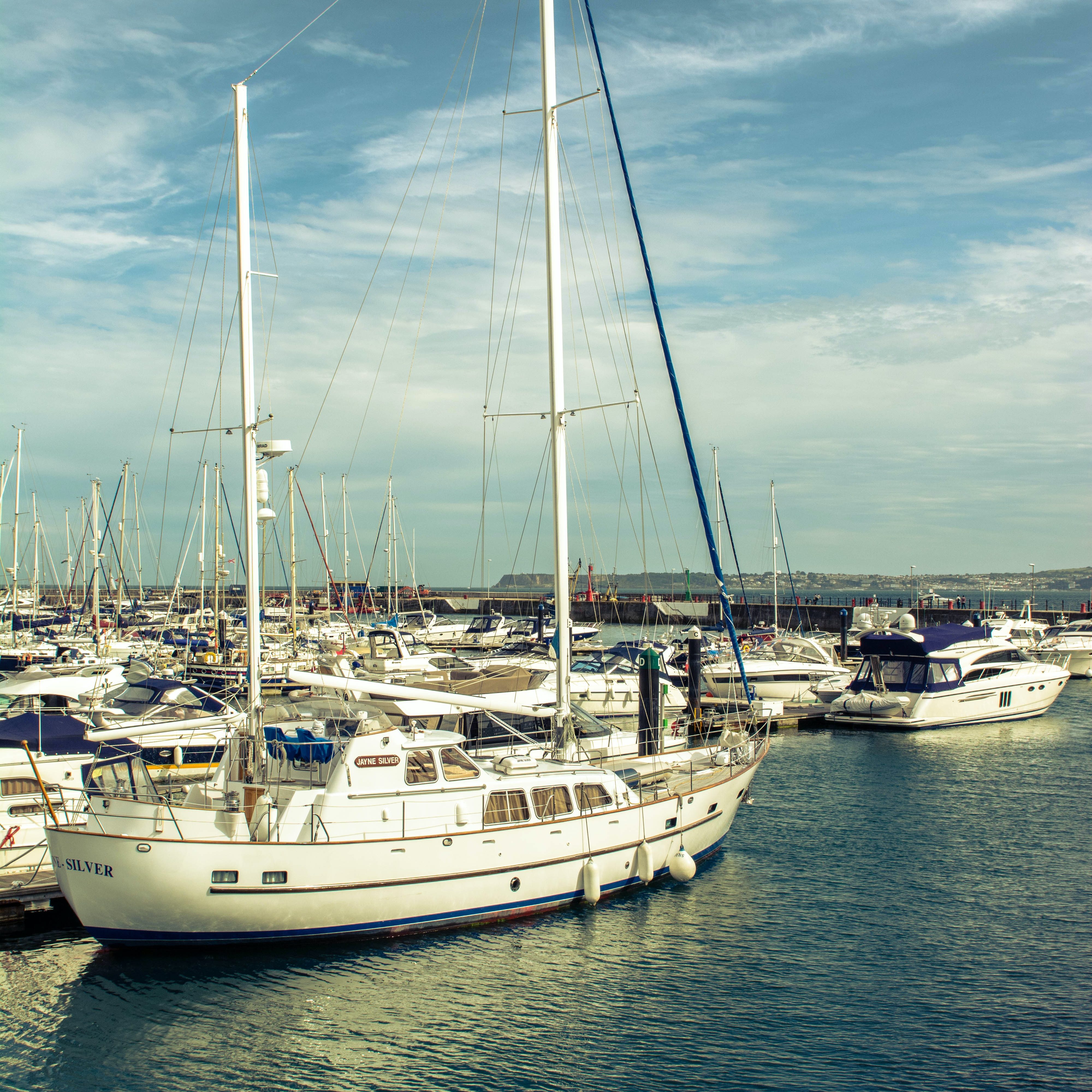
Year one of boating is the worst. There’s so much to learn; it’s all new and different than anything you’ve done before. There are all the sailing terms you must learn, but there are also boat maintenance tasks and understanding how all the systems on your boat work. Then there are the basics of seamanship and how to operate your vessel safely. It is a lot to take in.
And the basics of living on a boat are different from land life. Your kitchen (galley) is much smaller. The toilet doesn’t flush like a regular land toilet. You’re always thinking about minimizing water use when showering or doing dishes. If you turn too many electrical items on, circuit breakers pop. The list goes on and on, and when you’re new, it’s stressful.
Once you’ve got the kinks worked out, learned your boat systems, and successfully traveled and lived on your boat for a while, things get much better. You know more, your boat is set up the way you need it, and you have the confidence to start enjoying yourself. Some people take a few months, some a year, and, unfortunately, some never get there.
Boats are small spaces, but the truth is that living on a boat is more like camping than most boaters like to admit. You get by with only a few items in your wardrobe. You skip showers since you don’t always have hot water. You don’t have space for all the luxuries of home. No dishwasher. No washing machine. Everyone is occasionally uncomfortable onboard, whether from the weather or the cramped quarters.
Boats are also hard on relationships. While there’s something romantic about being cozy and alone together at sea, it isn’t so romantic on day five, or thirty, or sixty. Personal space is non-existent on most boats. It’s inevitable that your significant other—or anyone else—will drive you nuts after some time. Boats have ended more than one marriage that we know of.
The cramped living space on a boat poses other problems, too. Downsizing is important because you simply can’t bring it all with you—there’s no storage space. What is important, what’s nice to have, and what will you use on a boat? Living on a boat forces you to live with the minimum and acknowledge what you need to survive.
Living on a sailboat is, of course, drastically different than living on a luxury yacht. But all these problems seem relative, and no matter what size your boat is, everyone has the same complaints.
Boats are always trying to sink and fall apart. The ocean helps them with its corrosive saltwater and constant motion. The only thing keeping it afloat? You, the lowly and unprepared new boat owner. Yikes!
Even if you have mechanics and boatyard workers do most of the big projects for you, there’s still a ton that you’ll wind up doing on your own. Just day-to-day cleaning on a boat is a big deal. Everything is more difficult and takes longer than it does on a house.
Somehow, boats seem to get dirtier faster than houses do. From polishing the hull, shining the stainless, varnishing the teak, and scrubbing the scum line to everyday things like dishes, sweeping the floors, and cleaning the bathroom, boats are dirty, and it takes time to keep them clean.
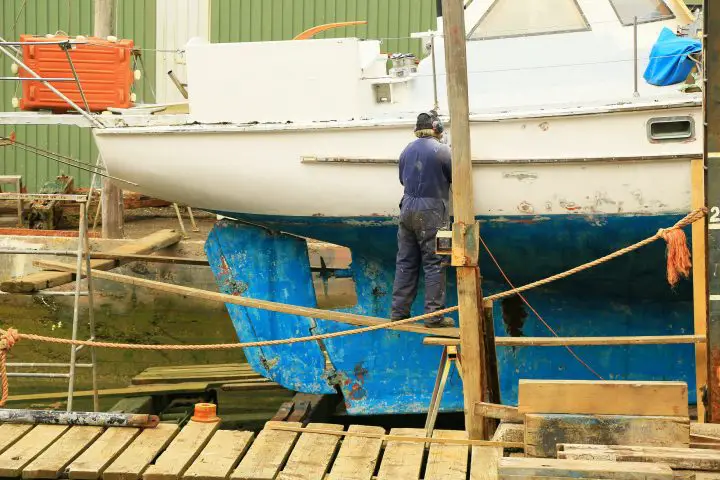
The weather plays a bigger part in your life than you’ll even imagine. Most of us pay remarkably little attention to the weather when we’re on land. If it’s hot, we might just minimize our time away from air conditioning. If it’s raining, it’s a minor inconvenience. We never think about the wind or tides.
But everything on a boat revolves around the weather. Every day we look at the weather for the upcoming week. Forecasts are often inaccurate, so we expect it to change. But what should we be ready for? When cruising, we often track weather systems over a week away and start planning.
This week, it says we might get gusts to 52 knots (!!!) from the southwest with heavy rain and thunderstorms. We’re anchored and away from the dock. Will our anchorage be protected from winds like that? Is the holding good here, or is there a safer place we should move to? Should we think about moving there early in case it fills up with boats?
We go through this exercise every week or two, no matter where we are. When approaching an anchorage, it’s all about the wind direction, tide level, and whatever else is happening. Are we okay with being stuck here for a few days if it’s foggy? A week? What if we need south winds to reach our next destination, but the forecast only has east winds? Do we wait or change our destination?
The amount of attention it takes and the flexibility of your schedule is mind-boggling to most landlubbers. When friends want to visit us, we tell them we can meet them in a specific place or at a specific time, but not both. If you want us to meet you, you’ve got to be flexible too!
What do you legally need to do to live on a boat full time? Most people’s home or apartment is their legal residence and domicile. It’s listed on their driver’s license, and it’s where they vote and pay taxes.
How will all these issues play out when you move onto a boat that moves around? There are mail forwarding services that allow you to set up residency. We use St. Brendan’s Isle in Florida since we were already Floridians, but there are also similar services in other states. This at least gives you the ability to have a driver’s license and vote.
Taxes are a little more complicated. You can register the boat at your address in Florida, but each US state collects its own use tax. If you use your boat in their state for over a few months, they want to tax it. It’s not a problem if you move around, but what if you want to leave your boat in New York for the summer? Then you might have to register it there and pay taxes.
Additionally, many counties in the US collect personal property tax on boats. We know of several places where if you are in the county on January 1 st , you’ll owe the county property tax. If you were one county away where the tax happens to be zero, you would owe nothing. Tricky!
Recreational boat insurance is another matter of concern. It used to be fairly easy to insure a boat, especially a cheap old boat. If you have a homeowner’s policy, you can easily add the boat. But if you’re a liveaboard with no real land address, getting insurance is becoming a problem. If the boat is too old, you’re traveling to distant ports, or the boat is very large, and you’re first time boat owners, it can be hard to find an underwriter.
Do you even need insurance? Many marinas and boatyards now require it. Gone are the days when you could sail the world and “self-insure.” But, honestly, those days never really existed. If your uninsured $5,000 sailboat drags anchor and puts a gash in a $5 million yacht, a serious legal headache will follow. Many owners of older vessels keep “liability-only” insurance, but even this is getting less affordable and hard to come by.
Many folks who want to try boat life are understandably curious about the average cost of owning and buying a liveaboard sailboat . Is it cheaper to live on a boat than a house? That’s a tough question to answer. For one thing, people’s expectations and their needs for comfort and security vary widely.
Both houses and boats can be found for about the same amount. If you’re in the market for a $250,000 house, you could find a nice boat for that amount. It would, of course, be much smaller and—unlike the house—be a terrible investment. So while you might be able to get a loan for a house (which makes excellent collateral for the bank), getting a loan for a boat would require a bigger risk on the part of the bank and therefore cost you a lot more.
On the cheaper end, you could find a fixer-upper boat on Craigslist or Facebook Marketplace for far less than a neglected house. A house will always have some value based on the land, whereas a boat can become valueless. It’s not uncommon to hear of people getting free boats abandoned in boatyards, making ridiculously low offers on neglected vessels, and getting large boats for a few thousand dollars. People are always wondering how to get rid of an old boat .
These fixer-uppers have their own stories, of course. Many YouTube channels are dedicated to the cheap boat fix-up scheme. Project boats can be wallet-shrinking and soul-sucking. Taking on a project is a good way to lose a lot of money, along with years of your life and any interest you ever had in boating. Project boats are not for most people.
Both boats and houses have taxes and insurance, so those costs are probably very similar. Tax laws vary by state and county. In some places, you won’t have to pay any tax on your boat except for the initial sales tax at the time of purchase. You will have to pay an annual personal property tax in other locales.
You’ll also have to pay for boat parking . Marina, mooring ball, or in the boatyard—all will come with a monthly bill. The house or apartment will not have storage fees, so there’s no equivalent here. But, if you bought a cheap boat for cash and are only paying monthly liveaboard slip fees, this might be less than a mortgage payment would be.
If you’re traveling and anchoring, you can generally do that for free. However, most cruisers spend a few nights a month at marinas. That averages about the same amount they’d pay for monthly dockage since nightly transient rates are high.
Both boats and houses have maintenance and upkeep expenses, but boats generally have more. It’s generally estimated that you should budget ten percent of the boat’s purchase price for annual maintenance. If you bought a $50,000 boat, this would be $5,000 yearly. That holds for most boats, but year one will be higher as you fix neglected items and make your upgrades.
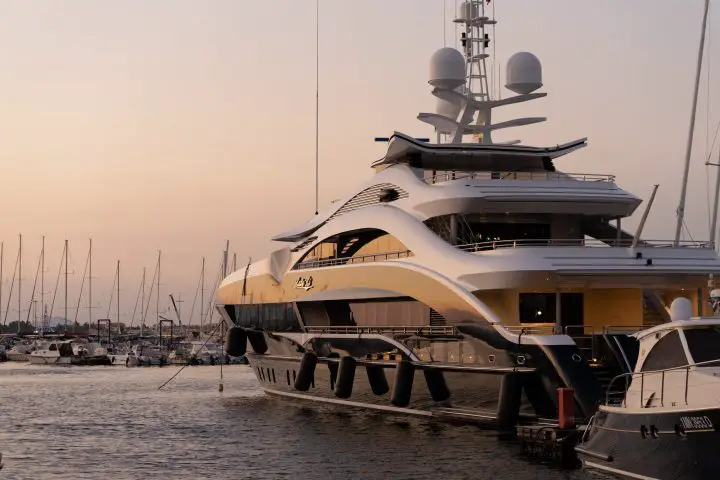
From our experience, we’ve seen people take two paths towards the liveaboard life.
- Some folks own their boat and use it for weekends or a week’s vacation here and there. They move aboard full-time as they transition to retirement, a work sabbatical, or remote work. Since it’s a gradual transition, these folks generally know what to expect.
- Then there are the folks who go all in—they know nothing about sailing or boats and sell it all and move aboard. For them, it’s a jump into icy cold water or learning a new language by moving abroad.
Which group is more successful? Group One generally knows what to expect, has worked out the kinks in their boat, and has already tackled the learning curve. There’s still a lot to take in, but they’re generally less stressed by it. If you can spend some time on your boat enjoying boating before moving onboard, it’s generally a good thing.
But, either way, being a full-time liveaboard is not a long-term lifestyle for most people. People who start from both groups seem to last an average of about one and a half to three years. After that, they’re ready to either sell the boat and move on or buy an RV or vacation land home that allows them to divide their time between boating and something else. People who last more than three years with only a boat are a very small minority.
One parting thought: Living on a boat full time and traveling is like having three or four full-time jobs. Each requires 30-40 hours per week when you include labor, research, and thinking and planning.
- Boat ownership — basic maintenance and cleaning
- Cruising full-time — destination and route planning, weather study
- Living aboard — cooking, cleaning, shopping, and everything else takes so much longer on a boat than in a house
- Your actual job — if you work aboard
How much does it cost to live full time on a yacht?
A lot depends on the size of the yacht. A small sailboat can be found fairly cheaply. For around $50,000US, you can get an older 35-foot sailboat in decent condition and move aboard with few problems. The biggest issue is finding a marina that allows live-aboard boaters. Slip fees will be your biggest expense and can be as high as $1,500 monthly in some areas. However, you can get monthly slips for as little as $300 in other places.
How to stay organized on a sailboat?
Sailboats have small spaces and not much storage, so keeping organized is key. The first step is to downsize your possessions to the bare minimum—only take what you absolutely need. The less you have, the easier your life aboard will be.
After that, it’s a matter of packing the boat so that everything has its place. Some boaters like to keep a spreadsheet of where they’ve packed everything away so they can find it quickly.
Is it cheaper to live in an RV or a boat?
Both of these activities are very dependent on location. Purchasing either one is very similar in cost. RV parks and marinas charge similar prices, but the cost varies depending on the location and services. In the end, however, moving an RV somewhere cheaper is easier and quicker, so you can live somewhere cheaply more easily.
Matt has been boating around Florida for over 25 years in everything from small powerboats to large cruising catamarans. He currently lives aboard a 38-foot Cabo Rico sailboat with his wife Lucy and adventure dog Chelsea. Together, they cruise between winters in The Bahamas and summers in the Chesapeake Bay.
Leave a comment
Your email address will not be published. Required fields are marked *
Save my name, email, and website in this browser for the next time I comment.
Best Liveaboard Boats to Live On Full-Time
Living on a boat represents a significant and thrilling life choice . Departing from the comforts of traditional dwellings and the spaciousness they provide in favor of an unconventional lifestyle is an option that an increasing number of individuals are embracing. Escalating urban living costs, particularly in major cities, coupled with the daily routines of life, have led more people to seek a simplified existence on the water . A previous article examined the merits and drawbacks of residing on a boat. This piece delves into the diverse range of liveaboard boat styles. It identifies the most suitable Boats to Live On for year-round living.
Options for Living on a Boat Full-Time
Best Liveaboard Boats encompass a broad spectrum of possibilities. From stationary houseboats to highly maneuverable sailboats and an array of options, the choices continue to expand with innovative , designer-driven , and spacious vessels .
Ultimately, practically any boat can serve as a domicile. While some may find the space restrictive, it remains feasible . The decision largely hinges on one's preferred lifestyle, whether residing in a water-based community near work and social circles or embarking on seafaring adventures worldwide.
Types of Best Liveaboard Boats
Sailboats for full-time living.

Sailboats, available in various shapes and sizes, epitomize the essence of maritime freedom. They offer an economical means of purchase and travel, as wind power is free . Moreover, finding a berth for a sailboat is generally easier and more affordable than larger houseboats. On the downside, sailboats often have limited space, and smaller models may lack showers or hot water. Size considerations, such as single-handed sailing capability and budgetary factors , are crucial for operational feasibility , as larger sailboats tend to incur higher operating costs.
Sailboats are known for their:
Economical purchasing and maintenance costs. Ease of finding berths compared to larger houseboats . Versatility in terms of mobility. However, they may need more conveniences of larger houseboats and have limited space.
The Best Sailboats to Live On
Whether one seeks a new or used sailboat, the options are vast . While identifying the absolute best sailboats may prove elusive, some standout choices include:
Catalina 38

Produced from 1978 to 1999 , the Catalina 38 sloop offers a comfortable living space for couples. Its thoughtful features, from electrical outlets to a well-equipped galley, provide a cozy cruising experience. Despite limited space, the Catalina 38 is an excellent choice for adventurous living.

Originating from the 1970s, the Hunter 33 , an aft-cockpit sloop, enjoys enduring popularity. With ample interior space, including a full dinette , head , shower , master cabin , and standing room height , this sailing yacht offers comfort. It boasts a contemporary design and a homely atmosphere.
Peterson 44

Slightly larger than the previous options, the Peterson 44 is a double-spread cutter that caters to various living needs. Ideal for small families, it combines affordability with home comforts like a shower , galley with oven , fridge , freezer , three cabins , and a practical center cockpit .
Catamarans for Full-Time Living

For those seeking an ocean-going liveaboard with extensive amenities, including a house-sized kitchen and bathroom , multi-hull boats like catamarans and trimarans excel. The bridge connecting the hulls creates a spacious, well-lit living area above water, with bedrooms within the hulls . These boats offer enhanced stability compared to monohull vessels. However, their higher purchase and berthing costs warrant consideration.
Catamarans are prized for their:
Abundance of space relative to monohull yachts . Full-sized kitchen and bathroom facilities. Enhanced stability in rough seas . Nevertheless, they tend to incur higher acquisition and berthing expenses due to their wider dimensions.
Read also this : Best Catamaran Fishing Boat Brands
The Best Catamarans to Live on
The catamaran market, encompassing motor and sail models, thrives, particularly among Boats that Live On Full-Time liveaboards. Notable models include :
Privilege 435

Founded in 1999, the Alliaura Marine Privilege 435 impresses with its comfort and spaciousness. Its luxurious finishings , latest technology , and navigational equipment create an elegant and homely atmosphere. Featuring four bedrooms and the iconic central 'hull' for added space, it accommodates a range of activities, from living to coastal cruising.

Situated within the Lagoon's range of luxury catamarans, the Lagoon 46 offers comfort and ample space while remaining compact for ease of handling and mooring. It boasts a spacious galley and dining area with abundant natural light , three cabins , a plush master suite , and a generous deck space .
Trawlers for Full-Time Living

Trawlers represent a unique category of powerboats designed for long-distance cruising, ideally suited for Living on a Boat Full-Time . Evolving from their origins as commercial fishing vessels, modern trawlers differ significantly. They feature wider hulls, reduced draft, increased below-deck headroom, and more space for modern amenities. Trawlers often include full-sized kitchens, showers, and multi-level living areas, especially on larger models. Despite potential initial costs and higher operational expenses , their roominess makes them a preferred choice.
Trawlers offer the following advantages:
Ample interior space relative to length . Luxurious designs are akin to penthouses. Compact dimensions for straightforward berthing. However, they typically involve higher initial purchase and operating costs than sailboats.
The Best Trawler Yachts to Live on
Modern newly built or converted trawlers showcase innovative designs and luxurious features. Notable examples include :
Grand Banks 60

Grand Banks has transformed the humble trawler into a long-range cruiser with the luxury of a small superyacht. The GB 60 combines impressive cruise speed , a customizable interior , advanced technology , and a signature deep V hull for a smoother , faster ride .
Beneteau Swift Trawlers 48

Beneteau's Swift Trawlers offers elegance and power , ideal for comfortable living at anchor or long-distance cruising. They feature a central living space with panoramic views , abundant storage , stylish cabins , and efficient engines .
Ranger Tugs R-43

Ranger Tugs specializes in high-quality, affordable vessels. The R-43 boasts a light-filled interior , two cozy cabins with en-suite shower rooms , a chef's galley , wrap-around decks , and advanced tech features , making it suitable for families or friends seeking a shared living experience.
🚀Recommended article: Types of Boats With Cabins: A Comprehensive Overview
Houseboats for Full-Time Living

Transitioning to life on the water need not entail traversing vast oceans . The allure of awakening to birdsong and the gentle lapping of water against the hull, or reconnecting with nature and embracing a simpler existence, is at the heart of year-round boat living. Sacrificing seaworthiness for space leads to various types of static or houseboats that offer a more residential ambiance.
Non-powered houseboats featuring a steel floating pontoon supporting a mobile home-style structure deliver spacious living areas, large windows, and all the comforts of home. While they can be towed, they typically reside in residential communities along rivers, lakes, sheltered bays, and inland waterways . These houseboats often provide municipal utilities, cable television, and broadband internet connections, offering the best of both worlds.
🚀Recommended article: Exploring the Most Popular Types of Lake Boats
Powered houseboats are self-propelled residential vessels available in various configurations. While some are suitable for shorter journeys and resemble static houseboats, others possess substantial cruising capabilities . Their squared-off silhouette accommodates ample living space relative to their length.
Houseboats are esteemed for their:
Affordable pricing compared to ocean-going yachts of similar size. Abundant interior space with home comforts. Creative interior design possibilities. Securing a residential berth for houseboats can be challenging due to their popularity ; some are exclusively towed rather than powered.
The Best Houseboats to Live on
Innovative architects have introduced a range of luxurious , creative , and imaginative designs for static and powered houseboats . These designs incorporate floor-to-ceiling windows , roaring fireplaces , and rooftop hot tubs . Some noteworthy choices include:
American Houseboat 'The Zion'

Resembling a house floating on water, these quintessential all-American houseboats measure 14 x 14 feet , providing two bedrooms with an additional loft area for up to eight guests. Featuring ample windows , a full kitchen , and a spacious private deck off the master bedroom , they combine home comforts with the joys of waterfront living.
Gibson Cabin Yacht 5000

Gibson Boats' Cabin Yacht 5000 combines affordability with spaciousness and reliability . It offers a comfortable and well-equipped living space with two or three double bedrooms , carpeting , high-quality electrical appliances , air conditioning , heating , and two full bathrooms .
Bravada Yachts Atlas V-Series

The Atlas V-Series powered houseboats redefine traditional notions of houseboat living. With futuristic silhouettes , expansive windows , two floors , and an array of home comforts , including a fire pit and rear waterslide , they elevate water-based living to new heights.
In conclusion, choosing the ideal liveaboard boat depends on individual preferences, budgetary considerations, and lifestyle goals. Sailboats offer economical and adventurous living , catamarans provide spaciousness and stability , trawlers deliver luxurious long-range cruising , and houseboats offer diverse options for embracing life on the water. Each vessel type presents unique advantages, catering to those seeking unconventional, waterborne lifestyles.
Frequently Asked Questions About Living on a Boat
Is living on a boat more affordable than a traditional home, do i need special skills to live on a boat, can i live on a boat with a family, how do i secure a mooring spot for my boat, are there any legal restrictions on living aboard a boat, can i work remotely while living on a boat, what kind of boat can you live on, how big should a boat be to live on, which boat is the strongest, can you really live on a boat.
Was this page helpful?
Save my name, email, and website in this browser for the next time I comment.
- Build A Boat
- Find A Dealer

- The Cost of Living on a Boat
Imagine taking a dip in the ocean each morning, watching the sunset from the water and traveling with your entire home wherever you go.
Living on a boat full time is an alternative lifestyle that’s all about simplicity — for the most part. Though it’s exciting to think about living on a boat or yacht instead of in a house, it’s important to acknowledge the different costs associated with claiming it as a full-time residence.
Our guide to living on a boat illustrates the high level of commitment this decision requires and outlines some steps to take to live out your dream.
Common Costs Associated With Living on a Boat
It’s the big question — “How much does it cost to live on a boat?” To answer this question, you need to consider the cost factors involved in boat ownership and residency.
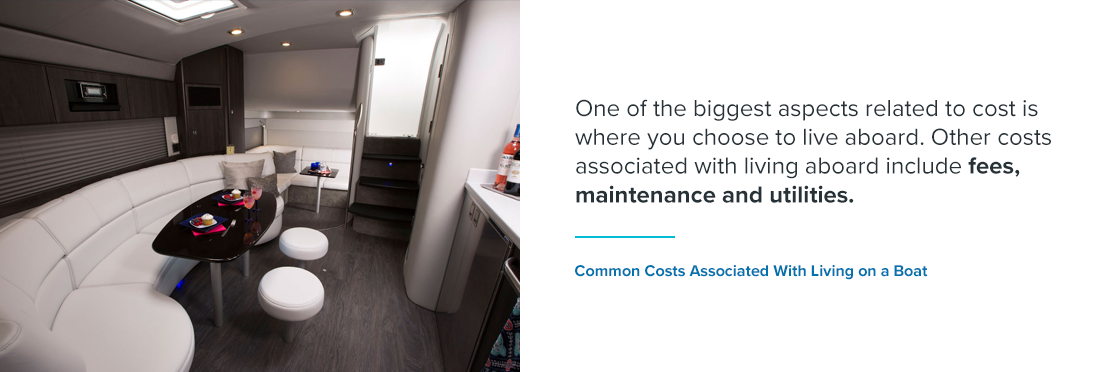
One of the biggest aspects related to cost is where you choose to live aboard. For example, fees in Florida may be higher than those in northern states. If the marina is vacant, they will often cut you a better deal compared to a marina with a waiting list. Other costs associated with living aboard include fees, maintenance and utilities.
HOW MUCH WILL LIVING ON A BOAT COST?
Living on a boat in a marina isn’t free — although we wish it were. Three different types of fees exist depending on where you reside:
- Anchorage: If a local government allows liveaboards, you may be able to find free anchorage in the right areas. Though rare, free anchorage is the most economical way of living on a boat.
- Marina slip: Boat slips charge you daily, weekly, monthly or long-term fees to stay in a marina. They also add a monthly charge for liveaboards because you use the marina facilities more than someone storing their boat. Some slip fees include utilities, but others require you to arrange for services on your own.
- Mooring: Mooring fields allow you to secure your boat to a permanent mooring buoy that attaches to a weight resting on the bottom of the water. Moorings cost about half the price of a marina slip, which can help cut expenses. As a bonus, some mooring areas have water taxi services, dinghy storage, holding tank pump-outs and access to onshore facilities.
MAINTENANCE COSTS FOR LIVING ON A BOAT AT SEA
Maintaining a boat requires more specific and frequent tasks than what you typically complete in a house. You must consider each boat component to determine maintenance costs, including the living quarters, hull, topsides,underside, canvas and deck. The marine environment is harsh — even more so where there is direct sunlight.
Think about the following costs of boat upkeep:
- Canvas: A canvas can make life aboard comfier by keeping you cool and protecting you during the summer. While an awning can shelter your boat’s cockpit and deck from the elements, you will need to maintain the material. Mildew or tearing can be an issue in harsh environments, and a special sewing kit can help you make repairs as needed.
- Cleaning: It’s essential to have a regular cleaning schedule for the outside and inside of your boat. Be sure to scrub down the topsides of your yacht or sports boat and clean out your living quarters. You should also clean the scum and barnacles off the underside of your hull. Upkeep can help preserve the condition of the rig and create a beautiful living space.
- Polishing: Consider the cost of polishing your hand rails, coamings, trim and other surfaces to keep your boat looking fresh.
- Waxing: The part of your hull that’s above water oxidizes over time, creating a dull appearance. Waxing the surface once or twice each year can keep your boat looking clean and vibrant.
- Zinc replacement: Zinc replacement helps to protect the stainless material on your boat from corrosion. As a part of your maintenance routine, inspect the zinc anodes while cleaning the boat’s hull.
COST CONSIDERATIONS OF MAINTAINING YOUR BOAT’S ENGINE
When living on a boat full time, you have to maintain your engine. Your budget for living on a boat should include engine repair and upkeep materials, such as:
- Filters: Clean and replace your engine’s fuel, air and oil filters.
- Oil: Check your manufacturer’s manual to see how often you need to change your boat’s oil. Oil keeps your engine operating smoothly and needs to be topped off regularly. When you change the oil, make sure to dispose of it or recycle it properly.
- Zinc: The zinc components in your engine protect the unit from corrosion. Inspect the zinc areas and replace them as needed to maintain the integrity of your engine.
UTILITY COSTS AND OPTIONS
Depending on where you anchor your boat, you may have to pay the marina for utilities or handle them on your own. Several provisions to consider for your cost of living include:
- Cable and phone: Some marinas provide TV, phone and internet hookups so you can enjoy leisure activities like you would on land.
- Electricity: Many marinas have power pedestals that deliver electrical power to each slip. However, you may need to invest in a special adapter to plug into the pedestal. The adapter requirements may change with different marinas.
- Water: The electrical pedestals will often have a water faucet.
- Garbage: Marinas and mooring fields may charge a fee for their garbage removal services. If not, you may have to make the appropriate arrangements yourself.
- Sewage: Many marinas, moorings and anchorages require you to store your waste in an onboard holding tank for sewage removal services. Some areas may charge a fee for a pumping service where your waste is taken to a legal disposal point.
How to Plan Your Unique Budget
Creating a budget and sticking to it is an excellent goal for managing boat living expenses. A liveaboard budget will include different categories and costs compared to that of homeowner’s budget. The following are some steps you can take to adapt a budget to life at sea.
1. CONSIDER EXPENSES
The cost of living on a boat varies depending on factors such as:
- The size of your boat
- The necessities you need
- Where you keep the vessel
- Your travel plans
If you have a large, well-accommodated yacht and plan to travel across the world, your cost of living will be higher compared to someone with a smaller boat living as a long-term mooring resident. Consider what your situation may entail so you can begin compiling a budget.
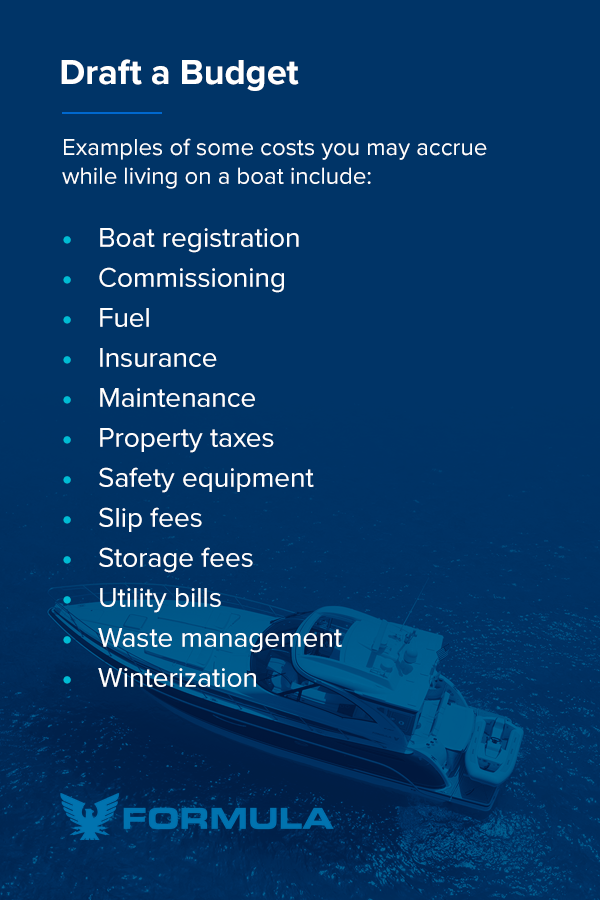
2. DRAFT A BUDGET
Your budget should cover two main categories:
- Boat costs: Including maintenance, insurance, fuel and purchasing costs, if applicable.
- Provision costs: Including utilities, food, electronics and necessity costs.
Examples of some costs you may accrue while living on a boat include:
- Boat registration
- Commissioning
- Maintenance
- Property taxes
- Safety equipment
- Storage fees
- Utility bills
- Waste management
- Winterization
Note that property taxes and utilities will often cost less on a boat compared to a home. Maintenance and slip fees are what increase the cost of living on a boat the most. For example, marine parts can be expensive and the amount of labor required to install them may be extensive. Your maintenance costs may be less if you can DIY different repairs, but if you rely on a professional, you will likely have to pay a higher price.
Once you have an estimate of your monthly or yearly expenses, budget for a bit more. This cushion can help support you in emergencies or when you have unforeseen expenses.
3. GATHER YOUR FUNDS
When you have a budget in mind, consider how you will cover the necessary costs. You may opt to begin saving money or use money you’ve already saved. You can also choose to diversify your income if you’re planning to adventure for multiple years. To bring in extra cash, think about renting out your home or committing to freelance work.
You may be able to save money by gaining the right experience before living aboard. If you have limited knowledge about marine engines, volunteering at a marina or taking a few courses can help you learn the ins and outs of your sports boat or yacht. This may equip you to handle more maintenance tasks on your own, which can help save money on labor costs.
Knowing what you’re getting into, having the right resources and setting a budget can help make living on the water as smooth and relaxing as you’ve dreamed.
Other Important Questions About Living on a Boat
To get the most out of the liveaboard lifestyle, think about some of the following questions before you start your new venture:
- Am I capable of handling boat maintenance and solving problems?
- Am I living in a boat-friendly climate year-round?
- Will my children or pets live with me?
- Do I have a steady income or saved money?
- Is this a change in lifestyle or a short-term commitment?
- What type of amenities will I need?
A few other questions you may have include the following.
1. DO YOU HAVE TO PAY TAXES IF YOU LIVE ON A HOUSEBOAT?
Unless you are constantly moving from one port to the next, you will likely have to pay property taxes. If you dock your boat at a marina or slip, you may pay taxes on the outline of water you occupy. These taxes help you and other boaters gain access to on-the-water services, onshore facilities and waterway maintenance.
2. CAN YOU MOVE ABOARD RIGHT AWAY IF YOU HAVE A SLIP?
If you have a slip, there may be a few additional steps you need to take before you move onto your boat full time. Review the following list for some tasks to complete before you move aboard:
- Inquire about a waiting list, if the marina has one.
- Confirm that the marina allows liveaboards.
- Ask about an application to become a permanent resident. If required, the application may request proof that you’re capable of making payments and adhering to their local regulations.
- Ask if your rates might go up. Liveaboard slip fees are usually higher than the average slip charge because you’re there full time. Your insurance rates may go up as well.
3. HOW MUCH IS INSURANCE ON A HOUSEBOAT?
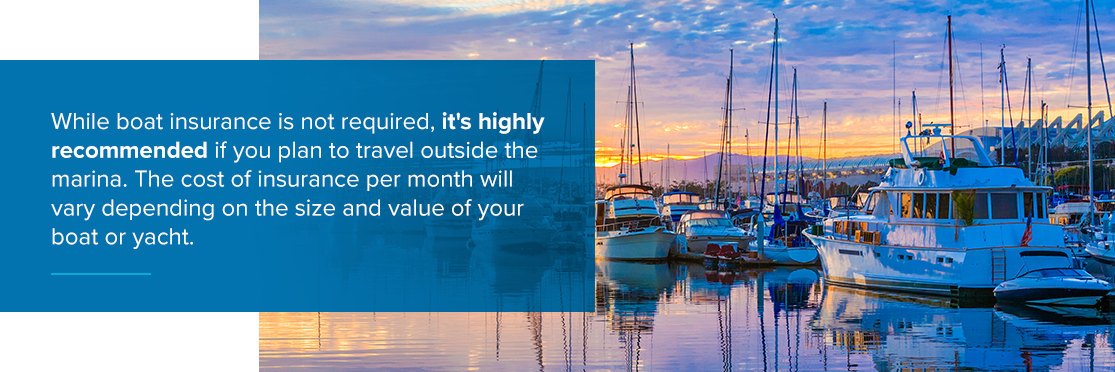
While boat insurance is not required, it’s highly recommended if you plan to travel outside the marina. The cost of insurance per month will vary depending on the size and value of your boat or yacht. Other factors that can affect your insurance rates include:
- Boat length
- Your expected boat use
- Boat horsepower
- The region of the country you live in
- Your credit score
- Your motor driving record
4. WILL LIFE BE SIMPLER LIVING ON A BOAT?
Even though a boat is smaller than a house and has less space to take care of, living on a boat isn’t always simpler. For example, small spaces mean you have less storage for food and other amenities. You also need to consider how you’ll handle grocery shopping, laundry, mail and other things you may take for granted at home, like a dishwasher. With a little bit of creativity, you can adapt to the changes you’ll encounter on a boat with ease.
5. CAN YOU LIVE ON A HOUSEBOAT IN THE WINTER?
Many boaters choose to put their boats to rest once winter rolls around, but that isn’t your only option. You can live aboard during the cold months when you invest in provisions like:
- Shrink-wrap
- Electric heaters
- Warm clothes
- A de-icing machine
What to Look for in a Liveaboard Boat
Different makes, models and sizes of boats are available to accommodate your liveaboard home, so the best boat for you will depend on your lifestyle, budget, application and destination.
When determining the best boats to live on full time, here are a few questions to consider:
- Are you working from your yacht or boat?
- Do you need a craft to transport you across different bodies of water or to the nearest port?
- How many people will be full-time residents on the boat?
- How many necessities are you bringing?
- Is your plan to live full time on the boat or periodically?
Once you have an idea of what you need, you can determine what type of boat you want to live on . You will want to invest in a watercraft that maximizes your space-to-budget ratio. For example, powerboats give you the most living space per square foot of the boat with spacious areas above the water, excellent headroom and good storage. Sport boats also have space above and below deck for dining, living and entertainment.
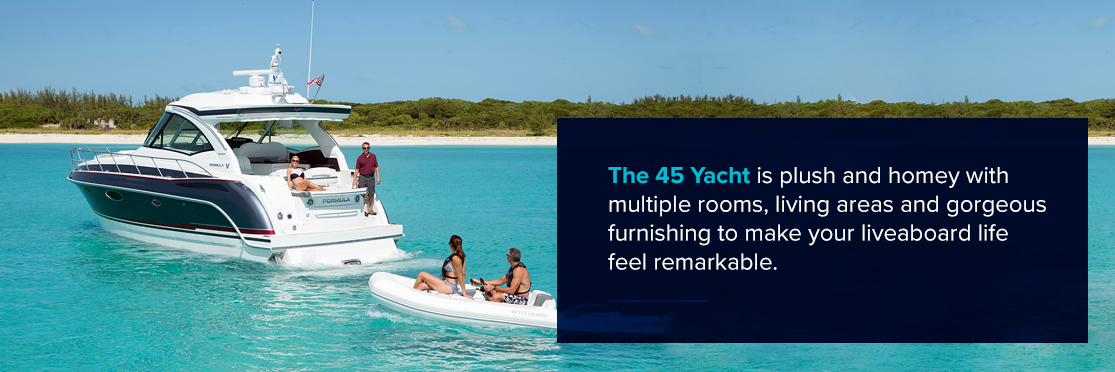
You can also match the boat to your lifestyle with a luxury yacht, like the Formula 45 Yacht. The 45 Yacht is plush and homey with multiple rooms, living areas and gorgeous furnishing to make your liveaboard life feel remarkable. It also features:
- A sunroof and windshield with panoramic views
- An air conditioning system
- A port-side lounge
- A cherry dining table
- A 40-inch widescreen TV
- A refrigerator
- Abundant storage
We deem the 45 Yacht as one of the best boats to live on full time because of its sought-after amenities, technology, comfort and transportation abilities.
About Formula Boats
Formula Boats is a family-owned company based in Decatur, Indiana. Since our beginning, we’ve been dedicated to continually improving and developing our line of sport boats. We craft incredible boats with uncompromised quality, fine-tuned designs and authentic craftsmanship.
Our boats are renowned for stunning styles, advanced engineering and exciting performance to help you enjoy priceless moments — whether you’re living aboard on your own or with your family.
We’ve advanced our marine manufacturing techniques over the past 60 years to offer the FormulaFlex™ program that allows for individual personalization. We understand that customization and flexibility are what you expect when it comes to creating your dream boat, so we enable you to control the following aspects in your custom design:
- Cabin fabrics, cabinetry and Corian surfaces
- Electronic positioning
- Hull and outboard setups
- Interchangeable graphic color selections
- Upholstery base, piping and accent colors
At Formula Boats, we aim to surpass all your expectations and take pride in our customer-oriented services. We build for you, not the masses, with our personalized and legendary line of boats.
Living Aboard With a Customized Boat From Formula Boats

You can rely on Formula Boats for standout products as you make the transition to living aboard. Our experts can engineer powerboats to your exact specifications in our 575,000 square-foot manufacturing facility. We work to deliver a gratifying experience on the water through superior quality and service.
When you’re searching for the ideal boat to live on at sea, we have the customization you demand. Browse our line of powerboats or contact our dedicated team of professionals to learn more today.
Contact Dealer
This site is protected by reCAPTCHA and the Google Privacy Policy and Terms of Service apply
Cost of Living On A Sailboat (Monthly Breakdown)
The cost of living on a sailboat full-time is approximately $1,880 per month or $22,560 per year.
Please keep in mind that the cost of living on a sailboat can vary depending on your specific location, the condition of the vessel, the size of the boat and your boating experience.
The cost of living on a sailboat can be broken down into 9 monthly expenses including:
- Boat Marina Fees
- Boat Insurance Cost
- Boat Maintenance Fees
- Fuel Expenses
- Grocery Costs
- Boat Gear Costs
- Entertainment Costs
- Internet Costs
- Miscellaneous Costs
Below is a cost of living on a sailboat table summary.
| Expenses | Cost (Per Month) |
|---|---|
| Marine Insurance Cost | $55 |
| Maintenance Cost | $250 |
| Marina Fees | $10 to $20 per foot |
| Fuel Costs | $150 |
| Entertainment Costs | $200 |
| Internet Costs | $100 |
| Grocery Costs | $450 |
| Miscellaneous Costs | $125 |
| Boat Gear Costs | $100 |
1. Boat Marina Fees
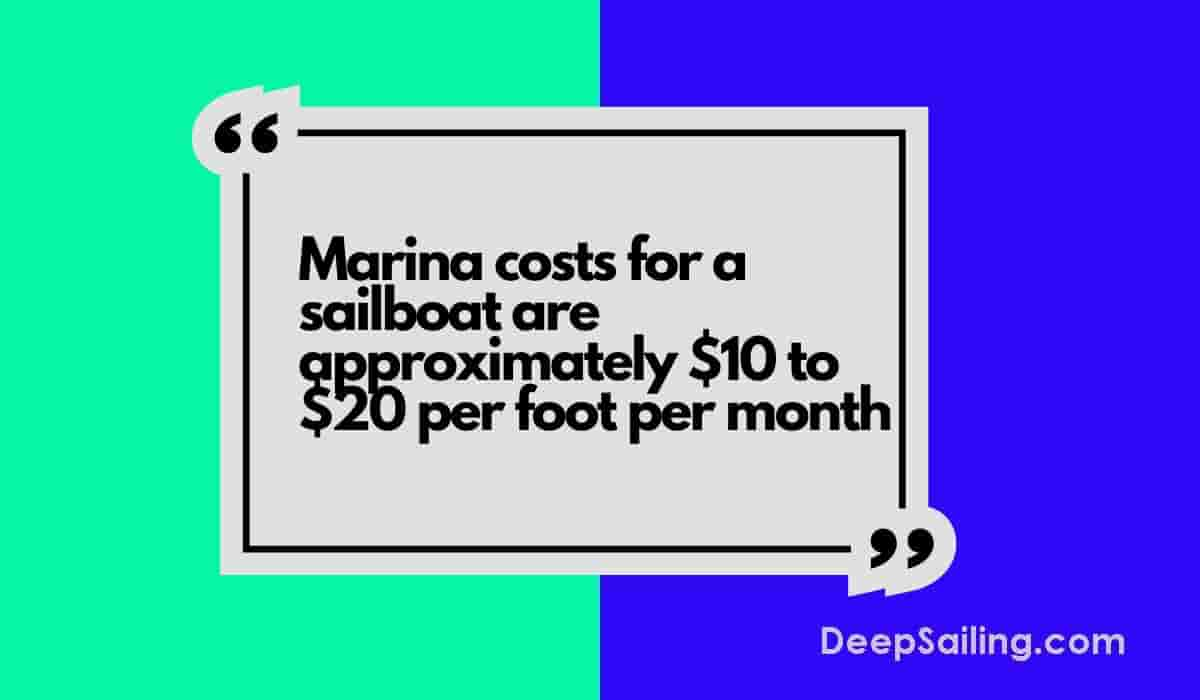
The first cost to consider when living on a sailboat is the marina fees/slip fees.
The marina costs for a sailboat are approximately $10 to $20 per foot per month.
For example, a sailboat owner with a boat size of 30 feet will typically pay between $300 and $600 per month in slip fees to stay at a marina.
A marina will charge a boat owner on a per-foot basis based on the length of the vessel.
The size of the boat and the location of the marina will have a large influence on the price charged to boat owners with marinas in Florida typically being the most expensive in America compared to other locations.
Paying marina fees gives boat owners access to boat cleaning services, electricity, internet access, pump-out services and facilities, waste removal services and a marine store.
Some boat owners prefer anchoring which is free of charge. Anchoring can be the best option during warmer months from April until November when marina facilities are needed less.
Boat marina costs can be reduced by mooring in cheaper marina locations, only using the marina when necessary or anchoring the boat off the coast away from the marina.
2. Boat Insurance Cost
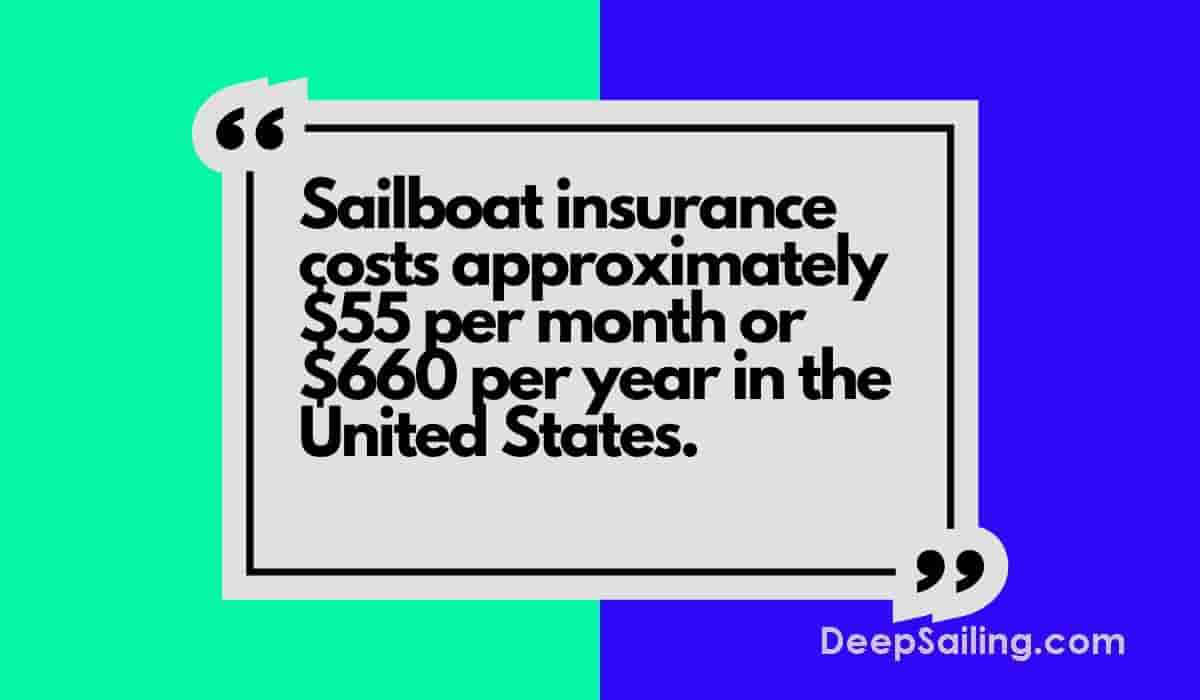
The second cost to consider when living on a sailboat is the boat insurance fee.
The cost of sailboat insurance is approximately $55 per month or $660 per year.
This is an approximate cost for the average sailboat owner living onboard their vessel in America.
According to Progressive , the annual Progressive boat insurance policy cost for the insurance policies they issued to boat owners in America ranged from $250 to $700 per year.
To get an accurate boat insurance cost for your specific sailboat, contact marine insurance providers for quotes.
The cost of boat insurance will vary based on the size, location and condition of the sailboat as well as a boat owner's experience and claims history.
Typically, the boat insurance cost will be 1% to 4% of the total retail value of your sailboat.
Boat insurance is the most expensive in locations that suffer from hurricanes like Florida and Texas.
Boat insurance costs can be reduced by browsing insurance providers, using cheaper sailboats, using the boat in lower-risk areas and increasing your boat experience.
3. Boat Maintenance Costs
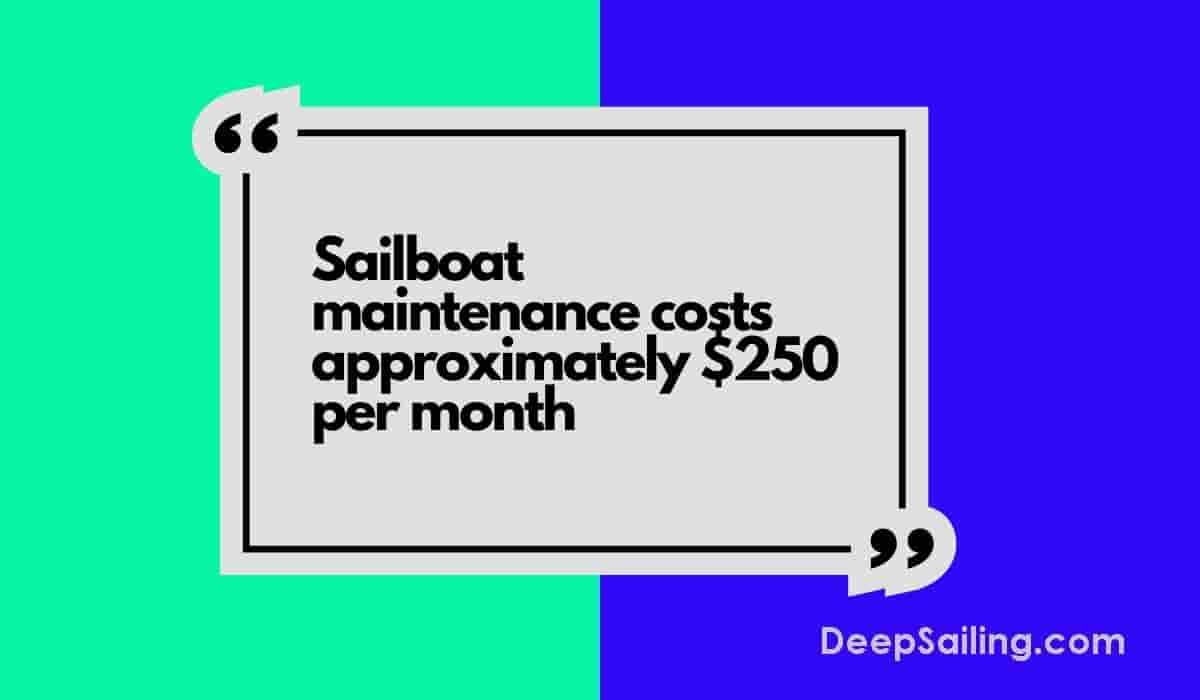
The third cost to consider when living on a sailboat is the maintenance cost.
The average cost of sailboat maintenance is $250 per month or $3,000 per year.
A sailboat's maintenance cost can vary based on the condition, size, age and location of the sailboat as well as the boat owner's experience with repairing and maintaining the boat.
Boat maintenance cost includes paying for spare parts, cleaning supplies, boat paint, engine services, repairing fridges, electronics, lines, cookers, windows, seats, toilets, deck materials etc.
Boat maintenance costs can be reduced by using second-hand parts, manually repairing the sailboat yourself and treating the boat with care.
4. Fuel Expenses
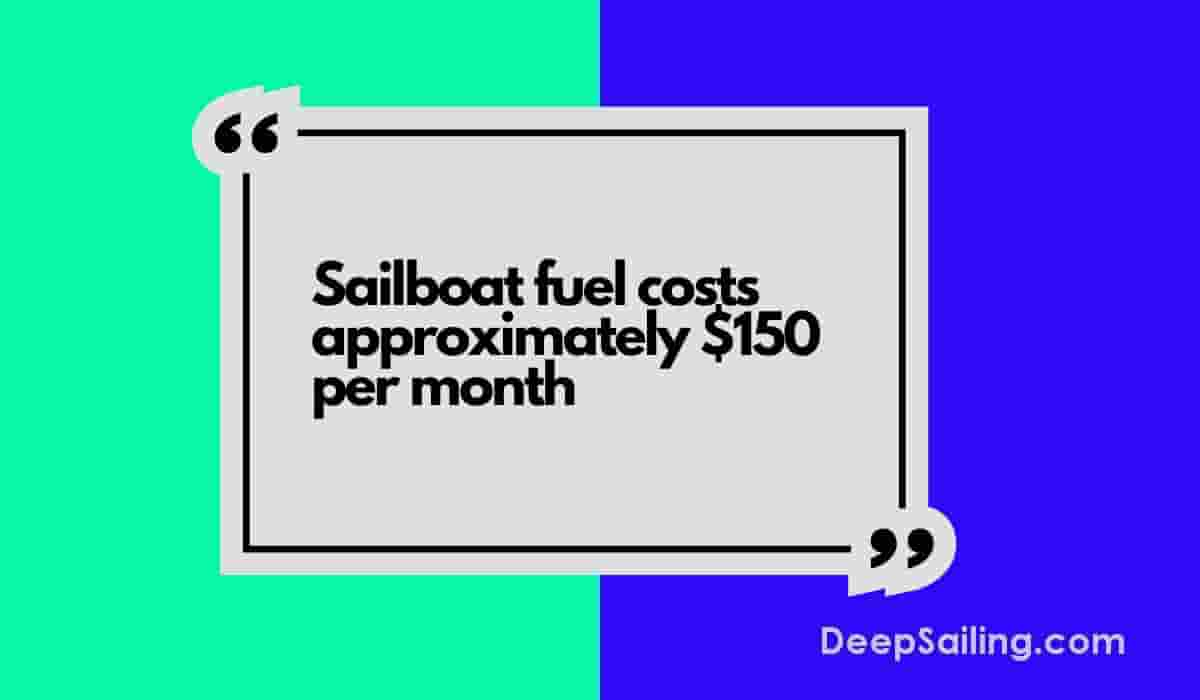
The fourth cost to consider when living on a sailboat is the fuel cost.
Sailboat fuel costs approximately $150 per month or $1,800 per year.
Sailboat fuel costs include paying for diesel or gas for the boat engine and buying propane fuel for sailboat heating and cooking while living onboard.
The factors that affect the sailboat fuel costs are the location, weather, size and condition of the boat as well as the frequency of use.
In the winter, sailboat fuel costs tend to rise whereas they are cheaper in the months from April until September.
To reduce the fuel costs of a sailboat, use the sails more often rather than the boat motor. Sailboat fuel costs can also be reduced by only traveling when it is the optimal time for the current which can make a large difference in fuel efficiency.
5. Grocery Costs
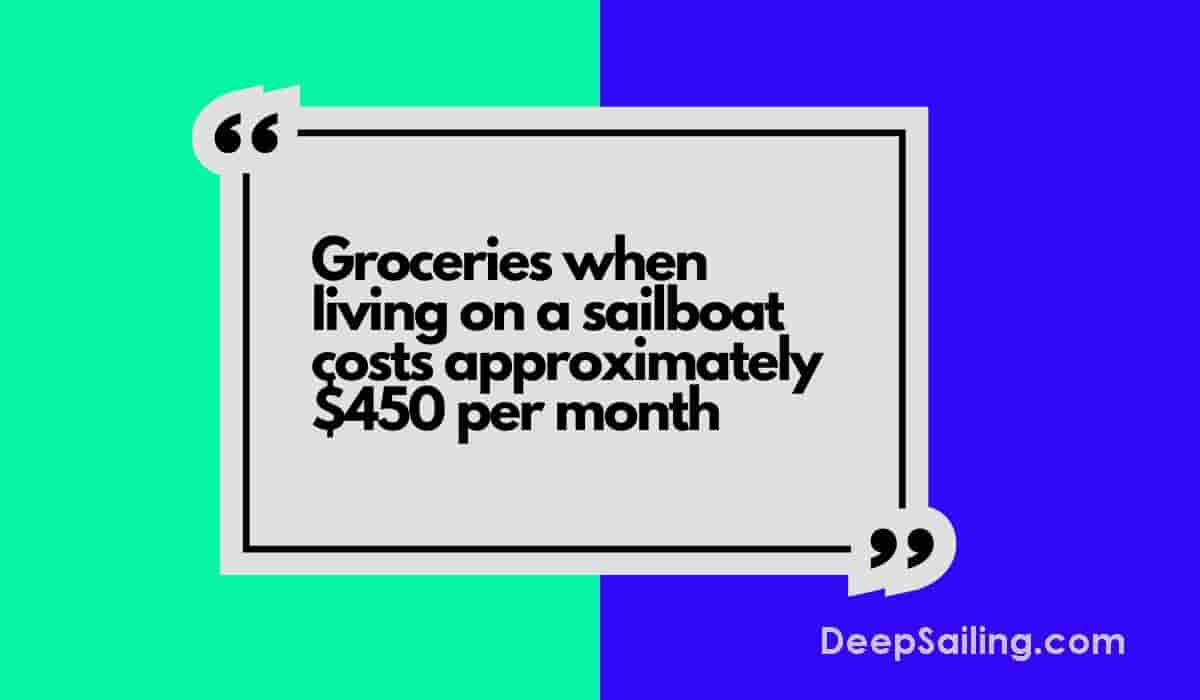
The fifth cost to consider when living on a sailboat is the groceries cost.
The cost of groceries when living on a sailboat is approximately $450 per month or $5,400 per year.
Grocery costs include paying for food, drinks, bathing supplies and kitchen cleaning supplies.
The grocery costs remain the same year-round. To reduce the grocery costs when living onboard a sailboat, boat owners can choose to catch fish by fishing from their boat. However, this will only cause a small reduction.
A saltwater-to-freshwater converter can be used to get a fresh supply of drinkable water without having to spend money on buying drinks. This will only cause a small reduction in costs too.
6. Boating Gear Costs
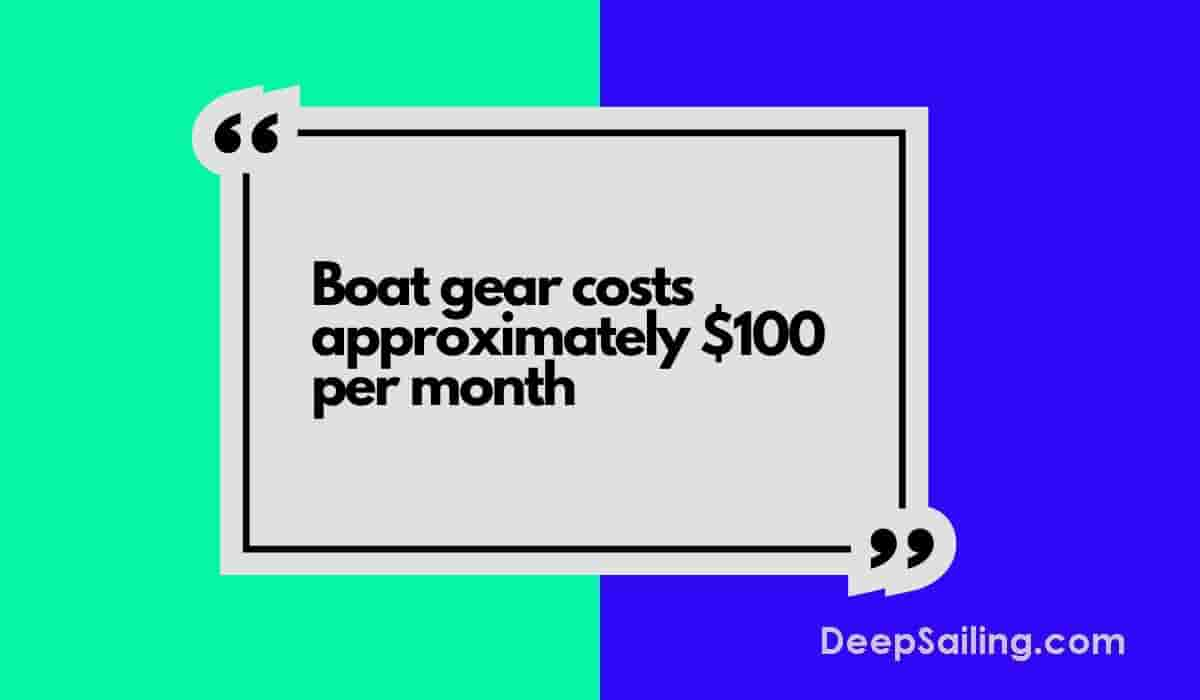
The sixth cost to consider when living onboard a sailboat is boating gear costs.
The approximate cost of boating gear when living on a sailboat is $100 per month or $1,200 per year.
Boating gear costs include paying for gear like sailing sunglasses, sailing jackets, swim gear, fishing gear, sunscreen, wetsuits, sailing hats, fire blankets, and general boating accessories.
The boating gear cost is the most expensive in the winter months when extra sailing clothing is needed to keep warm.
To reduce the cost of boating gear, take good care of your current boat gear to ensure it lasts longer and purchase high-quality boating accessories that will last for a long time.
7. Entertainment Cost
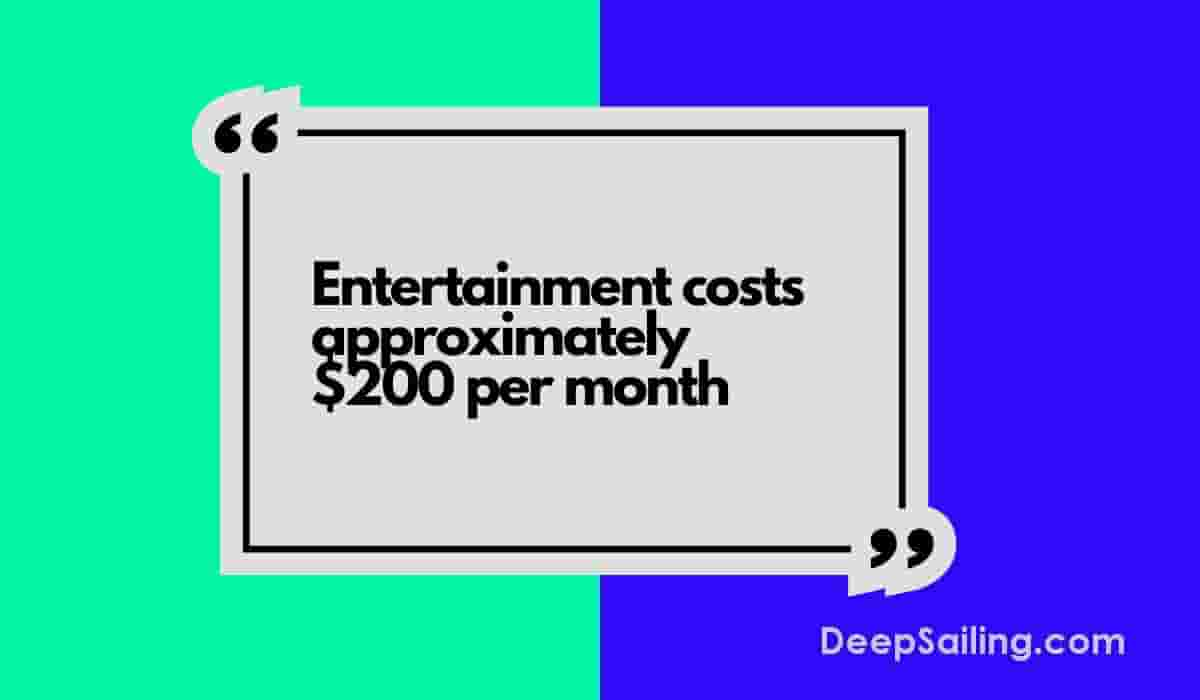
The seventh cost to consider when living onboard a sailboat is the entertainment cost.
The cost of entertainment when living on a sailboat is approximately $200 per month or $2,400 per year.
Entertainment costs include paying for tv subscriptions, board games, dining out, trips to the cinema, etc.
The entertainment costs will not change throughout the year.
To reduce entertainment costs, find free entertaining activities to do rather than spend money for entertainment.

8. Internet Costs
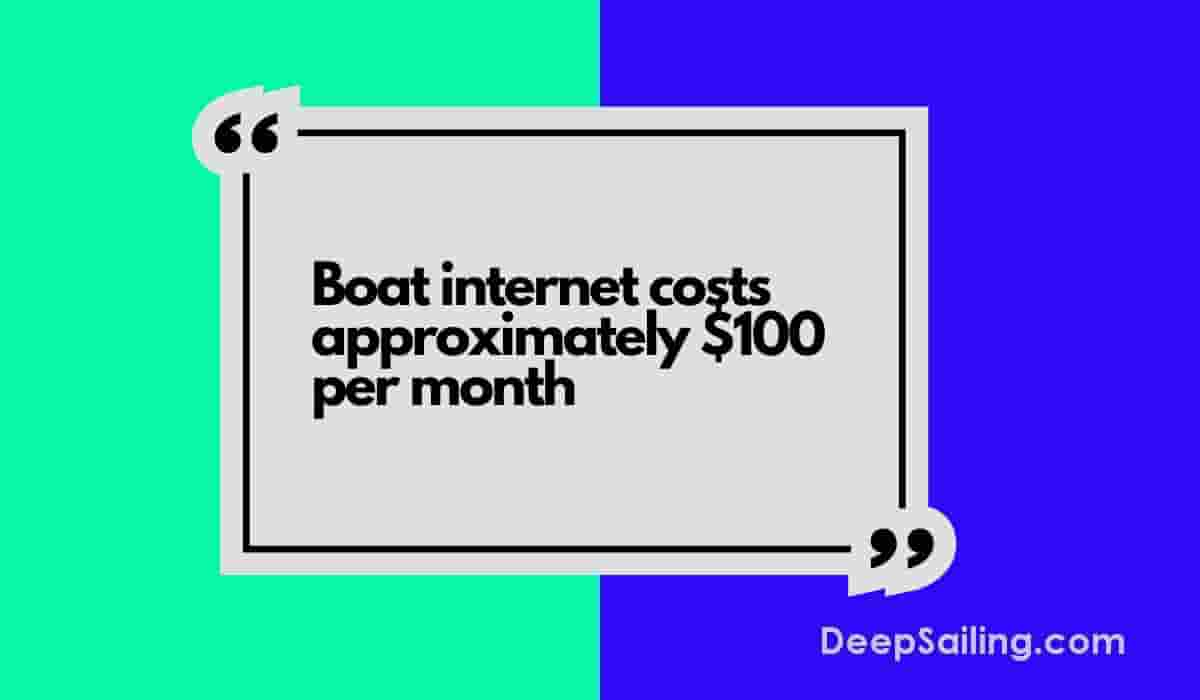
The eighth cost to consider when living on a sailboat is internet costs.
The cost of the internet when living on a sailboat is approximately $100 per month or $1,200 per year.
Internet costs include paying for a 4G/5G connection or satellite internet connection. It includes paying for a wi-fi router to connect to the sailboat too.
To reduce the internet cost on a sailboat, anchor the boat at marinas with a Wi-Fi connection included in the slip fees.
9. Miscellaneous Costs
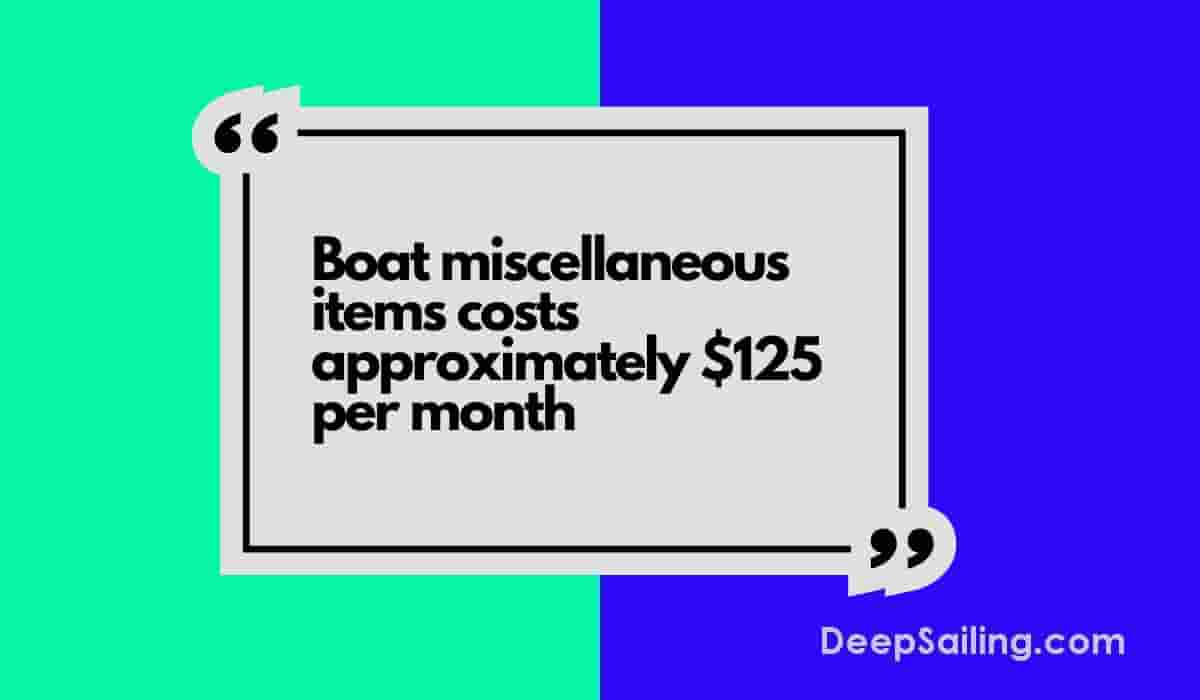
The ninth cost to consider when living on a sailboat is the miscellaneous costs.
The miscellaneous costs when living on a sailboat are approximately $125 per month or $1,500 per year.
Miscellaneous costs will typically remain the same throughout the year without much change.
Miscellaneous costs include costs associated with buying items like boat rugs, personal care items, boat care basics, coolers, boating decor, cooking utensils etc.
To reduce the miscellaneous costs, reduce the number of general boating items purchased and ensure the items that are purchased are of good quality so they last longer.
Frequently Asked Questions About The Cost Of Living On A Sailboat
Below are the most commonly asked questions about the cost of living on a sailboat.
How Much Does A Large Sailboat (Over 50ft) Cost To Live On?
The approximate cost to live on a large sailboat (over 50ft.) full-time is $3,200 per month or $38,400 per year.
What Is The Most Expensive Cost Associated With Living On A Sailboat?
The most expensive cost associated with living on a sailboat is the marina slip fees which are a monthly cost of $10 to $20 per foot of boat size.
How Can The Cost Of Living On A Sailboat Be Reduced?
The cost of living on a sailboat can be reduced by using the sails instead of boat fuel to power the boat when traveling, mooring the sailing vessel in a cheaper marina or anchoring outside a marina, browsing for cheaper marine insurance policies, ensuring care when using the vessel to keep repair costs low, downsizing to a smaller sailboat and keeping entertainment costs to a minimum by finding cheaper or free entertainment alternatives.
Better Sailing
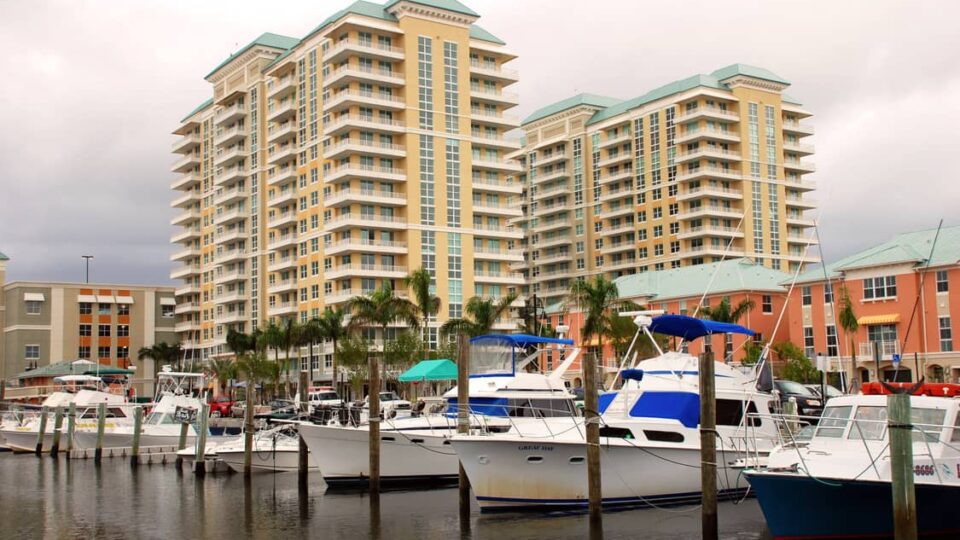
Living on a Boat in Texas: What you Need to Know (Best Liveaboard Marinas, Costs, etc)
People will either think it’s the best thing ever or that you’re essentially homeless if you tell them you live on a boat. If you live at anchor, this is especially true. By law, live a-boards are only allowed at waters leading to the sea. This happens in Texas, as well as in other US states and countries throughout the world. Examples include the Trinity River, Lake Livingston, Lake Houston, and surrounding Bays and Sounds. Texas has some of the most permissive liveaboard laws in the country, making it an excellent choice for liveaboards. If you plan to liveaboard in Texas, it’s important to research the costs and marinas to find out about their laws and where you can anchor long-term if necessary. So, in this article, I will give information about the liveaboard life in Texas, the marinas, as well as the general costs. Follow me!
Information about the Liveaboard Life in Texas
Texas is a place with reasonable liveaboard fees, delicious food, and easy access to the South. There are many beautiful seaside towns and marinas to visit or stay. Many marinas are brand new and state-of-the-art, and some of them haven’t yet experienced the price explosion that has afflicted other popular destinations. Currently, a nice marina space costs around $350 per month. This is much less than anywhere around Tampa Bay or New York in the north. The food is excellent, there is a wide range of bars and restaurants as well as numerous activities to engage in. Liveaboard communities are vibrant and the state of Texas has fair liveaboard laws.
Certain Texas marinas also allow you to pay for your slip annually rather than monthly, which can save you a lot of money. A slip appropriate for a boat up to 60 feet can generally be had for around $4,200 per year or $350 per month. It would be helpful if you can have an idea of the pricing range you’re searching for. For instance, Palacios, Port Lavaca, and Ingleside all have affordable marinas that I believe allow liveaboards. Island Moorings in Port Aransas is more pricey yet nicer. In Rockport, there are several lovely marinas, but they don’t all allow liveaboards. Matagorda Harbor Marina is now offering a nice discount. They have brand new floating docks, $200 floating slips (40 feet), and convenient gulf access.
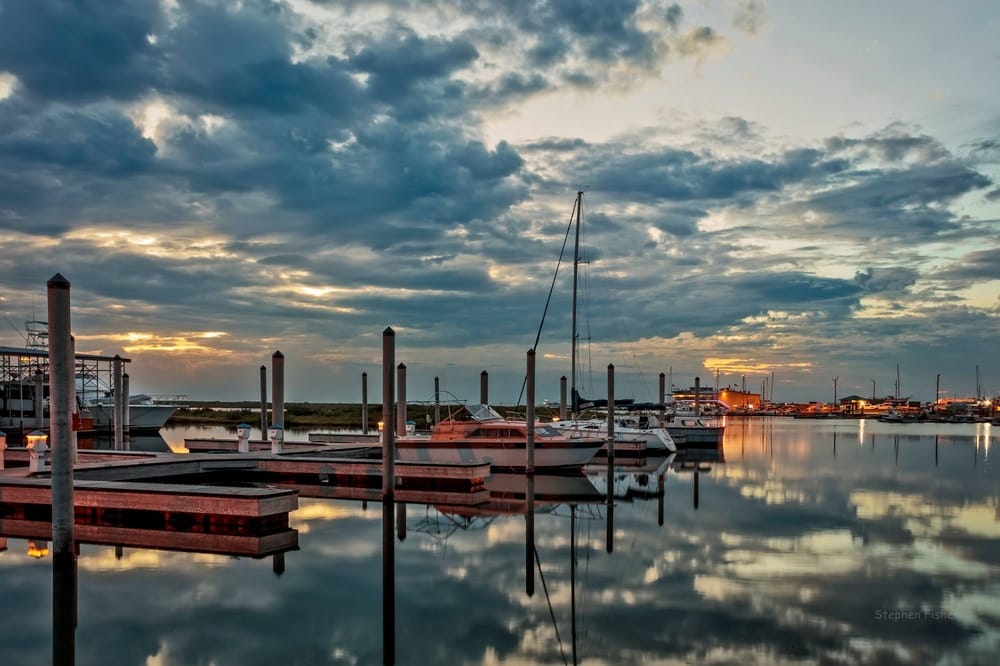
>>Also Read: Living on a Boat in California: What you Need to Know
Liveaboard Laws in Texas
In the state of Texas, there are currently no laws preventing liveaboards, although there are various local ordinances that require additional paperwork and taxes. If you live full time on your boat in a marina, Corpus Cristi, for example, demands you to take out a form and pay a fee. In some cases, you could stay at the marina part of the time and anchor elsewhere the rest of the time to avoid the paperwork and fees. It’s a good idea to contact local officials or even marina owners in the city where you’re interested. This will provide you with some insider information, and they may often offer ways to save you time and money.
If you decide to liveaboard in Texas, make contact with several cities and marinas to inquire about their policies on living aboard your boat and where you can anchor long-term if needed. Then you must consider whether the added hassle of living anchored for the majority of the time is worth it. Or, whether it is preferable to pay the marina or town mooring costs. Texas, as one of the most laid-back states for liveaboards, can be an excellent choice. As with other states, each city will frequently have its own set of local laws and regulations, so do your research before deciding where you wish to moor your boat.
Information about Liveaboard Marinas in Texas
The marina you will choose to live on your boat will determine a big part of your budget. A significant amount of your overall charges will be determined by that. Smaller powerboats that are brought in and out of the water on a regular basis will not require a monthly mooring or dock slip. But, trailers can cost anywhere from $2,000 to $5,000.
The cost of a slip is determined by the location, design, and size of your boat. A 28-foot covered slip at Lewisville Lake’s Cottonwood Creek Marina, for example, costs around $4,000 per month. A slip at the Bayland Marina on the Gulf Coast costs roughly $2 per foot per night. It varies across Texas, so do some research on the slip rate in the area where you’ll be staying. This has to happen before buying the boat. Like this, you will have a better idea of the overall financial picture.
Island Moorings is a lovely place to stay. Port Aransas is a wonderful town, although it is primarily a tourist destination. The marina is beautiful, well-run, and bustling. The slip costs around $350, including electricity. Port A is a great spot, but they don’t have any 40′ (or 50′) slips. You might be able to get a slip on the new transient pier. For a storm, this location is extremely vulnerable. Palacios and Port Lavaca are pleasant areas with inexpensive marinas, but they are a great way from any sailing opportunities. There is also a marina in Port O’Connor, St Christopher marina. These are all lovely small Texas towns. Palacios is a shrimper’s paradise. Port O’Connor is a tourist town with fishermen, while Port Lavaca is a tiny town with a lot of people.
Ingleside’s Bahia is in a nice location and is reasonably priced. It’s a different kind of environment. I believe that most people will either like it or dislike it, so you should go check it out to see if it is right for you. It is a very lively and easygoing marina with a $25 liveaboard fee. The Matagorda Marina is a wonderful marina at a good price. It’s a busy marina, and largely for fishermen. Although it has good gulf access, it is located far from any bay sailing options. Island Moorings Marina is great. But, there’s the exception of a small draft (about 5′) and bugs in the summer. Hurricane protection is excellent.
Keep in mind that there are no 40′ slips in the new part of Corpus Christi City Marina. You’d either be stuck in the old section or in the new section. But, the marina has a fantastic position in the heart of the city. This is a great experience of liveaboards. Key Allegro does not accept liveaboards in the Rockport region. At Cove Harbor, there is a new marina which is one of the quietest places to live in. Lastly, the Fulton Marina is surrounded by fixed piers and is highly exposed.
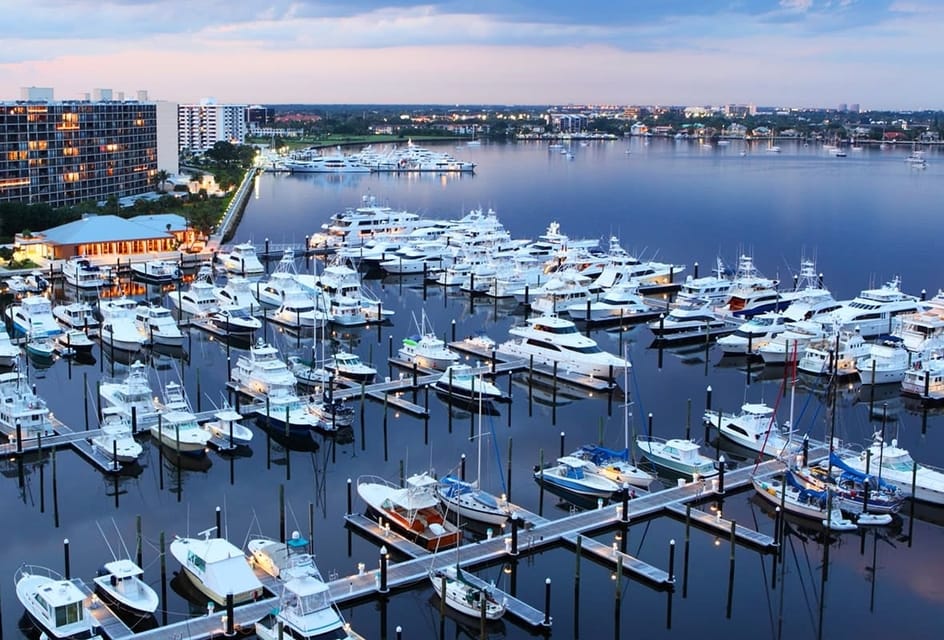
>>Also Read: Best Sailing Destinations in the Gulf of Mexico
Best Marinas in Texas
- Alice Faye’s on the Bay Marina, Rockport-Fulton
- Cove Harbor Marina, Rockport
- Fulton Beach Marina, Fulton
- Bal Harbor Marina, Nassau Bay
- Seabrook Marina, Seabrook
- Sea Ranch Marina, South Padre Island
- Port Aransas Marina, Port Aransas
- Island Moorings Marina, Port Aransas
- Corpus Christi Marina, Corpus Christi
- City of Port Isabel City Docks, Port Isabel Channel
- Cypress Creek Marina, Lake Travis
- Bastrop Marina, Freeport
- Bridge Harbor Yacht Club, Freeport
- Kirby Marina, Freeport
- Eagle Point Fishing Camp Marina, San Leon
- San Leon Marina, San Leon
- Galveston Yacht Basin, Galveston
- Teakwood Marina, Galveston
- Kemah Boardwalk Marina, Kemah
- Waterford Harbor Yacht Club, Kemah
- Lakewood Yacht Club, Seabrook
- Clear Lake Marine Center, Seabrook
- Hopper’s Landing Marina, Austwell
- Houston Yacht Club, La Porte
- Harbor Bay Marina, Lake Ray Hubbard
- Harbor One Marina, Eagle Mountain Lake
- Highview Marina – Lake Bardwell
- Harbor Inn Marina, Richland-Chambers Lake
- Holiday Shores Marina – Lake Livingston
- Hurst Harbor Marina – Lake Travis
Cost of Owning a Boat in Texas
The cost of owning a boat is determined by the type of boat you want to buy. Jet Skis are the cheapest way to get into boating, costing anywhere from $6,000 to $10,000 but with fewer expenses than larger powerboats or sailboats. However, all boats will have to pay for fuel, maintenance, insurance, and other expenses. Pontoon boats, outboard motorboats, inboard motorboats, and sailboats are the four types of boats you’ll see whether you’re on one of Texas’ many lovely lakes or cruise the bays and oceans of the Texas coast. Each comes with its own set of costs. Bear in mind that small sailing dinghies may demand more fuel than powerful speedboats.
It’s important to note that sails and rigging will need to be replaced on a regular basis on larger sailing vessels. The age and condition of a boat will also have an impact on the expense of continuing maintenance. In general, Texas liveaboards are lucky. Summers are hot, and winters are mild, so you can normally use your boat all year.
However, your boat will need to come out of the water for maintenance or protection during hurricane season. And, this is why winterizing and storage is a crucial (and frequently underestimated) cost of boat ownership. The average cost of hauling out is $26 per foot. Then you’ll have to pay $10 to $15 per foot to shrink-wrap your boat for storage, plus another $50 per foot to store it. In total, the full package may cost as much as $91 per foot, which is a significant cost to consider if your boat requires annual maintenance.
Maintenance is one of the expenditures of owning a boat that might be difficult to estimate, even if it isn’t fully concealed. The wear and tear on the boat’s systems and equipment will be greater in saltwater than in freshwater. Like car maintenance, some years may go by without requiring much attention, while other years everything seems to fail at once. The amount of annual maintenance you can expect depends on the boat’s age and condition. Prepare to spend up to ten percent of the total worth of your boat on annual upkeep. These expenses will also be determined by whether you hire professionals to complete the repair or whether you can perform some maintenance yourself.

>>Also Read: Best Sailing Lakes in Texas
Fuel, Insurance and Other Important Considerations for Liveaboards
The cost of gasoline on an annual basis is determined by the type of boat and how often you use it. Some motorboats can consume up to 30 gallons of gas every hour. If you burn gasoline at that pace and spend five hours on the water each day, you’ll use 100 to 150 gallons of gas every day. Depending on how often you use your boat, you could end up spending thousands of dollars on gas each year. In other words, fuel expenditures should be factored into your budget.
Bear in mind that every year, thousands of watercraft accidents occur in Texas, with hundreds of people killed and millions of dollars in property damage. Meaning that boat insurance is a must-have. Fortunately, your Texas Farm Bureau Insurance Agent will be able to assist you with the insurance procedure. So, you should contact your Texas Farm Bureau Insurance Agent to learn more about the policies applied to you.
And, like anything new you buy for your boat, you’ll want to update after a while. Every boat, whether it’s for new engines, onboard fishing gear, new sails, or rigging, will require investment over time. A brand-new fishfinder, for example, might cost upwards of $900. The cost of a radar system for an offshore sailboat might be in the thousands of dollars. So, don’t forget to budget for keeping your onboard safety equipment up to date and in good working order.
Regrettably, your boat, like your automobile, begins to lose value as soon as you take possession of the keys. While depreciation expenses vary depending on the boat’s make, model, age, and condition, a fair rule of thumb is to assume a 10% depreciation the first year and a 7% depreciation the following years. When it comes time to sell your boat, there are other hidden charges to consider. Allow eight months to promote your boat, as well as a 10% to 15% brokerage charge after the purchase is closed.
>>Also Read: Living on a Boat in Florida – Best Liveaboard Marinas, Costs and Tips
Hurricane Season in Texas
The Atlantic hurricane season runs from June 1 to November 30 and is expected to be busy, according to meteorologists. The Climate Prediction Center of the National Oceanic and Atmospheric Administration predicts an above-normal hurricane season. The National Oceanic and Atmospheric Administration (NOAA) predicts 13 to 20 named storms in 2021. In addition, winds of 39 mph or higher. Six to ten of them might become hurricanes (winds of 74 mph or more), with three to five of them being major hurricanes (category 3, 4, or 5; with winds of 111 mph or higher).
So, as a liveaboard, it’s important to keep an eye on the weather forecast. In case a storm is expected to make landfall, you have to stay away from the boat. Forecast conditions can be found on the websites of the National Weather Service and the National Hurricane Center. Also, you should always check the marina’s hurricane plan. If the storm or hurricane is five days out, some marinas will begin to evacuate workers and shut down areas and services. The weather may be sunny and blue skies on the day you arrive, but the marina’s personnel is prepared for the storm’s potential threats.
Moreover, you have to be patient when a storm passes. Even if the storm didn’t pass through the area, some marinas are going to close for a specific amount of time. Most personnel are picking up and removing debris caused by the hurricane’s strong winds.
Keep in mind that flooding along the coast should be avoided. Coastal flooding can be caused by low-pressure storms in the Gulf of Mexico, even hundreds of miles away from the marinas. Water can sometimes reach all the way to the beach sand dunes, closing off a shoreline due to the standing water. During this period, you will not be able to drive on the beach. Lastly, rip currents exist and are extremely dangerous. Rip currents arise in low regions or cracks in sandbars, as well as around constructions like groins, jetties, and piers. Beachgoers must be mindful of rip currents even on a quiet day.
>>Also Read: Living on a Boat in New York
Living on a Boat in Texas – The Bottom Line
The two happiest days in a boat owner’s life, according to the traditional proverb, are the day they buy the boat and the day they sell it. The days in between, however, do not have to be stressful and anxious. Each day on the water may be well worth the money with some serious planning and the right budgeting. Hopefully, you now have a good idea of whether Texas is the right place to live for you. However, before arranging your liveaboard lifestyle, you should always contact the marina of your choosing.
In Texas, you can live on your boat in an affordable way of living in comparison with California or New York. The weather is often favorable, and there are countless chances and activities to select from. Spend your next holiday anchored at one of the marinas to get a feel for the place if you’re not sure if you want to live there full-time. It can offer you a taste of what your life could be like if you decide to take the next step. And, there are many vibrant marinas in Texas with reasonable slip fees to choose from. Lastly, the liveaboard laws in the state of Texas are favorable for boaters.
I wish that this article gave you a grasp of things about the liveaboard life in Texas. If you plan ahead and do some thorough research it’s not that hard and life there is great. Wish you the best!
Peter is the editor of Better Sailing. He has sailed for countless hours and has maintained his own boats and sailboats for years. After years of trial and error, he decided to start this website to share the knowledge.
Related Posts

Sailing with Friends: Tie Knots, Navigate the Seas and Create Unforgettable Memories
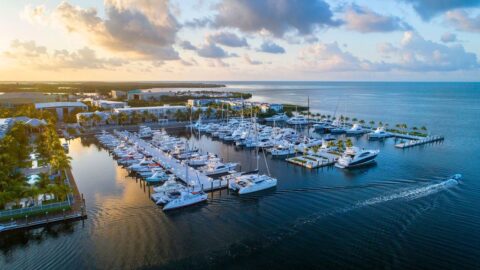
Best Boating Destinations in the Florida Keys

Best Boat Generators
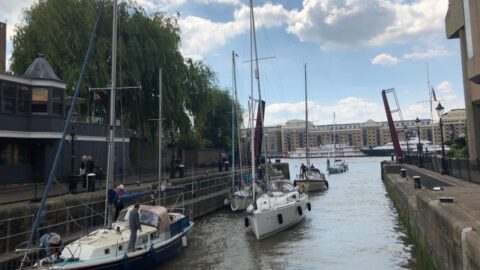
Living on a Boat in London: What you Need to Know (Best Liveaboard Marinas, Costs, etc)
- Buyer's Guide
- Destinations
- Maintenance
- Sailing Info
Hit enter to search or ESC to close.
How Much Does it Cost to Live on a Sailboat Full-Time?
What is the cost of living on a sailboat full-time? And can it be affordable? Yes! Absolutely it can.
It’s a dream for many to leave the land behind with its 9 to 5s, crowded cities, and traffic and take to the sea. To live aboard a sailboat for an extended period, maybe even indefinitely.
However, before casting off and setting sail into the sunset, one of the first questions, and perhaps the first hurdle to living this sailing lifestyle, is knowing how much such an adventure will cost.
Contrary to popular belief, boat life isn’t exclusively for wealthy people. In fact, living on a sailboat can be very affordable. Of course, a lot depends on where you’re planning to sail and what kind of lifestyle you want. Regardless of your budget, there are a number of common costs associated with living on a boat full-time that all sailboat owners should consider.
*All example costs given in $ USD
How Much Does Living on a Sailboat Full-Time Cost?
Living aboard a boat will generally cost somewhere between $500 and $10,000 per month at either extreme. For most, it’s probably somewhere close to $1,500 – $5000.
We spend somewhere around $2,500 per month living on a boat in the Mediterranean . That’s about $1,900 per month in living expenses plus a further $600 per month on boat-related expenses like servicing, repairs, boat insurance, and storage.
At the budget end of liveaboard life, are sailors living on smaller, older boats that they own outright, in areas where they can anchor regularly or have access to cheap mooring. In this case, overheads will be very low. If you can keep living costs down by cooking for yourself, not burning too much fuel motoring (either by sailing everywhere or simply staying put), and reducing maintenance and servicing costs by DIYing everything then live-aboard-life can be very cheap albeit very sparse.
On the other end of the spectrum, families leasing large, new boats that they use to explore widely can easily spend 10s of thousands in a single month.
Your cost of living on a sailboat will be completely dependent upon your own financial situation and personal aspirations for life on a boat. Let’s look at the various costs associated with living on a boat full time.
The Cost of Buying a Boat
One of the most obvious, and certainly the biggest, costs associated with the liveaboard life is the initial cost of purchasing a vessel to live on.
The cost of a boat will depend on your budget and criteria.
Realistically, a safe and seaworthy boat equipped for living aboard and with enough space for an individual or couple starts somewhere around $20,000. This will buy an older boat around thirty feet, but one that is sound and hopefully well maintained. There is no known upper limit for what you can spend on a boat, however, at the pointy end of the cruiser market, newer 50-foot monohulls cost hundreds of thousands of dollars and brand-new catamarans can cost over a million dollars.
To get an idea of how much a boat suitable for you and your crew’s needs will cost in your region head to Yacht World and plug in your criteria.
Other costs associated with purchasing a sailing vessel include:
- Pre-purchase survey reports – These are generally charged per foot and can cost between $10 – $25 per foot depending on the region your boat is in. Boat build material may also factor into the cost with wooden boats attracting higher inspection fees.
- Insurance – Liveaboard sailboat insurance, including third-party insurance which is almost universally mandatory, will vary substantially based on region, insurer, and boat value. On average an annual insurance policy should fall between $500 and $1,500 annually . Boat insurance is generally cheaper than home or vehicle insurance.
- Registration costs, once again will vary from region to region and based on the size of your boat and onboard motor. Registration itself usually costs several hundred dollars for a liveaboard-sized boat . It may be a one-time payment or an annual payment. Be aware, that there may be other costs associated with boat registration, for example, some authorities might require used boats to be hauled and inspected and any issues rectified which can quickly increase the cost of registering your boat.
Costs of Maintaining a Boat
Once you’ve bought a boat, the endless work and expense of maintenance begin immediately.
The old ‘rule of thumb’ is that maintenance costs for a boat will be around 10% of the purchase cost.
Older boats will require more maintenance more frequently and owners should err on the side of caution and may need to budget for more maintenance depending on the age and condition of their boat. There is a lot of equipment on a boat and ‘nautical’ products always seem to attract an inexplicable but hefty premium.
Engine, electrical systems, kitchen, safety equipment, ropes, anchors, sails, rigging, navigation, dinghy, outboard, the hull itself, the list of systems that may require spot repair or total overhaul at any given time goes on and on.
Being able to predict a potential range of maintenance costs will require having an accurate assessment of your maintenance needs. You can do this by keeping careful inventory and monitoring your systems.
Start with the recurring annual costs. For example:
- Inboard engine service
- Haul out, clean, and paint
- Outboard engine service
Next, consider which systems haven’t been updated or are starting to show signs of wear and anticipate potential maintenance or replacement costs. Try to stay on top of these issues as they arise to keep maintenance costs stable. For example:
- Sail Service (or Replacement)
- Worn out Rigging
- Electrical systems
- Electronic equipment such as sounders, navigation equipment or VHF radio
- Expiring safety equipment like flares, life jackets, EPIRB, and safety raft
Finally set aside some contingency funds, say 10% of the boat’s value to address the unexpected issues that will invariably arise. For example:
- Damaged rigging and equipment
- Plumbing issues
- Engine Issues
- Hull damage
For an in-depth look at some average costs for common boat maintenance tasks check out this article by Improve Sailing .
Costs of Mooring a Boat
No matter how ‘off grid’ you plan to get, at one point or another, you will need to moor your boat.
Like everything else, mooring and docking costs are wildly variable. The amount you will spend will depend largely on the size of your boat, how you plan to use it, and where you plan to sail it.
Boat size is perhaps the most significant variable when it comes to mooring. Prices are usually calculated per square meter. The longer and wider your boat is, the more expensive the mooring. For this reason, catamarans are generally the most costly sailboats to moor.
How you use it will also affect the amount of money you spend on mooring fees.
- Will you stay in one area year-round? And thus be able to get a much cheaper annual marina berth, rather than transient nightly berths which are much more expensive.
- If you plan on sailing your boat far and wide, do you want to spend a lot of time off your boat enjoying new places, attractions, and restaurants on the land?
- Are you a novice sailor not comfortable sleeping at anchor or sailing in bad weather
- Do you have a smaller boat without amenities like large water tanks, a water maker, or a large solar electrical system to comfortably sustain long periods away from the port?
These questions will help you understand how regularly you might want to moor the boat. However, you probably won’t know for sure until you begin sailing.
The costs of mooring are also very much dependent on where you plan to dock. Even within the same country or region, one place very popular for sailing with many amenities and attractions may be much more expensive than a nearby marina in a less popular area. You can easily research prices for marinas in a particular area to get an accurate idea of prices. If you are planning to remain mostly in one area, consider that long-term leases can offer far cheaper rates than transient mooring prices.
Marinas are the most obvious places to more but also the most expensive. Many regions have mooring buoys or public wharves that might be free to use or be far cheaper than a marina but lack facilities.
To summarise the cost of mooring your boat is highly variable but you can easily calculate a potential range of costs based on your specific situation.
If you have a small monohull and plan to spend the majority of your time on the anchor, only coming into a marina a few times a month in very bad weather or to resupply, and you choose your marinas carefully, you’re mooring costs could conceivably be kept under $100 a month.
If you have a larger catamaran, enjoy the safety and convenience of mooring in marinas, and plan to visit the most beautiful and famous sailing grounds in the world marina fees could easily exceed $2000 a month.
For most, it will be somewhere in between based on personal preference and budget.
Personally, currently sailing in Greece, we spend about $450 a month on marina fees. We have a small boat, a 29-foot monohull but we usually spend two nights in a marina each week, sometimes even more if there is poor weather.
Winter Marina Berth Costs
Sailors in areas with challenging winter conditions may choose to spend the summer months sailing from place to place spending time on anchor and in transient berths, and over winter continue living on their boats but permanently moored inside a marina. These semi-annual marina berths often cost less than berths in the summertime as many boats will be dry-docked and there is no demand for transient berths. Certain marinas have winter communities that return each year to wait out the winter in comfortable marinas with like-minded liveaboards.
Dry Docking
Some seasonal liveaboards may live on their sailboat only for the warmer months, and haul it out each winter for cheap storage. In areas that experience disadvantageous weather in the off-season dry docking your boat for the winter can be a cost-effective solution. Dry docking involves pulling the boat from the water and storing it on the land for the winter. Storing the boat on land is far cheaper than mooring your boat in a marina. Dry docking also provides an opportunity to perform maintenance on the hull.
Costs of Sailing a Boat
The wonderful thing about a sailboat is that the wind is free. Ostensibly you could liveaboard without any costs for traveling save for the costs of maintaining sails and rigging. In reality, if you plan to travel with your boat you may end up using your motor more than you thought. That being said, fuel costs for a moderately sized liveaboard boat (30 – 40 feet) should be negligible especially compared to transport costs on land.
We travel very slowly, we work during the week and do most of our sailing on the weekend. Often we travel less than 50 nautical miles a week. Say we sail half of that time that is 25 nautical miles a week to motor (basically nothing). Our boat tops out at a little over 5 kn. This means we might motor for about 5 hours at top speed we are burning about 2 to 3 liters of diesel an hour. Our fuel consumption is a paltry 10 – 15 liters per week! In 2022 marine diesel costs $2 a liter which puts our fuel costs at $20 – $30 a week.
Some weeks we have to travel more, and some less, sometimes there is more wind, sometimes less but overall fuel costs on our little sailboat are very manageable
Let’s look at the other end of the spectrum, a 50 foot Catamaran that has to cover a lot of ground sailing in a region without much reliable wind, but a lot of swell. Say this boat needs to travel 100 NM a week using only the motor and burns fuel at a rate of 12 liters an hour. With a faster top speed of 8 kn the larger boat might use 150 liters of fuel each week which in the current climate would cost around $300 per week.
Costs of Living on a Sailboat
The day-to-day cost of living on a sailboat will likely be similar to your day-to-day cost of living on land. We have included our budget here as an example of our weekly costs of sailing in the Mediterranean.
This hasn’t changed much for us. We still cook most meals onboard and go out to eat when we are in a marina.
We spend about $80 a week on groceries and another $70 on eating out. However, your own personal grocery budget on land is a pretty good indicator of what you might spend living on a boat.
We spend another $50 a week buying wine and beer and budget a further $50 for going to the bar. We set aside $12 for coffee from a cafe on the weekend.
Phone and Internet
This one comes as a bit of a surprise to most people but our total phone and internet costs are less than $500 per annum. We have one entry-level smartphone that cost $250. We use data-only sims in the places we sail and are currently using a $50 Cosmote Three Month Unlimited Data sim in Greece. When in a marina we can often access marina wifi.
Using this single phone and single prepaid data sim we are both able to work using video conferencing as well as stream television and upload our own movies and photos to social media. The limitations of relying on a smartphone are that you usually need to be in sight of a cellular tower. As we are sailing in Europe and stay close to shore this is not a problem for us. But this might be too limiting for some.
Other phone and internet gear that full-time sailors might consider are mast-mounted wi-fi hot spot which provides a dedicated hot spot 24/7 and greater range than a smartphone thanks to their powerful antennae and positioning. Antenna boosters for wifi and cellular data are also cost-effective ways of increasing your range.
The truth is that cellular data is so cheap and so readily available along the coasts of most major sailing destinations that a modern smartphone is all most sailors will need these days. However, for those intrepid explorers planning long passages far from shore, another solution may be required.
Satellite internet is the only option to stay connected if you plan to sail offshore. The cost of satellite internet has been prohibitively expensive for most for a long time. Startup costs of purchasing entry-level marine satellite dishes cost thousands of dollars and very basic plans with a small amount of data and slow speeds cost thousands more each year. Large amounts of high-speed internet at sea and the infrastructure to deliver it can easily cost 10’s of thousands of dollars.
Hopefully, as satellite internet becomes more widely adopted, the prices of satellite internet comes down giving off shore cruisers an affordable way to access high speed internet.
Entertainment
Boat life is rarely boring. We spend weekends sailing, anchoring in new bays and beaches, swimming fishing, and cooking.
When we reach a new town or city we will often spend a night in a marina, once or twice a week. This gives us the opportunity to leave the boat to explore a new area.
In total our entertainment spend boils down to
- Netflix – Free using Mum’s login details
- Spotify – $12 per month
- Bars – $50 per week
- Restaurants – $80 per week
Final Thoughts About the Costs of Living on a Boat
Of course, the cost of living on a sailboat full-time will be different for everyone. The biggest factors will be the boat you buy, how you use it, and where you intend to sail.
Sailing can be bare bones, basic, and frugal, it can be reasonably comfortable and moderately priced or it can be luxurious and mind-bogglingly expensive and everything in between.
Whatever your budget and whatever your sailing style, you are really only limited by your imagination.
Hopefully, we have given you a starting point to think about the cost of living on a sailboat full-time. But if you have any questions or comments please let us know below!
Looking for more sailing content? Have a look at these recent articles:
- The 13 Best Sailing Vlogs And Sailing Blogs (According to Us)
- 10 Things We Hated About Sailing Albania (And 5 Things We Loved)
- Buying a Boat In Croatia
Want to save this Cost of Living on a Sailboat Full-Time blog post for later? Pin it!
In 2016, I had been dumped by my girlfriend, fired from my job, and the lease on my house was running out. Facing moving back in with my parents, 26, jobless and alone I decided to listen to the message the universe was trying to send me. I took off on my first solo backpacking trip, with a one-way ticket to Bangkok and a well-thumbed Lonely Planet guide. From there I wandered Southeast and Central Asia, traveled the Great Steppe, and made my way across Russia and throughout Europe.
In Estonia I met Kelli, who, despite having a less frantic travel style, shared my my restless spirit and passion for exploration. Together, we embarked on a new journey, van life. Over four years we travelled across three different continents with three different vans.
In 2022, as the world began to re-open post COVID we took an opportunity to realise a long held dream, to live aboard a sailboat. Since then we have spent two summers in the Mediterranean, sailing and living aboard our little sail boat Whisper. When we aren't sailing we continue to live our nomadic lifestyle, guided by a philosophy of slow travel and self directed adventure be it by van or backpacking.
We find excitement through our journey into the unknown, stillness and content in the beauty of the places we discover and we find ourselves in the vastness of our world.
Hopefully, we can help you find what you're looking for too. Get lost with us and find your own path.
Leave a Reply Cancel reply
Your email address will not be published. Required fields are marked *
The Best Liveaboard Marinas in Florida (3 Budgets)
Florida has numerous live-aboard marinas, offering different prices, security, and attractions. The best ones are those in a convenient location that have luxurious amenities at an affordable price. In this article, we'll look at the best marinas in Florida that offer liveaboard options, broken down by region and budget.
Some of Florida's most exceptional liveaboard marinas include Bay Point Marina, Legendary Marina, and Sandestin Marina. They have world-class amenities and top-notch security but at a higher cost. Monroe Harbour Marina and Twin Dolphin Marina are some of your go-to places for affordable liveaboard marinas.
In North Florida, their best bets for liveaboard options are Panama City Marina and Jacksonville City Marina, which only require a medium budget. Let's look at a much longer list of other liveaboard marinas in each of these regions in Florida based on how much budget you have.
- Miami Beach Marina, Opal Key Resort and Marina, and Harbortown Marina are some of the best liveaboard options in South Florida.
- The Miami Beach Marina is situated in a prime location, so you will need to prepare a higher budget between $1,500 and $2,500 per month.
- East Coast Florida has some excellent liveaboard marinas with above-average amenities and security, such as Bahia Mar Marina and Palm Harbor Marina.
- Green Cove Springs Marina offers one of the cheapest liveaboard options in Florida, with rates starting at $10 per foot per month.
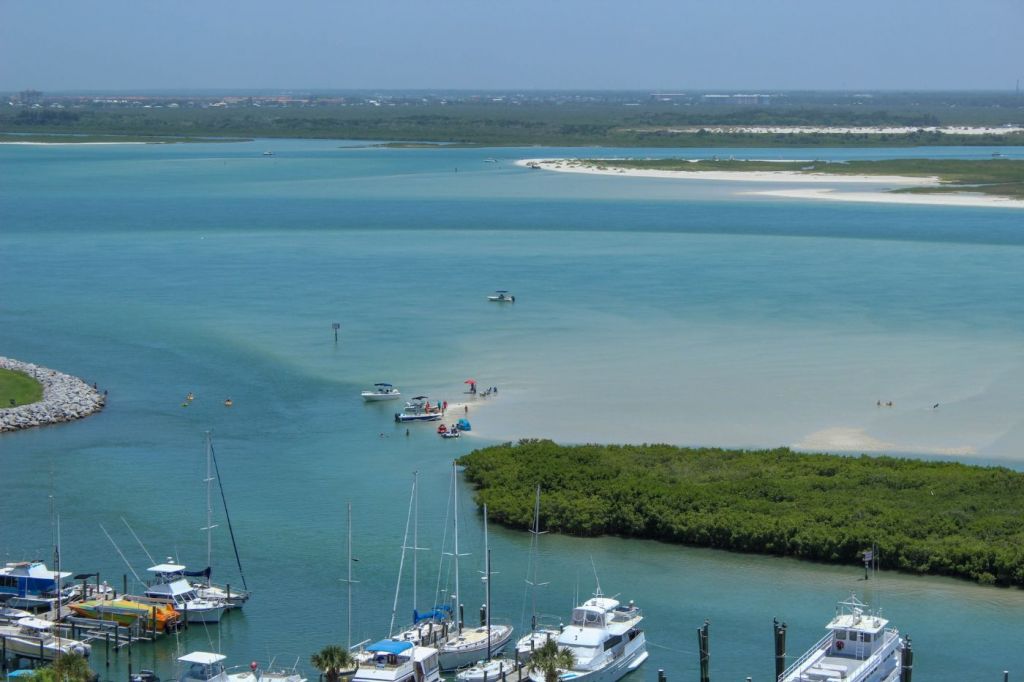
On this page:
Best liveaboard marinas in florida, top-rated liveaboard marinas in northwest florida, exceptional liveaboard marinas in north florida, affordable liveaboard marinas in central florida, high-end liveaboard marinas in south florida, top-tier liveaboard marinas in east coast florida, choosing the right marina in florida.
Some of the most exceptional liveaboard Marinas are located in Northwest Florida, such as Bay Point Marina, Legendary Marina, Sandestin Marina, and Green Cove Springs Marina in North Florida. They come with world-class amenities and top-notch security, but they also have luxurious prices.
If you're after affordability, liveaboard marinas in Central Florida including Monroe Harbour Marina, Ortega Villa Yacht Marina, and Twin Dolphin Marina are some of your go-to places. They provide basic amenities like showers, restrooms, and laundry facilities, as well as additional amenities like Wi-Fi and cable TV.
Although not as extensive or luxurious as those provided by marinas with higher ratings, they are still of good quality and provide a comfortable and convenient experience for boaters and yacht owners.
When it comes to security, they can provide basic security measures like security cameras, gated access, and security personnel. However, the security measures may not be as extensive or sophisticated, and could potentially be vulnerable to security risks such as theft, vandalism, or other criminal activities.
The table below shows some of the best liveaboard marinas in Northwest Florida (also called "Panhandle") and the estimated monthly cost for each based on three budget types:
| Budget Type | Marina Name | Amenities | Security | Estimated Monthly Cost | Overall Rating |
|---|---|---|---|---|---|
Low budget options | Pensacola Shipyard | ⭐⭐⭐⭐ | ⭐⭐⭐ | $300 - $500 | ⭐⭐⭐ |
| Pensacola Beach Marina | ⭐⭐⭐⭐ | ⭐⭐⭐ | $300 - $500 | ⭐⭐⭐ | |
| Palafox Pier & Yacht Harbor | ⭐⭐⭐⭐ | ⭐⭐⭐ | $300 - $500 | ⭐⭐⭐ | |
| Bayou Grande Marina | ⭐⭐⭐ | ⭐⭐⭐ | $300 - $500 | ⭐⭐ | |
| Shalimar Yacht Basin | ⭐⭐⭐ | ⭐⭐⭐ | $300 - $500 | ⭐⭐ | |
Medium budget options | Destin Harbor Boardwalk | ⭐⭐⭐⭐ | ⭐⭐⭐⭐ | $500 - $1,000 | ⭐⭐⭐⭐⭐ |
| Fort Walton Beach Landing | ⭐⭐⭐⭐ | ⭐⭐⭐⭐ | $500 - $1,000 | ⭐⭐⭐⭐⭐ | |
| Niceville Yacht Club | ⭐⭐⭐⭐ | ⭐⭐⭐⭐ | $500 - $1,000 | ⭐⭐⭐⭐ | |
High budget options | Bay Point Marina | ⭐⭐⭐⭐⭐ | ⭐⭐⭐⭐⭐ | $1,000+ | ⭐⭐⭐ |
| Legendary Marina | ⭐⭐⭐⭐⭐ | ⭐⭐⭐⭐⭐ | $1,000+ | ⭐⭐⭐⭐⭐ | |
| Sandestin Marina | ⭐⭐⭐⭐ | ⭐⭐⭐⭐⭐ | $1,000+ | ⭐⭐⭐⭐⭐ |
Pensacola Shipyard
Located in Pensacola, Florida, this marina offers a variety of amenities including a ship store, fuel dock, laundry facilities, and boat repair services. It is conveniently located near downtown Pensacola and has a friendly community of boaters.
Pensacola Beach Marina
Located on Little Sabine Bay, Pensacola Beach Marina is a great option for liveaboards. The marina offers a variety of amenities, including a pool, laundry facilities, and a ship store. It's also just a short walk from the beach which makes it a great spot for those who love to swim and sunbathe.
Palafox Pier & Yacht Harbor
Also located in Pensacola, this marina offers a variety of amenities including a swimming pool, fitness center, laundry facilities, and a restaurant. It's a good liveaboard marina because it's located in the heart of downtown Pensacola and offers easy access to restaurants, shops, and entertainment.
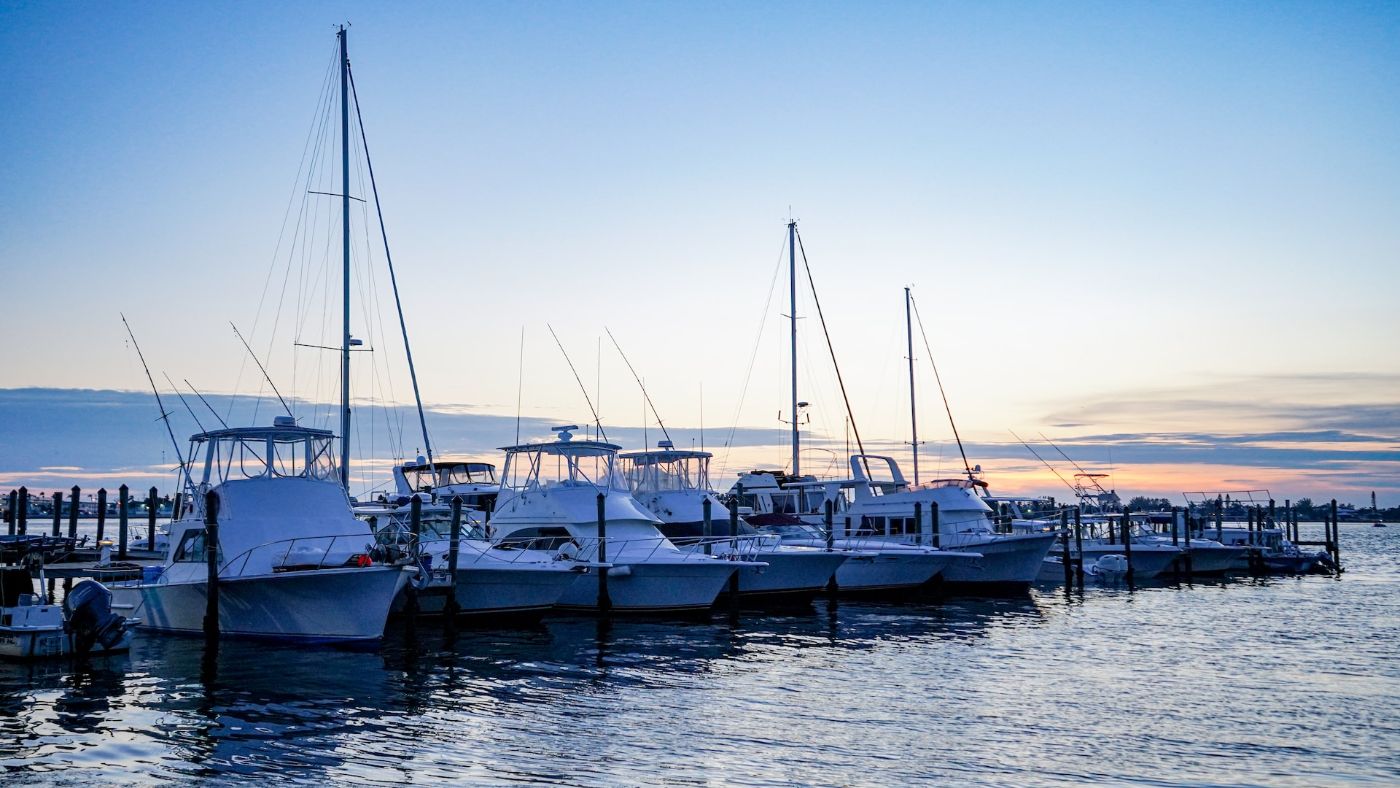
Bayou Grande Marina
Bayou Grande Marina offers a variety of amenities including a ship store, boat rental services, and a fuel dock. It's one of the best live-aboard marinas because it's located in a quiet and peaceful area with easy access to the Gulf of Mexico.
Shalimar Yacht Basin
The Shalimar Yacht Basin is located in Shalimar, Florida, which is a small town in Okaloosa County. The marina offers a variety of amenities for liveaboard residents, including a full-service fuel dock, clean restroom and shower facilities, laundry facilities, pump-out station, Wi-Fi access, and cable TV.
The marina is conveniently located near many popular attractions, such as the Gulf of Mexico, Destin Harbor, and the Emerald Coast. The marina also has a strong sense of community, with many social events and activities organized throughout the year, making it a great place to meet other boaters and make new friends.
Destin Harbor Boardwalk
The Destin Harbor Boardwalk is a great spot for liveaboards who want to be close to all the action. The boardwalk is home to several restaurants, shops, and attractions, and it's just a short walk from several marinas.
This marina is also home to several other popular attractions, such as the Destin History and Fishing Museum, the HarborWalk Village, and the Gulfarium Marine Adventure Park. These attractions offer a variety of activities for visitors, including fishing charters, dolphin-watching tours, and water sports rentals.
Fort Walton Beach Landing
Fort Walton Beach Landing is a marina located in Fort Walton Beach, Florida, on the Gulf of Mexico. Some of the amenities offered here include:
- Electricity and water hookups
- Pump-out station
- Restrooms and showers
- Laundry facilities
- Picnic areas and grills
- Fishing pier
This marina is situated in a protected harbor, which means that boaters are sheltered from the wind and waves that can sometimes make life on a boat uncomfortable. Additionally, the marina is located near many restaurants, shops, and other attractions, making it easy for liveaboards to access everything they need.
Niceville Yacht Club
Niceville Yacht Club is another marina located in the Florida Panhandle, specifically in Niceville, Florida. It's a popular destination for boaters and liveaboards due to its location on the beautiful Choctawhatchee Bay and its great amenities, such as:
- Swimming pool
- Clubhouse with kitchen and lounge area
This marina also hosts regular events and activities for its members, which helps to foster a sense of camaraderie among boaters and liveaboards.
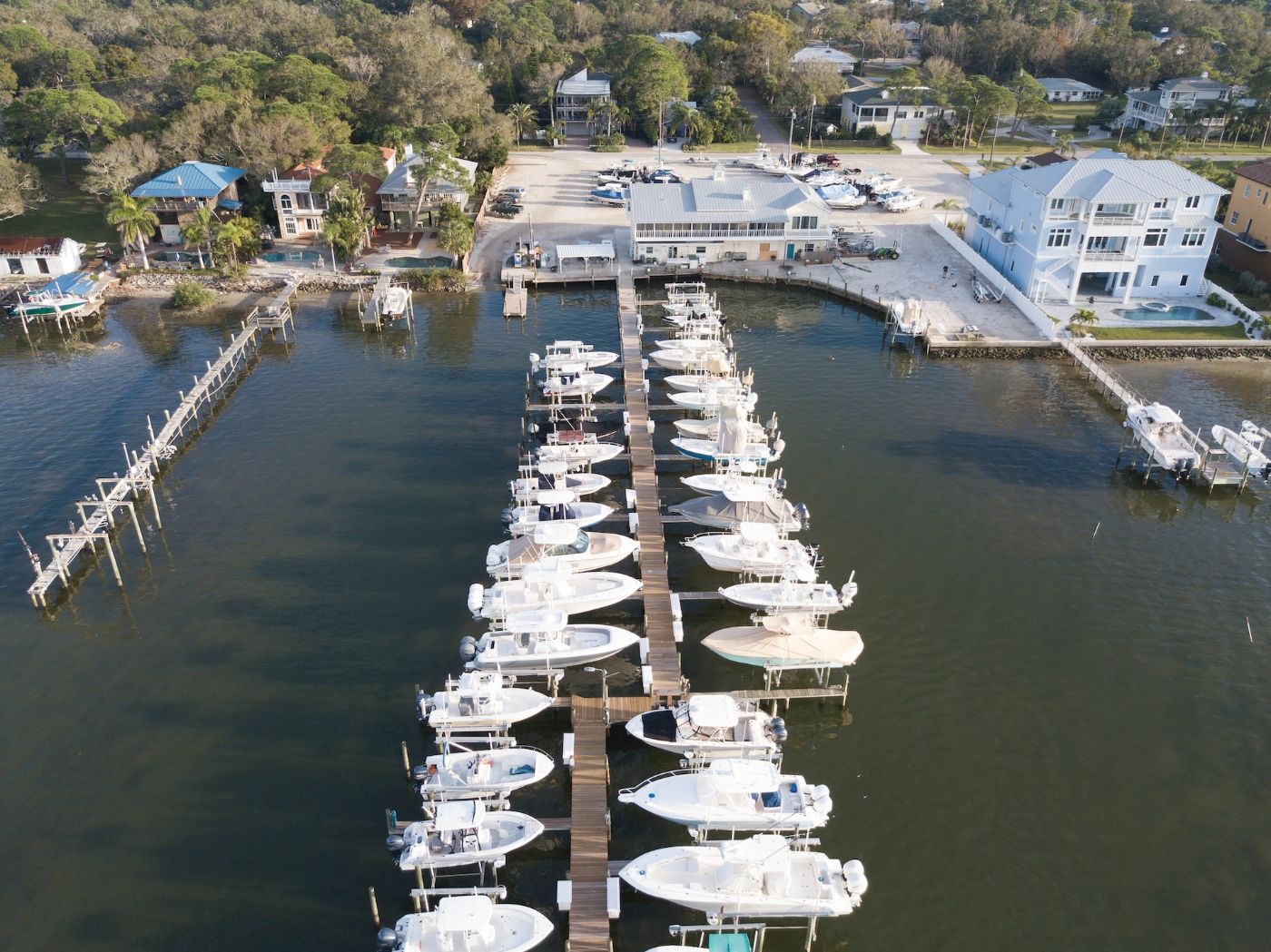
Bay Point Marina
Bay Point Marina is located on Grand Lagoon in Panama City Beach. The marina offers a variety of amenities, including a pool, a fitness center, and laundry facilities.
Additionally, Bay Point Marina provides easy access to the Gulf of Mexico and St. Andrews Bay. The marina offers boat slips for rent, as well as boat rentals for those who don't own their own vessel. Here's how much a boat slip costs in Miami, Florida.
Fishing charters are also available from Bay Point Marina, allowing visitors to try their luck at catching a variety of fish species, including red snapper, grouper, and king mackerel.
Legendary Marina
Legendary Marina is located in Destin, Florida, and it offers high-end amenities for boaters. The marina is situated on Choctawhatchee Bay and has easy access to the Gulf of Mexico.
It also offers a variety of services, including boat rentals, fueling, and yacht sales. The marina also features a restaurant, a pool, and a fitness center. The liveaboard options at Legendary Marina come with a high price tag due to the luxurious amenities and services that the marina offers.
Sandestin Marina
Sandestin Marina is also located in Destin, Florida, and it offers a wide range of amenities for boaters. Sandestin Marina offers boat rentals, fueling, and yacht sales, as well as a variety of dining options, shopping, and entertainment.
The liveaboard options at Sandestin Marina are also priced higher due to the luxurious amenities and services that the marina offers, including access to the Sandestin Golf and Beach Resort.
The table below shows some of the best liveaboard marinas in North Florida and the estimated monthly cost for each based on three budget types:
| Budget Type | Marina Name | Amenities | Security | Estimated Monthly Cost | Overall Rating |
|---|---|---|---|---|---|
| Low budget option | Green Cove Springs Marina | ⭐⭐⭐⭐⭐ | ⭐⭐⭐⭐⭐ | $350 - $500 | ⭐⭐⭐⭐⭐ |
| Medium budget option | Marina at Ortega Landing | ⭐⭐⭐⭐⭐ | ⭐⭐⭐⭐ | $600 - $800 | ⭐⭐⭐⭐⭐ |
High budget options | Jacksonville City Marina | ⭐⭐⭐⭐⭐ | ⭐⭐⭐ | $1,000 - $1,500 | ⭐⭐⭐⭐ |
| Panama City Marina | ⭐⭐⭐ | ⭐⭐⭐ | $1,000 - $1,500 | ⭐⭐⭐ | |
| St. Augustine Municipal Marina | ⭐⭐⭐ | ⭐⭐⭐ | $1,000 - $1,500 | ⭐⭐⭐ |
Green Cove Springs Marina
Green Cove Springs Marina is located just south of Jacksonville and is a great option for boaters looking for a more relaxed atmosphere. The marina has 220 slips, with rates starting at $10 per foot per month. Some of the amenities available include:
- Showers and restrooms
- On-site restaurant
Green Cove Springs Marina is also located near several great attractions, including the historic town of Green Cove Springs and the St. Johns River.
Marinas at Jacksonville
Jacksonville is a great place to live aboard your boat, with several marinas to choose from. One of the best options is the Marina at Ortega Landing, which offers a range of amenities and services for boaters. The marina has 192 slips, with rates starting at $15 per foot per month. Some of the amenities available include:
- Fitness center
Another great option is the Jacksonville City Marina, located in the heart of downtown Jacksonville, and has 78 slips, with rates starting at $12 per foot per month. Some of the amenities available include:
- 24-hour security
If you plan to keep your boat in a marina in Florida, find out the different slip rates for each marina from this article.
Panama City Marina
If you are looking for a live-aboard marina on the Gulf Coast, the Panama City Marina is a great option. The marina has 125 slips, with rates starting at $12 per foot per month. Some of the amenities available include:
The Panama City Marina is also located near several great attractions, including the Gulf of Mexico and St. Andrews State Park.
St. Augustine Municipal Marina
The St. Augustine Municipal Marina is a marina located in the historic city of St. Augustine, Florida. It offers a variety of amenities for boaters, including fuel, water, electricity, restrooms, showers, laundry facilities, and a pump-out station.
The marina is conveniently located near many popular attractions, including the historic district, restaurants, and shops. It is also a popular spot for fishing and boating enthusiasts, with easy access to the Intracoastal Waterway and the Atlantic Ocean.
The table below shows some of the best liveaboard marinas in Central Florida and the estimated monthly cost for each based on three budget types:
| Budget Type | Marina Name | Amenities | Security | Estimated Monthly Cost | Overall Rating |
|---|---|---|---|---|---|
Low budget options | Monroe Harbour Marina | ⭐⭐ | ⭐⭐⭐ | $500 - $800 | ⭐⭐ |
| Ortega Villa Yacht Marina | ⭐⭐ | ⭐⭐ | $500 - $800 | ⭐⭐ | |
| Medium budget option | Twin Dolphin Marina | ⭐⭐⭐ | ⭐⭐ | $800 - $1,500 | ⭐⭐⭐ |
| High budget option | Sanford Boat Works and Marina | ⭐⭐⭐ | ⭐⭐⭐ | $1,500+ | ⭐⭐⭐ |
Monroe Harbour Marina
Monroe Harbour Marina is a full-service marina located in Sanford, Florida, on the shores of Lake Monroe. The marina features 200 wet slips that can accommodate boats up to 60 feet in length.
The slips are equipped with water and electrical hookups, and the marina also provides Wi-Fi and cable TV services. The marina's fuel dock offers both gas and diesel fuel, and pump-out services are available for waste disposal.
In addition to its boating services, the marina also has a clubhouse with a lounge area, kitchen, and laundry facilities. There is also a swimming pool, a hot tub, and a picnic area available for use.
The location of Monroe Harbour Marina is ideal for boaters who want to explore the St. Johns River and the many lakes in the area. It is also within driving distance of many popular attractions, such as Disney World and Universal Studios in Orlando.
Ortega Villa Yacht Club Marina
Located in Jacksonville, Ortega Villa Yacht Club Marina is a great option for boaters looking for a quiet and peaceful marina. The marina offers 24-hour security, laundry facilities, and a clubhouse with a kitchen and lounge area.
The dockage rates are affordable, with slips ranging from $9 to $12 per foot per month. The marina can accommodate boats up to 50 feet in length.
Twin Dolphin Marina
Twin Dolphin Marina is located in Bradenton, just south of Tampa Bay. This marina offers a variety of amenities, including a heated pool, laundry facilities, and a ship store.
The marina also has a restaurant and bar on site. The dockage rates are reasonable, with slips ranging from $12 to $16 per foot per month. They can accommodate boats up to 60 feet in length.
Sanford Boat Works and Marina
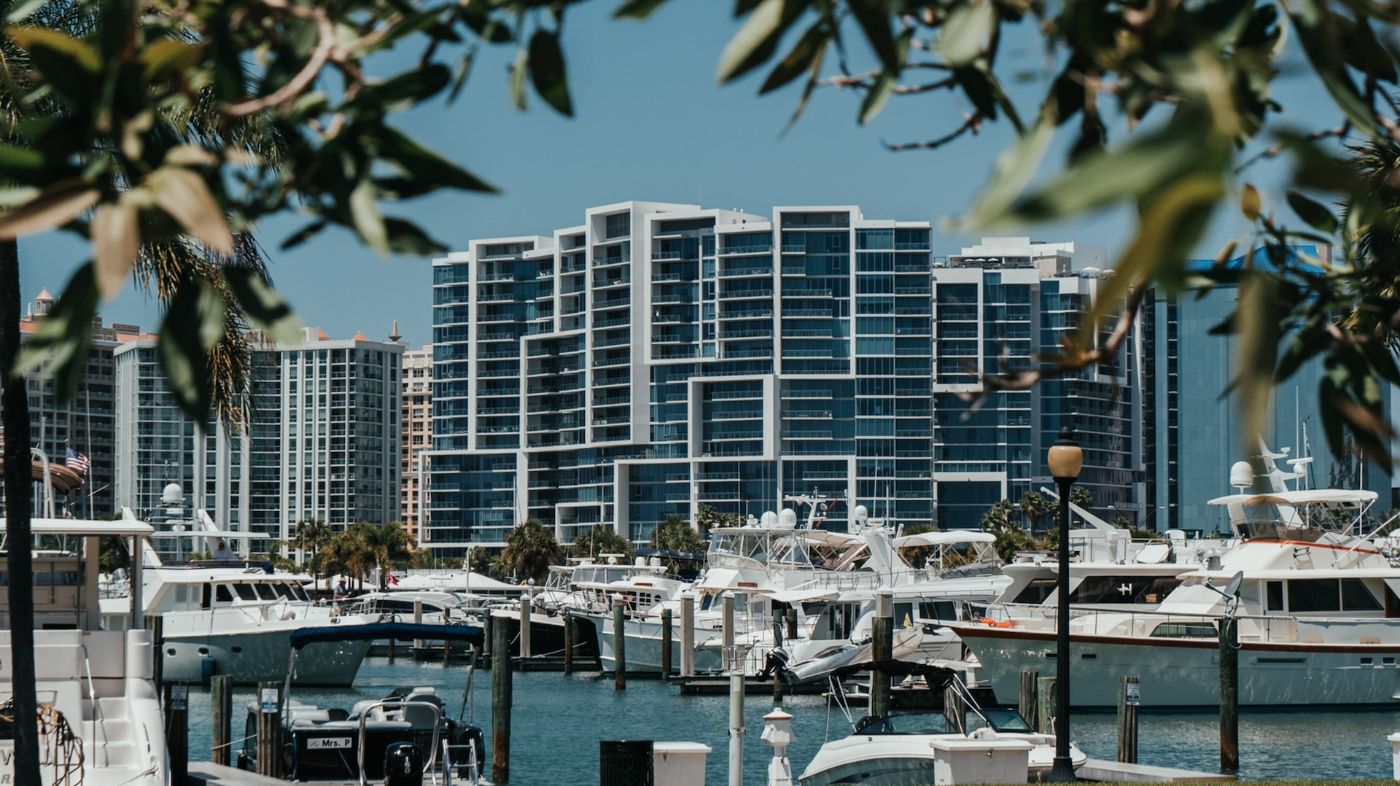
Sanford Boat Works and Marina is located on Lake Monroe in Sanford, just north of Orlando. This marina offers a wide range of amenities, including a fuel dock, pump-out station, and laundry facilities.
The dockage rates are more affordable, with slips ranging from $8 to $14 per foot per month. The marina can also accommodate boats up to 60 feet in length.
The table below shows some of the best liveaboard marinas in South Florida and the estimated monthly cost for each based on three budget types:
| Budget Type | Marina Name | Amenities | Security | Estimated Monthly Cost | Overall Rating |
|---|---|---|---|---|---|
Low budget options | Cooley's Landing Marina | ⭐⭐⭐ | ⭐⭐⭐ | $500 - $700 | ⭐⭐⭐ |
| Legacy Harbour Marina | ⭐⭐⭐ | ⭐⭐⭐ | $500 - $700 | ⭐⭐⭐ | |
Medium budget options | Garrison Bight Marina | ⭐⭐⭐ | ⭐⭐⭐ | $800 - $1,200 | ⭐⭐⭐ |
| Crandon Marina | ⭐⭐⭐ | ⭐⭐⭐ | $800 - $1,200 | ⭐⭐⭐ | |
| Dinner Key Marina | ⭐⭐⭐ | ⭐⭐⭐ | $800 - $1,200 | ⭐⭐⭐ | |
| Key West Bight Marina | ⭐⭐⭐ | ⭐⭐⭐ | $800 - $1,200 | ⭐⭐⭐ | |
| Burnt Store Marina | ⭐⭐⭐ | ⭐⭐⭐ | $800 - $1,200 | ⭐⭐⭐ | |
High budget options | Lauderdale Marine Center | ⭐⭐⭐ | ⭐⭐⭐⭐ | $1,500 - $2,500 | ⭐⭐⭐⭐ |
| Opal Key Resort and Marina | ⭐⭐⭐⭐ | ⭐⭐⭐ | $1,500 - $2,500 | ⭐⭐⭐⭐ | |
| Miami Beach Marina | ⭐⭐⭐ | ⭐⭐⭐⭐ | $1,500 - $2,500 | ⭐⭐⭐⭐ |
Marinas in Miami
Miami is a vibrant city with plenty of marinas to choose from. Here are a few of the best liveaboard marinas in Miami:
Miami Beach Marina
Located in the heart of South Beach, this marina offers easy access to the city's restaurants, shops, and nightlife. It has 400 slips that can accommodate boats up to 250 feet long, and it offers amenities such as cable TV, Wi-Fi, and laundry facilities.
Dinner Key Marina
This marina is located in Coconut Grove and has 582 slips that can accommodate boats up to 175 feet long. It offers amenities such as a fuel dock, pump-out station, and laundry facilities.
Crandon Marina
Located on Key Biscayne, this marina has 200 slips that can accommodate boats up to 50 feet long. It offers amenities such as a fuel dock, a pump-out station, and a restaurant. It is also one of the cheapest places to dock your boat in Florida , with rates from $2.50 per foot per day for wet slips.
Marinas in Key West
Here are a few of the best liveaboard marinas in Key West:
Opal Key Resort and Marina
This marina is located in the heart of Old Town Key West and offers easy access to the city's restaurants, shops, and nightlife.
It has 245 slips that can accommodate boats up to 200 feet long, and it offers amenities such as a fuel dock, pump-out station, and laundry facilities.
Garrison Bight Marina
This marina is located on the north side of Key West and has 140 slips that can accommodate boats up to 70 feet long. It offers amenities such as a fuel dock, pump-out station, and a ship store.
Key West Bight Marina
This marina is located in the heart of Old Town Key West and has 33 slips that can accommodate boats up to 140 feet long. It offers amenities such as a fuel dock, pump-out station, and laundry facilities.
Marinas in Fort Lauderdale
Fort Lauderdale is known as the "Venice of America" because of its extensive network of canals and waterways. Here are a few of the best liveaboard marinas in this area:
Lauderdale Marine Center
This marina is located on the New River and has 160 slips that can accommodate boats up to 200 feet long. It offers amenities such as a fuel dock, pump-out station, and a ship store.
Cooley's Landing Marina
This marina is located on the New River and has 40 slips that can accommodate boats up to 60 feet long. It offers amenities such as a fuel dock, pump-out station, and laundry facilities.
Marinas at Southwest Florida
Legacy harbour marina.
Located in the heart of downtown Fort Myers, Legacy Harbour Marina is a great option for those who want to be close to restaurants, shops, and other amenities.
The marina offers floating docks, 30/50/100-amp power, Wi-Fi, laundry facilities, and a fitness center. There's also a pool and hot tub on-site, as well as a waterfront restaurant and bar. The marina is also pet-friendly, so you can bring your furry friend along for the adventure.
Burnt Store Marina
Located in Punta Gorda, Burnt Store Marina is a full-service marina with plenty of amenities for liveaboards. The marina offers floating docks, 30/50-amp power, Wi-Fi, laundry facilities, and a fitness center.
Burnt Store Marina is located near several popular boating destinations, including Boca Grande, Charlotte Harbor, and the Gulf of Mexico.
The table below shows some of the best liveaboard marinas in East Coast Florida and the estimated monthly cost for each based on three budget types:
| Budget Type | Marina Name | Amenities | Security | Estimated Monthly Cost | Overall Rating |
|---|---|---|---|---|---|
| Low budget option | Riverside Marina | ⭐⭐⭐ | ⭐⭐⭐ | $400 - $500 | ⭐⭐⭐ |
| Medium budget option | Harbortown Marina | ⭐⭐⭐⭐ | ⭐⭐⭐ | $800 - $1,000 | ⭐⭐⭐⭐ |
High budget options | Palm Harbor Marina | ⭐⭐⭐⭐ | ⭐⭐⭐⭐ | $1,500 - $2,000 | ⭐⭐⭐⭐ |
| Sailfish Marina Resort | ⭐⭐⭐⭐⭐ | ⭐⭐⭐ | $1,500 - $2,000 | ⭐⭐⭐⭐ | |
| Bahia Mar Marina | ⭐⭐⭐⭐ | ⭐⭐⭐⭐ | $1,500 - $2,000 | ⭐⭐⭐⭐ | |
| Pier Sixty-Six Marina | ⭐⭐⭐⭐ | ⭐⭐⭐ | $1,500 - $2,000 | ⭐⭐⭐ |
Riverside Marina
This marina is located on the Indian River and offers affordable rates for liveaboards. You'll have access to laundry facilities, restrooms, and showers, as well as a swimming pool and picnic area.
The marina offers boat slips, dry storage, fuel, bait, tackle, and a ship store. It is a full-service marina that can accommodate boats up to 120 feet in length.
Harbortown Marina
Harbortown Marina is located on the Indian River Lagoon, just a short distance from the Fort Pierce Inlet and the Atlantic Ocean. The marina offers 100 wet slips and 400 dry storage spaces for boats up to 100 feet in length.
In addition to the amenities mentioned, Harbortown Marina also has a fuel dock, pump-out station, and a ship store that sells boating supplies, snacks, and beverages.
The marina is located in a gated community and has 24-hour security. It is conveniently located near downtown Fort Pierce, which has a variety of restaurants, shops, and attractions for boaters to enjoy.
Palm Harbor Marina
Palm Harbor Marina is a popular destination for liveaboards, with over 200 slips available for long-term rentals. The marina offers a range of amenities to make life on board more comfortable, including a fitness center, laundry facilities, and a swimming pool. There are also several restaurants and shops located within walking distance of the marina.
In addition to its amenities, Palm Harbor Marina also offers a range of services to boaters, including fueling, pump-out, and boat maintenance and repair. The marina has a team of experienced technicians who can handle everything from routine maintenance to major repairs.
Sailfish Marina Resort
Sailfish Marina Resort is a popular marina located on Singer Island in Palm Beach County, Florida. They offer a variety of amenities to boaters, including a restaurant, a swimming pool, and laundry facilities.
The restaurant called the Sailfish Marina Restaurant, is known for its fresh seafood and stunning waterfront views. The swimming pool is a great place to relax and cool off after a day out on the water, and the laundry facilities make it easy to keep your clothes and linens clean while on board.

Sailfish Marina Resort is also a popular destination for sportfishing enthusiasts. The marina hosts several fishing tournaments throughout the year and is home to a number of charter fishing boats.
Bahia Mar Marina
Bahia Mar Marina is located in the heart of Fort Lauderdale, Florida, and is one of the most popular marinas in the area. It offers a luxurious and comfortable experience for those who choose to live aboard their boats.
The marina is equipped with state-of-the-art facilities, including a fitness center, a swimming pool, and laundry facilities, making it an ideal choice for those who want to enjoy the best of both worlds - the freedom of living on a boat and the amenities of a luxury resort.
Pier Sixty-Six Marina
Pier Sixty-Six Marina is another high-end option in Fort Lauderdale, which offers a variety of amenities, including a spa, a fitness center, and a swimming pool.
In addition to these amenities, Pier Sixty-Six Marina also provides guests with access to a variety of dining options, ranging from casual cafes to upscale restaurants. Pier Sixty-Six Marina is also home to a variety of events throughout the year, including boat shows, fishing tournaments, and other water-related activities.
Below are some factors to keep in mind when selecting the best liveaboard marina for your needs:
Choose one with the most convenient location
You'll want to find a marina that is conveniently located near your work, family, and friends. You might also want to consider the surrounding area and the amenities available nearby.
For example, if you enjoy fishing, you may want to choose a marina that is located near good fishing spots. One well-known spot for these activities is the Florida Keys located off the southern coast of Florida.
Choose a marina that offers the amenities you need
Some marinas offer laundry facilities, swimming pools, and fitness centers. Others may have restaurants, bars, and shops on-site. You might need to make a list of the amenities that are important to you and choose a marina that offers them.
A marina with a high rating means that the marina provides a wider range of high-quality amenities that are well-maintained and easily accessible to boaters and yacht owners.
Check the price
When you own a boat in Florida , one of the recurring expenses goes for docking and slip fees in marinas. Some marinas are more expensive than others, such as those found in Northwest Florida like Bay Point Marina, Sandestin Marina, and Legendary Marina.
But, there are also affordable marinas such as Monroe Harbor Marina in Central Florida and Riverside Marina on the East Coast. However, keep in mind that some marinas charge additional fees for liveaboard status, so try to factor those costs into your budget as well.
Pick one with good security measures
You'll want to choose a marina that has good security measures in place to protect your boat and your belongings. Therefore, look for ones that have security cameras, gated entrances, and on-site security personnel.
Leave a comment
You may also like, the cheapest place to dock a boat in florida (7 places).
Florida, known for its beautiful coastlines and sunny weather, is a popular destination for boating enthusiasts. So, it's no wonder that you're interested in …
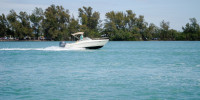
How Much to Rent a Yacht in Florida? (Orlando, Tampa, Keys)
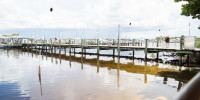
How Much Does It Cost To Keep a Boat In a Marina in Florida?

How Much to Rent a Yacht in Miami? (2023 Breakdown)

How Much Does It Cost to Buy a Boat Slip? (5 Examples)
Posted 2024-08-29 11:36
Contact Information:
Cozy Live Aboard - $35,000 (U District)

QR Code Link to This Post
post id: 7780051669
posted: 2024-08-29 11:36
updated: 2024-08-29 11:39
♥ best of [ ? ]
refresh the page.
Cozy Live Aboard - boats - by owner - marine sale - craigslist
1938 Vic Frank- newly furnished and renovated. Located in the heart of Seattle on the north part of Lake union, only blocks away from the Link station, U district, gasworks park. This historical gem...
- on si on si on si
- si swimsuit si swimsuit si swimsuit
- si sportsbook si sportsbook si sportsbook
- si tickets si tickets si tickets
- shop si shop si shop

Skull and Bones: How to use fast travel
- Author: Stoyan Ovcharov
Skull and Bones is a pirate game, so, naturally, it’s all about sailing with your ship, exploring the open sea, sinking other ships, and just doing pirate stuff.
While exploring the vast open-world map of Skull and Bones can be fun, sometimes you just need to go back to a specific outpost to restock your ship, or hand in a completed contract.
There is a fast travel option in Skull and Bones, but you don’t have it unlocked from the beginning, and the game doesn’t really tell you about it.
Here’s everything there is to know about how to fast travel in Skull and Bones .

Skull and Bones FAQ: everything you need to know before buying
How to fast travel in skull and bones.
To use fast travel in Skull and Bones, you must first reach Sainte-Anne, as the option is not available during the opening section of the game. Once you’ve discovered a second outpost, the fast travel option will become available from the ship’s menu.

Fast travel only becomes available after you've reached Sainte-Anne and have visited at least one outpost.
You can fast travel only to outposts you have visited before , so make sure you disembark at docking points you may want to revisit. Unlocked fast travel points are indicated on the map by a small icon with two arrows pointing right.

You fast travel from the set sail menu, where you can also manage your ship.
Ubisoft / GLHF
To fast travel, while you are at an Outpost or Den, board your ship and select ‘Fast Travel’, instead of ‘Set Sail’. Hover over an outpost on the map, and if you’ve been there before, the option to fast travel will appear at the bottom of its details box.
Another way to fast travel is to just open the map while you're in an outpost or den, and then select your destination.
Fast travel is only available to and from Outposts and Dens , where you can disembark from your ship. Smaller pass-by points of interest that you can only interact with while sailing are not valid fast travel destinations. Fast travel is not available while you're sailing in the open sea.

Settlements, like Palisade Bay, are not available as fast travel destinations.
How much does it cost to fast travel in Skull and Bones
Unlike other open-world games , Skull and Bones won’t let you fast travel for free . Using fast travel costs Silver, depending on the distance you want to skip. The amount required is displayed in the upper-right corner of the screen before you confirm your destination.

Fast travel to Sainte-Anne from Lanitra would cost you 260 Silver.
A trip from Sainte-Anne to Lanitra, for example, costs 260 Silver, but a jump from Lanitra to Fort Louis will set you back 335 Silver.

Skipping the sea all the way to Fort Louis from Lanitra costs well above 300 Silver.
Fast travel does not advance the in-game time, so you don’t have to worry about failing limited-time quests.
If you’re still on the fence about buying the full game, check out our Skull and Bones FAQ . We also have a guide on where to get the Blaster Sloop ship blueprint .

Skull and Bones crowbar: How to get aboard the Exeter
Latest video game news.

Every Fortnite Chapter 5 Season 2 weekly quest

The Super Mario Bros. Movie almost featured Daisy and Birdo

Next Dead By Daylight chapter adds the Unknown as new killer

IMAGES
VIDEO
COMMENTS
Sample Liveaboard Budget. Now that we've covered the basic expenses to expect when living aboard, we'll put together a sample liveaboard budget. The figures are based on someone making a monthly income of $4,000 docking a 30-foot sailboat at a reasonably priced marina. Monthly Expense.
The Aloha 28 is under 30 feet in length, making it relatively inexpensive to dock at most liveaboard-friendly marinas. You can find this affordable liveaboard sailboat for a fraction of the cost of a new boat, as most models sell for around $10,000 to $15,000 in clean and usable condition.
Insurance ($233) If you are a newbie cruiser, your boat insurance options will most likely be limited. Insurance was a considerable expense in our first year. In our second year, the cost dropped from 2.8% of the boat's value to 1.3%. (We now have restricted cruising grounds for July - November.)
It has all the necessary amenities, including a shower, so for the liveaboard lifestyle, this boat definitely deserves to make this list. The single sail catboat design also means it is easy to handle single-handed, which makes for great solitary passages. Expect to pay around $40,000 to $60,000 for this one. Aventura 34
Life as a live aboard is its own reward. Written by: Heather Francis. Heather Francis is from Nova Scotia, Canada. She has worked and lived on boats throughout the world since 2002. In 2008 she and her Aussie partner, Steve, bought Kate, their Newport 41, in California and have been sailing her fulltime since.
Liveaboard sailboats that are cheap but actually good include Westsail 32, Alberg 30, Tayana 37, Catalina 30, Ericson 35, Albin Vega 27, Bristol 32, Morgan 323, Contessa 32, Pearson 365, Hunter 31, Cal 34, and Tartan 30. The prices of these boats range from $5,000 to $50,000 or more. Living aboard a sailboat on a budget doesn't mean you have to ...
Some parts of the country are much more "liveaboard friendly.". And where you find more choices for liveaboard slips, you will likely find better slip prices. For a 40-foot liveaboard boat, you can easily spend anywhere from $300 to $2,000 per month for a slip, simply depending on where you are based.
While the price for a marina slip depends on location, season, and length of the boat, liveaboard slips cost significantly more due to the greater demand for facilities, and the limited amount of liveaboard slips available. A slip in the US costs anywhere between $12/ft per year to $240/ft per year, with an average of roughly $50/ft per year.
Low-budget liveaboard catamarans cost anywhere from $350,000 to $450,000, while high-budget options range from $1,000,000 to $2,000,000. The living space of the best liveaboard catamarans ranges from 77 sqm to 215 sqm, with the higher-budget options generally offering more space.
Essentials: Stowage, Comfort & Connectivity. When you move from a 2,000-square foot house to a 40-foot boat, all the closets are smaller, the cupboards are fewer and there's no two-car garage. In preparation, you'll need to de-clutter kitchen gadgets, tools, mementos and clothing. Keep winter clothes in off-boat storage and your business ...
Older vessels cost anywhere between $30,000 and $100,000. Newer and more comfortable liveaboard catamarans generally start above the $100,000 mark and extend up to $500,000 or more. Best Catamarans to Live On. We chose the following six liveaboard catamarans based on size, interior amenities, handling, and price.
Here's 12 questions to ask yourself when planning to live aboard a boat. By Zuzana Prochazka. September 27, 2018. ... The Cost of Owning a Boat: Budgeting and Financial Planning. Lenny Rudow. June 14, 2018. Boat Reviews. Manic Monday Videos: Boat Goes Full Tilt. Lauren DeVlaming. April 29, 2013.
How to Choose a Sailboat to Live Aboard. Choosing a sailboat to live on is the first step in the process. You'll have to first determine what kind of a sailboat you want, your budget, and what level of space and comfort you're looking for. ... New sailboats cost upwards of $150,000-but don't use this price as a benchmark for used sailboats.
You must understand just how much boat costs increase as the size of boat increases. Boats are already expensive, and the average cost of owning and buying a liveaboard sailboat varies dramatically. But when the boat gets bigger, it needs bigger hardware, lines, rigging, sails, motors…everything.
One parting thought: Living on a boat full time and traveling is like having three or four full-time jobs. Each requires 30-40 hours per week when you include labor, research, and thinking and planning. Boat ownership — basic maintenance and cleaning. Cruising full-time — destination and route planning, weather study.
Escalating urban living costs, particularly in major cities, coupled with the daily routines of life, have led more people to seek a simplified existence on the water. A previous article examined the merits and drawbacks of residing on a boat. This piece delves into the diverse range of liveaboard boat styles.
Here's some expenses you may incur by living on your boat: Boat mortgage payment. Slip fees. Boat insurance. Waste management. Gas. Food and water. The best way to manage expenses is by making a budget and sticking to it. Depending on the size and value of the vessel, boat insurance may be just as expensive as house insurance.
Your budget should cover two main categories: Boat costs: Including maintenance, insurance, fuel and purchasing costs, if applicable. Provision costs: Including utilities, food, electronics and necessity costs. Examples of some costs you may accrue while living on a boat include: Boat registration. Commissioning.
The first cost to consider when living on a sailboat is the marina fees/slip fees. The marina costs for a sailboat are approximately $10 to $20 per foot per month. For example, a sailboat owner with a boat size of 30 feet will typically pay between $300 and $600 per month in slip fees to stay at a marina. A marina will charge a boat owner on a ...
Cost of Owning a Boat in Texas. The cost of owning a boat is determined by the type of boat you want to buy. Jet Skis are the cheapest way to get into boating, costing anywhere from $6,000 to $10,000 but with fewer expenses than larger powerboats or sailboats. However, all boats will have to pay for fuel, maintenance, insurance, and other expenses.
Other costs associated with purchasing a sailing vessel include: Pre-purchase survey reports - These are generally charged per foot and can cost between $10 - $25 per foot depending on the region your boat is in. Boat build material may also factor into the cost with wooden boats attracting higher inspection fees.; Insurance - Liveaboard sailboat insurance, including third-party ...
Summary. Miami Beach Marina, Opal Key Resort and Marina, and Harbortown Marina are some of the best liveaboard options in South Florida. The Miami Beach Marina is situated in a prime location, so you will need to prepare a higher budget between $1,500 and $2,500 per month. East Coast Florida has some excellent liveaboard marinas with above ...
Jeanneau Sun Odyssey 42DS sailboat price. Price: $120,000-$180,000, used. Type: monohull, coastal liveaboard. The Sun Odyssey 42DS is a popular model designed with a cruiser's comfort in mind. If you're looking for a modern boat for coastal sailing that is also affordable, this one fits the bill.
boat type: houseboat. propulsion type: power. length overall (LOA): 36. make / manufacturer: Vic Frank. year manufactured: 1938. QR Code Link to This Post. ... Live aboard available with full dock facilities (wash, shower, and parking) Serious inquiries only. post id: 7780051669. posted: 2024-08-29 11:36.
A full-size replica of a 17th-century Spanish tall ship is set to sail into Weymouth later today. The Galeón Andalucía will sail into the town at around 3.30pm and will stay until 8pm on Monday ...
In a game as vast as the ocean, you will sometimes want to skip the sailing. Skull and Bones does have fast travel, but it's not there from the beginning, it will cost you Silver, and you can't ...